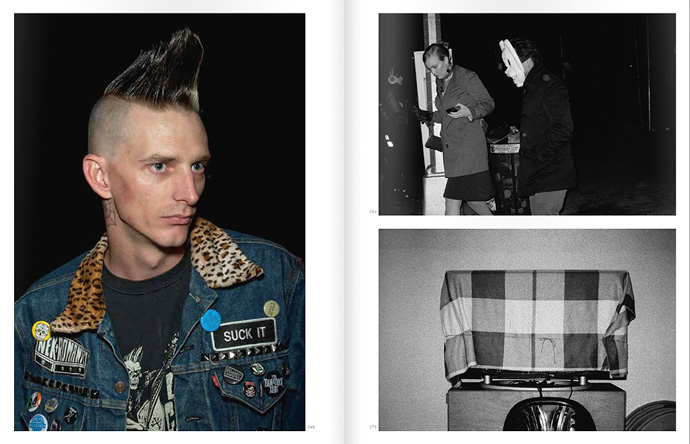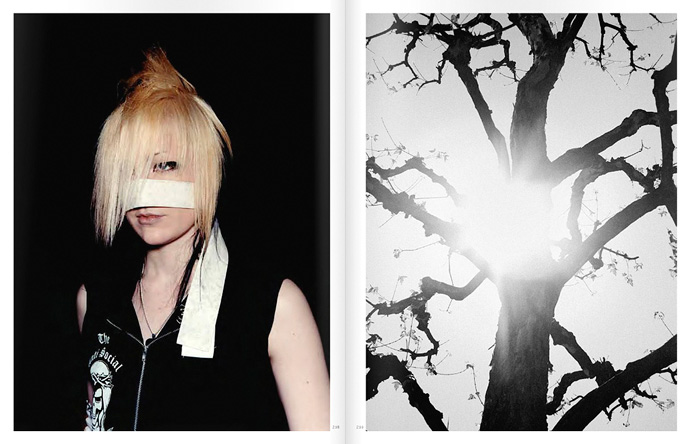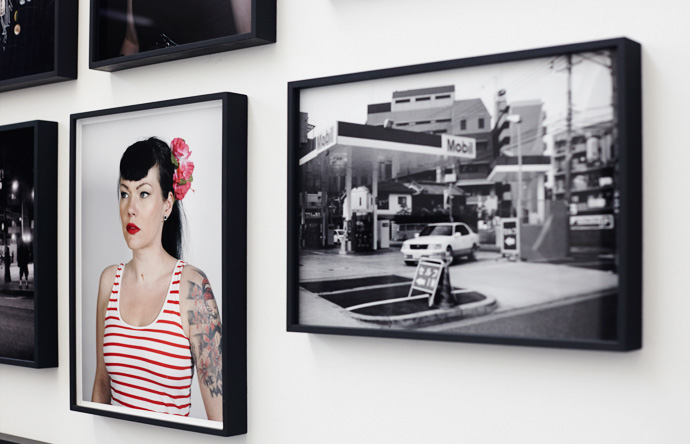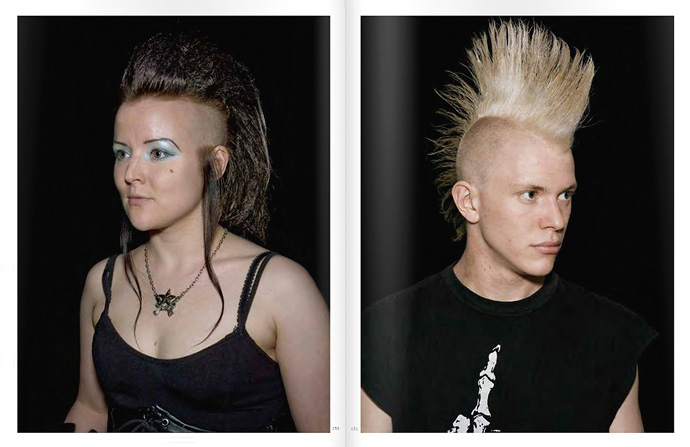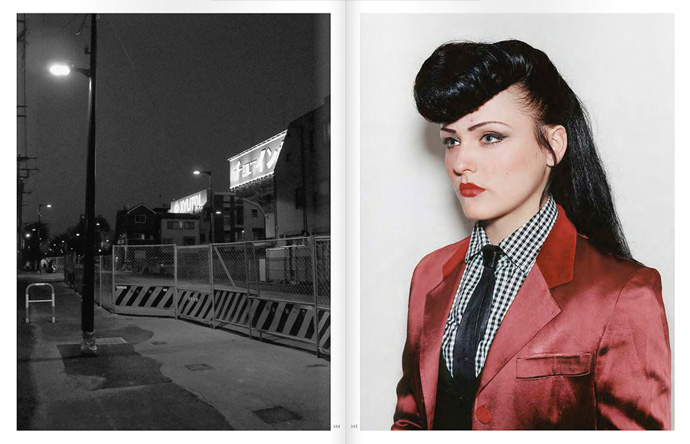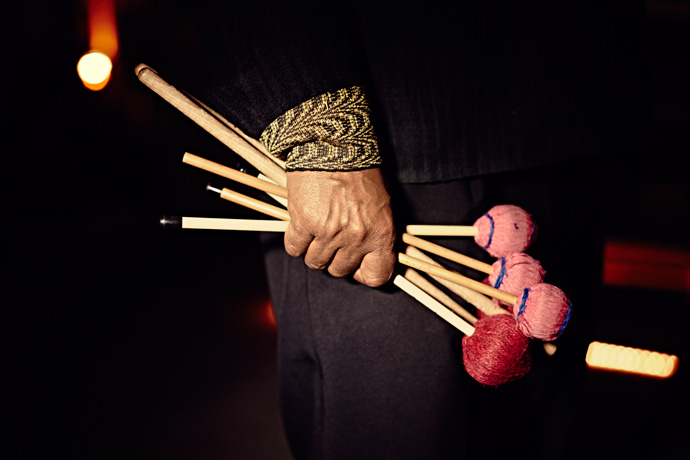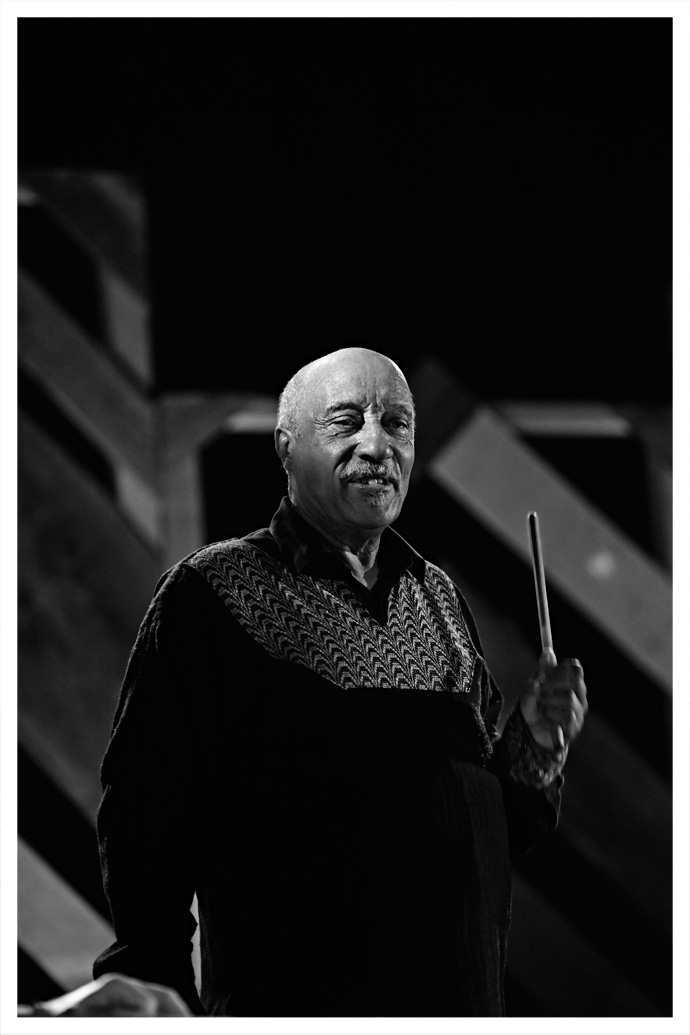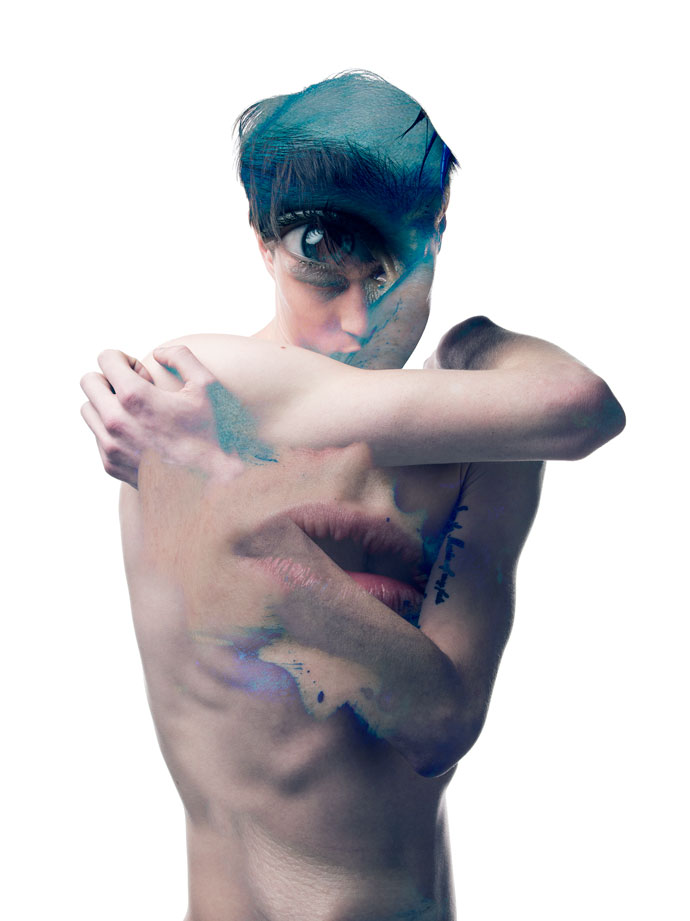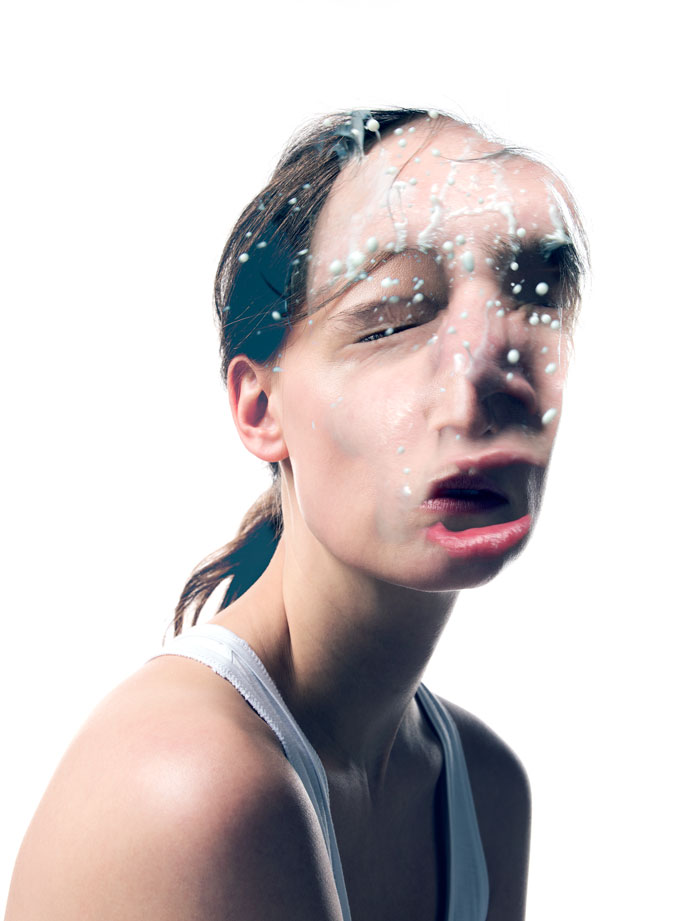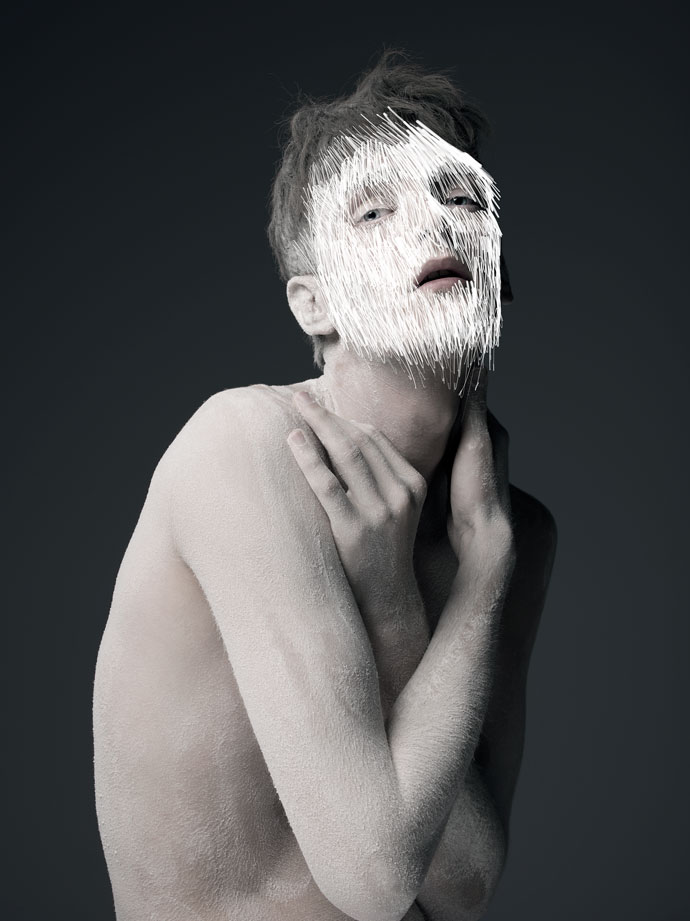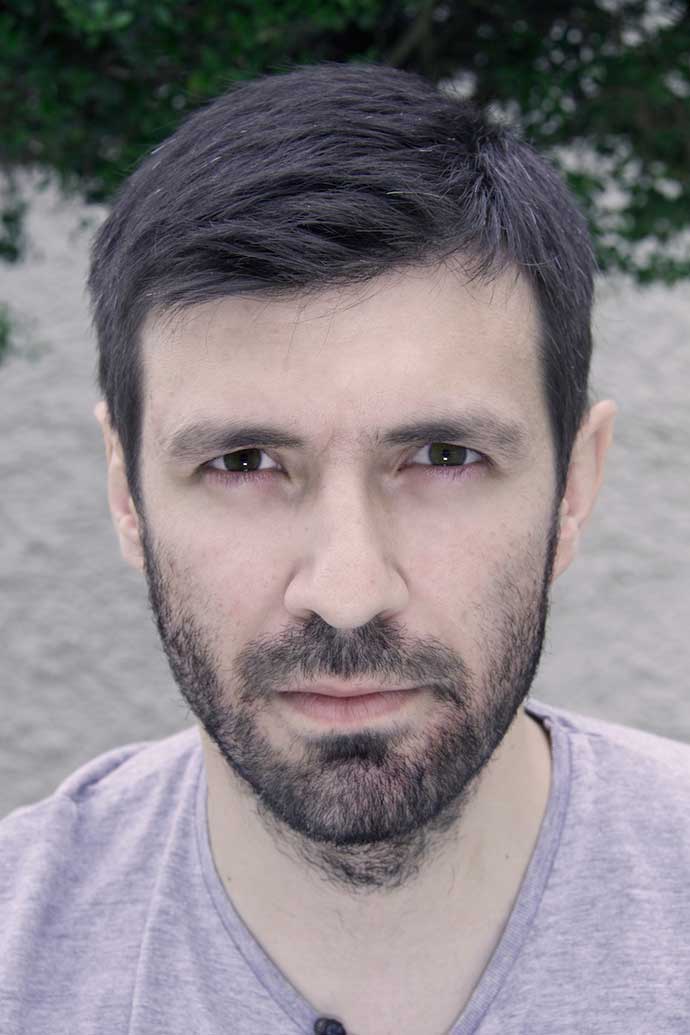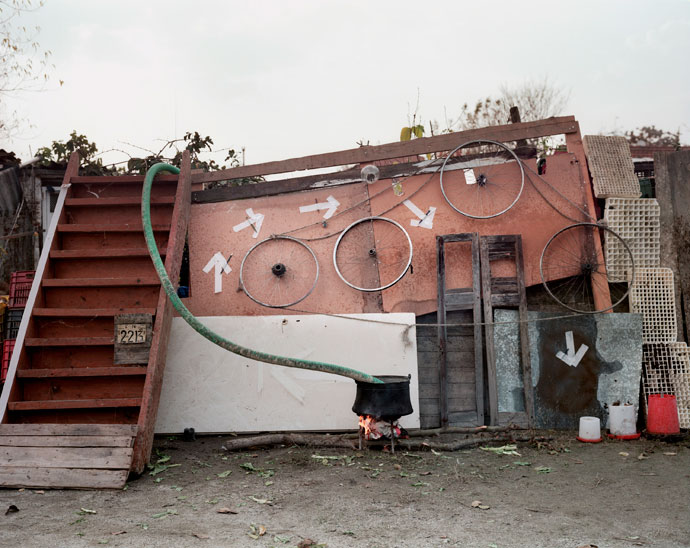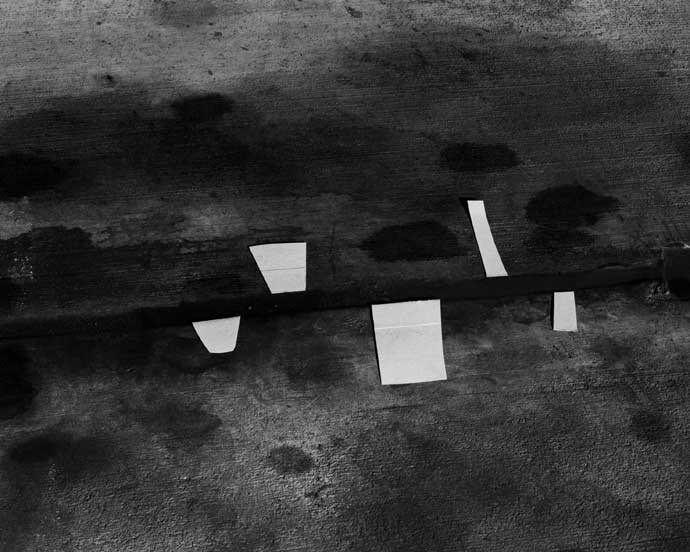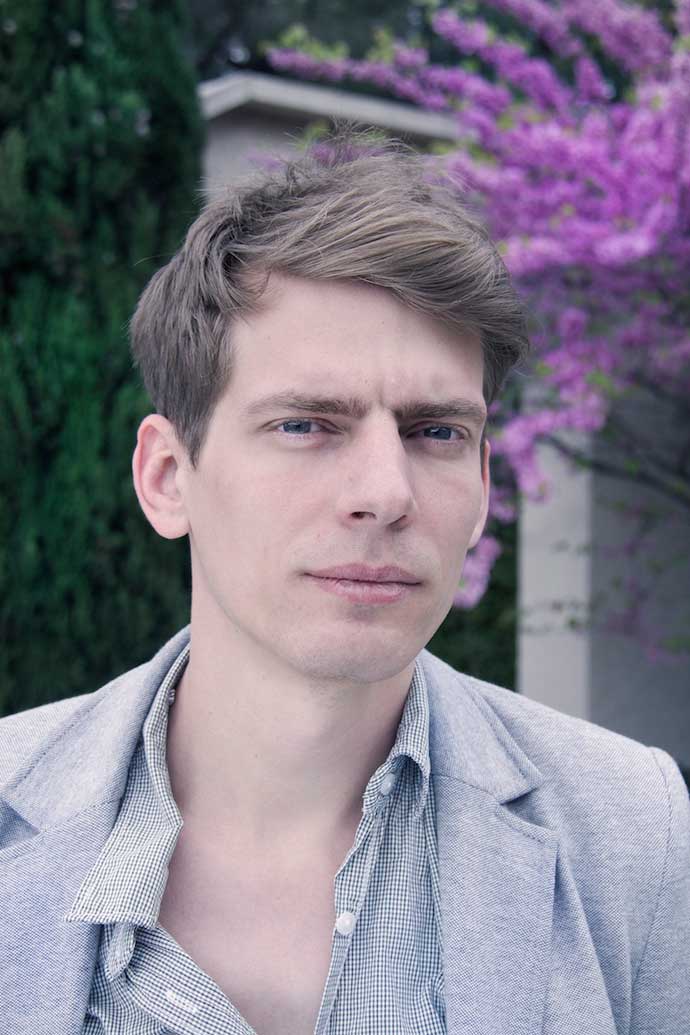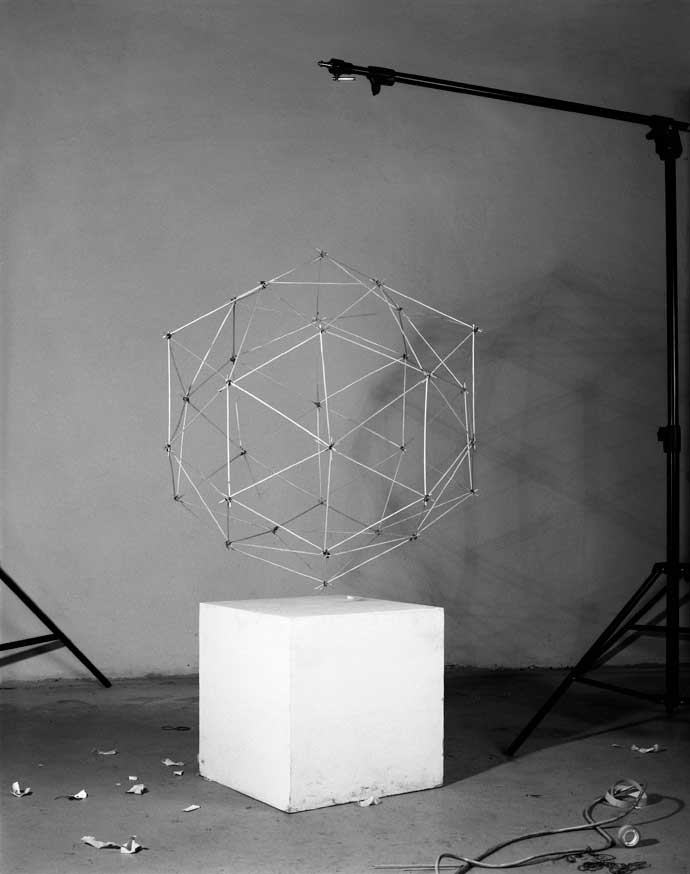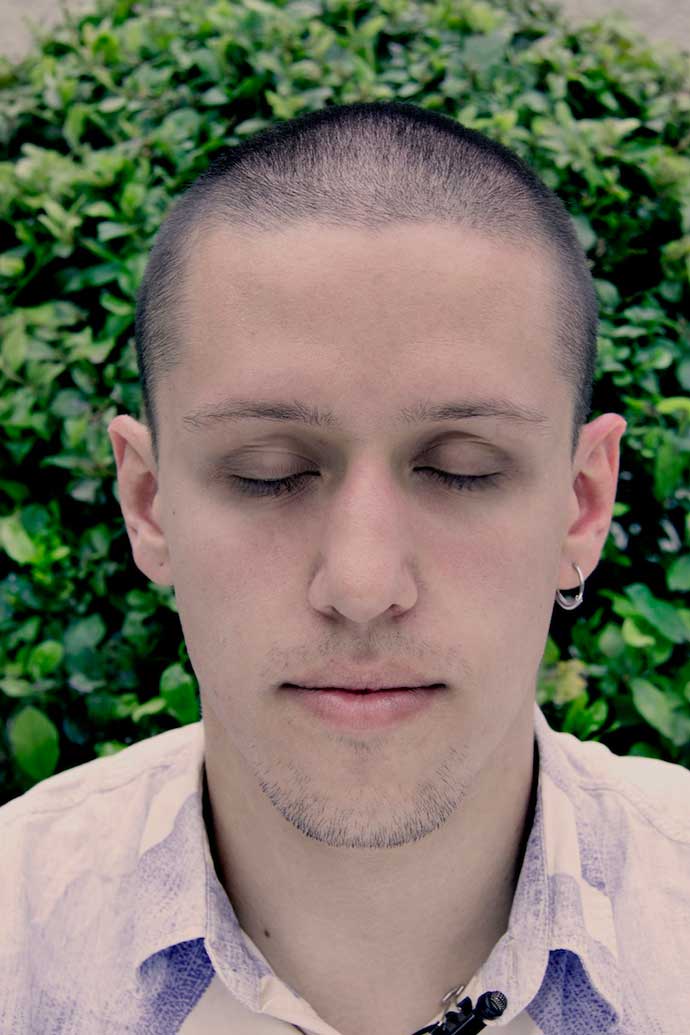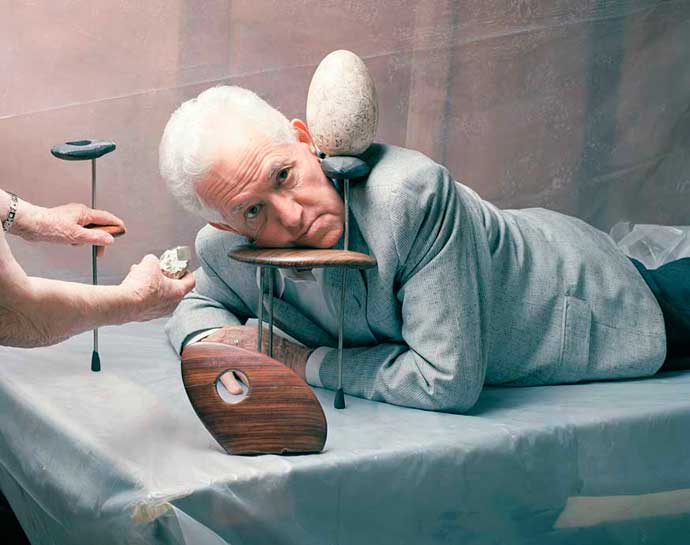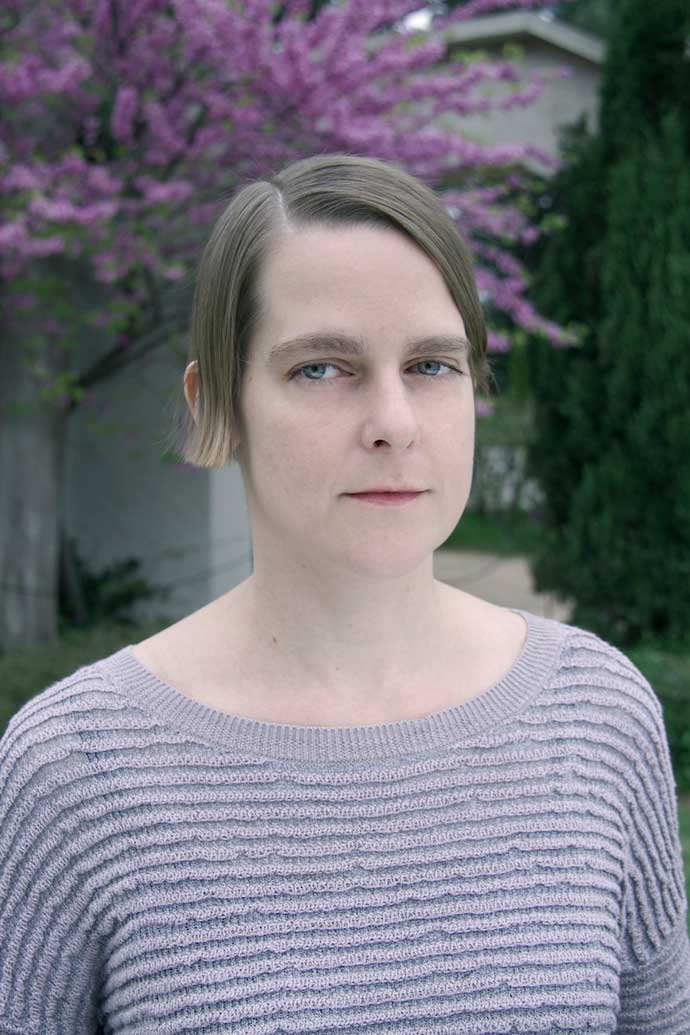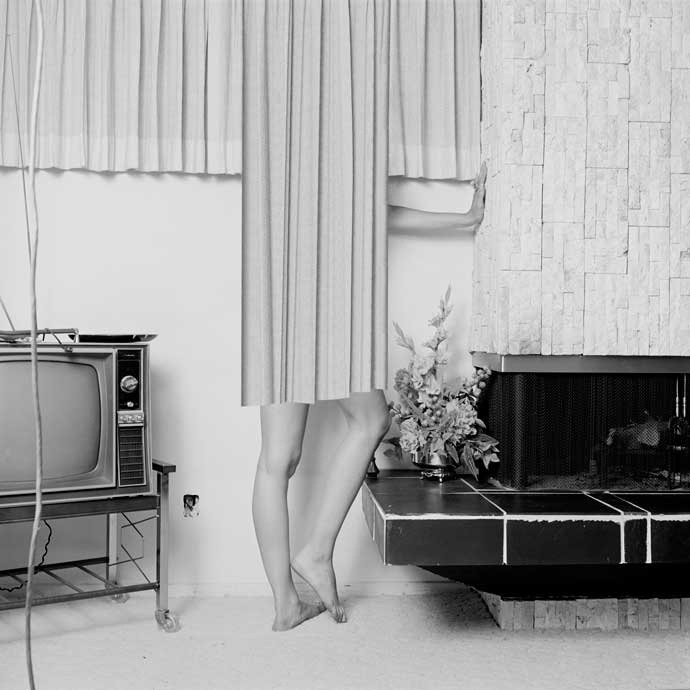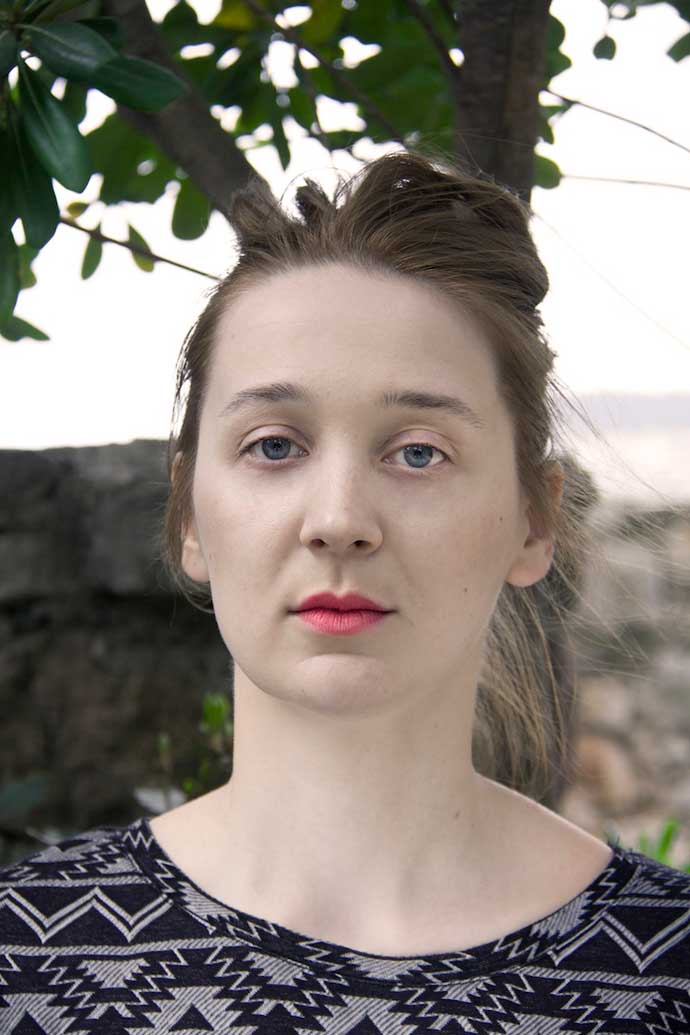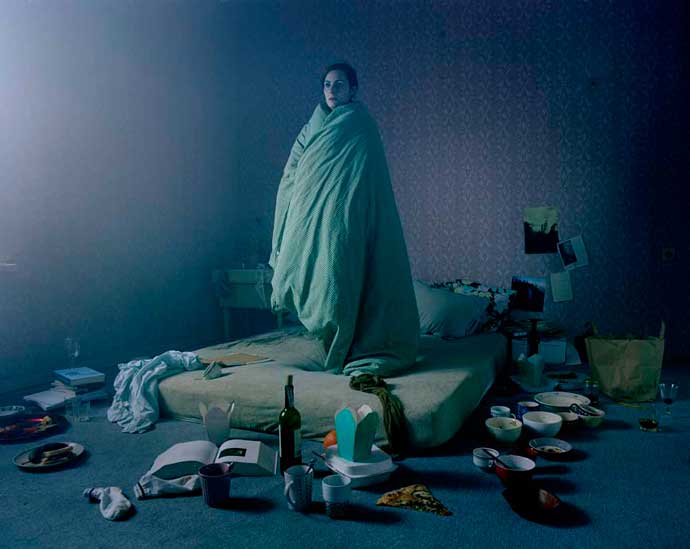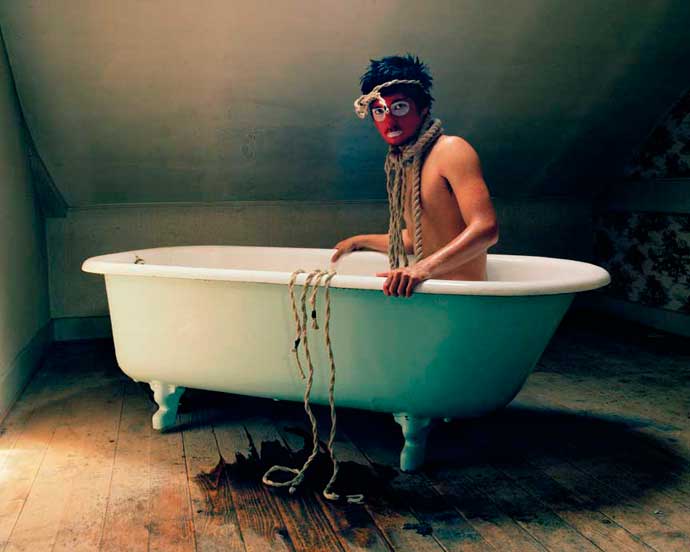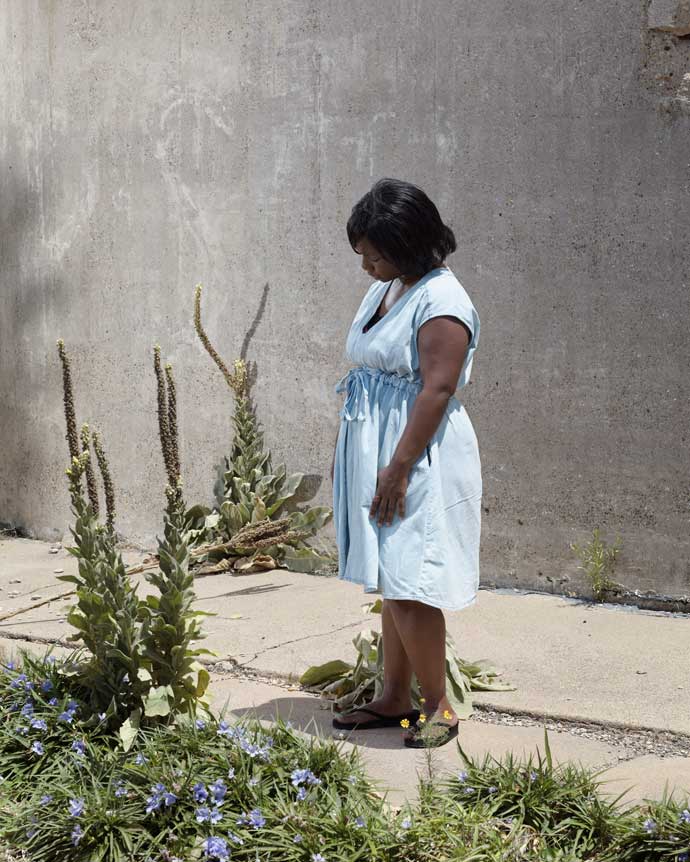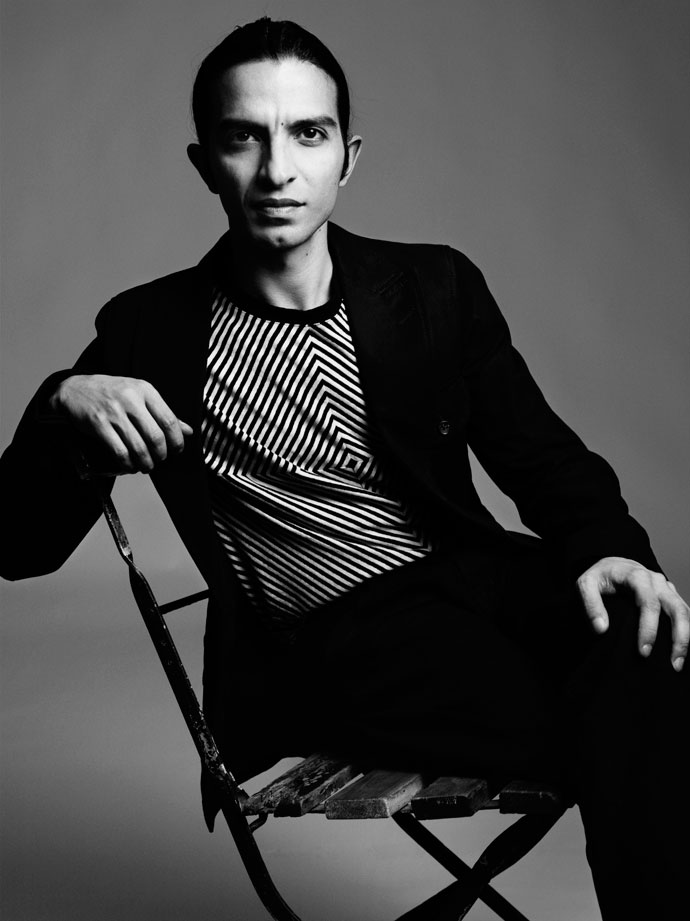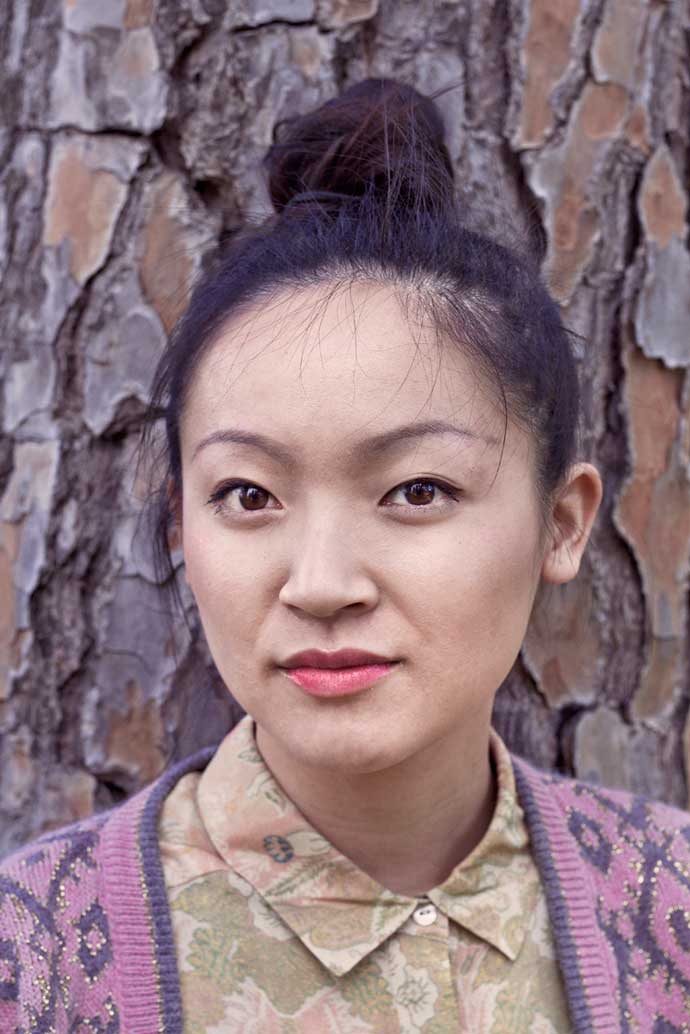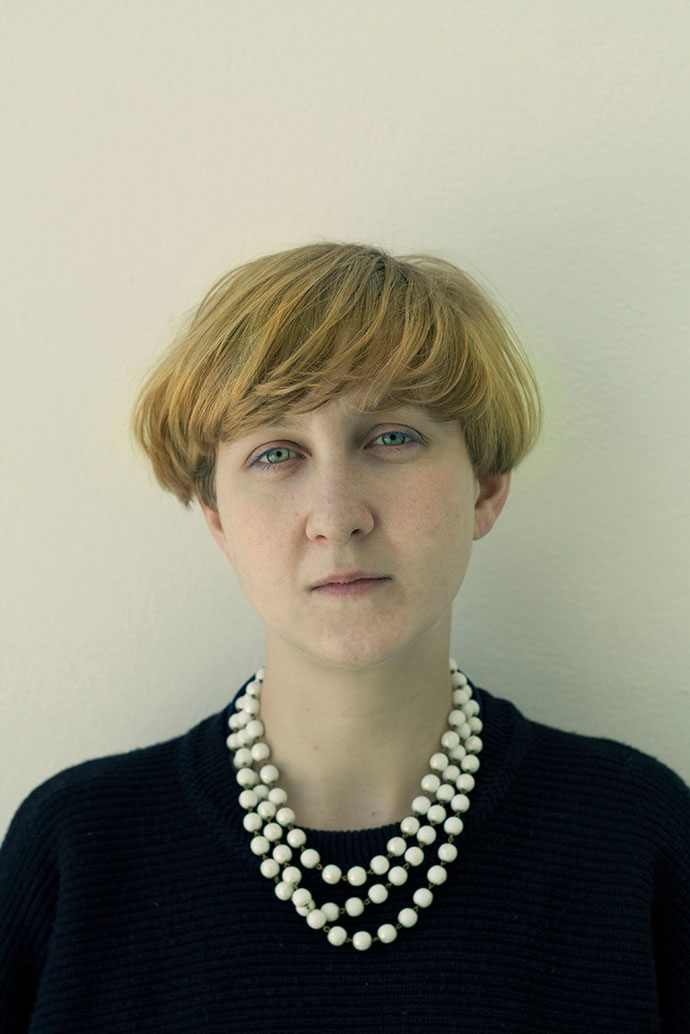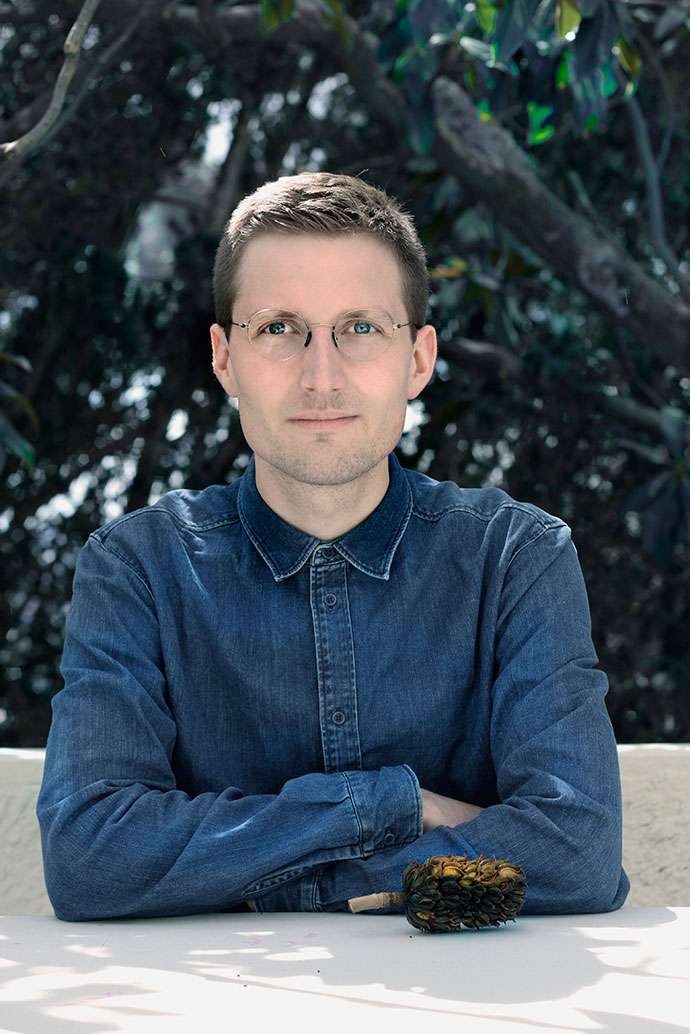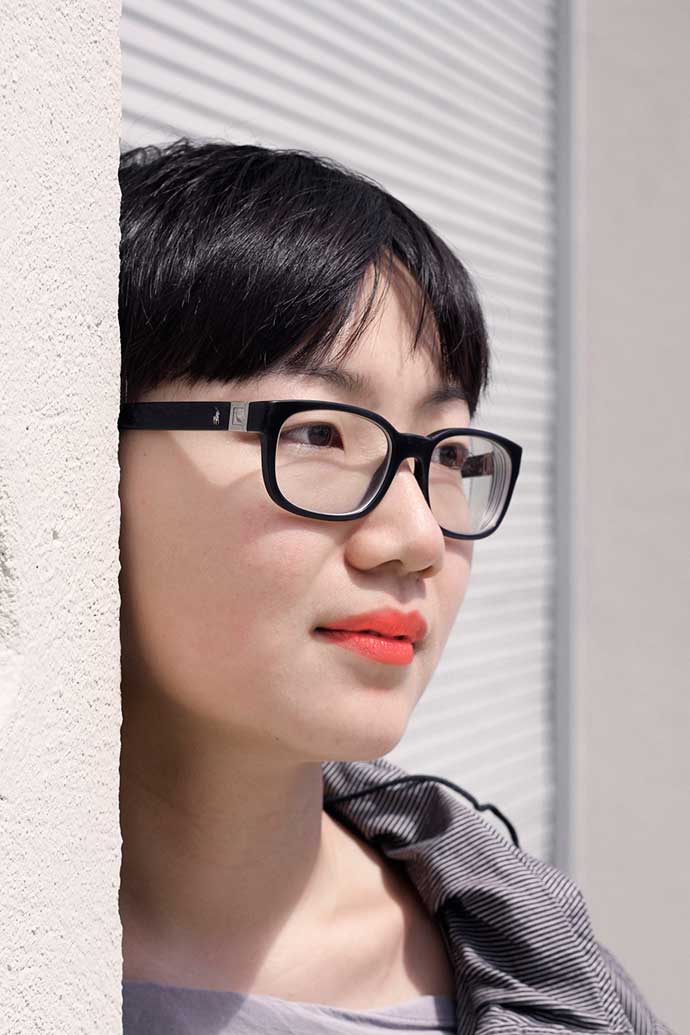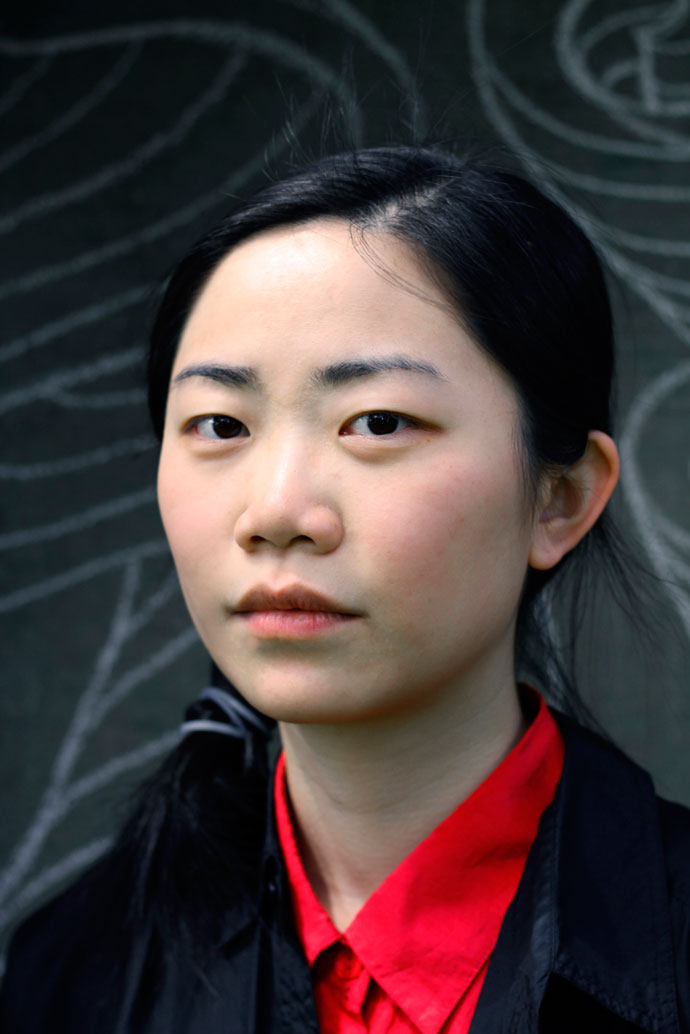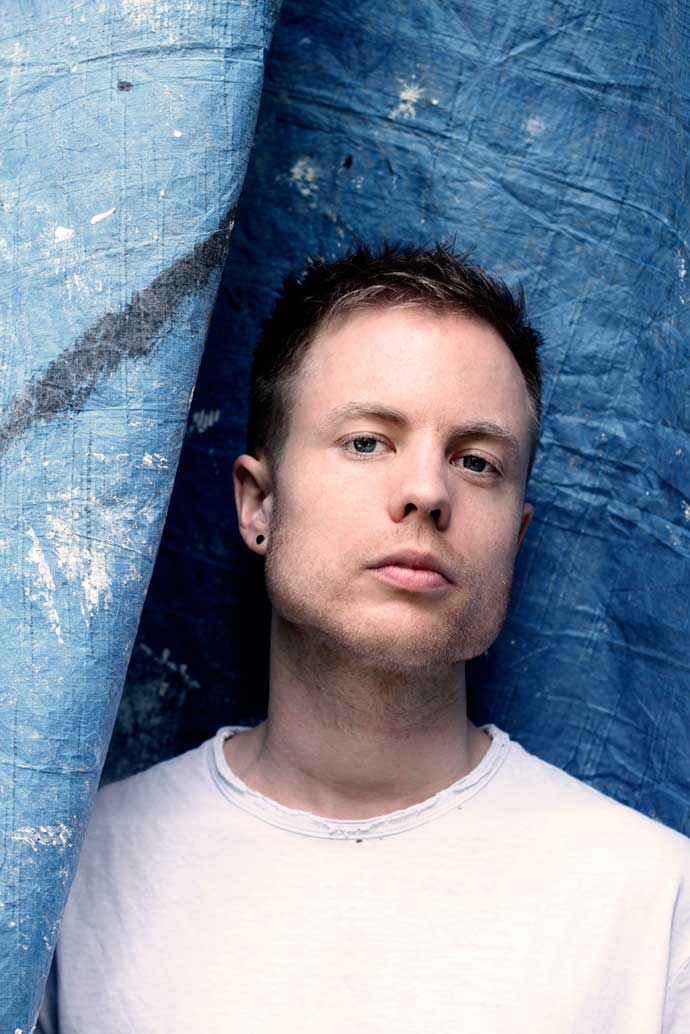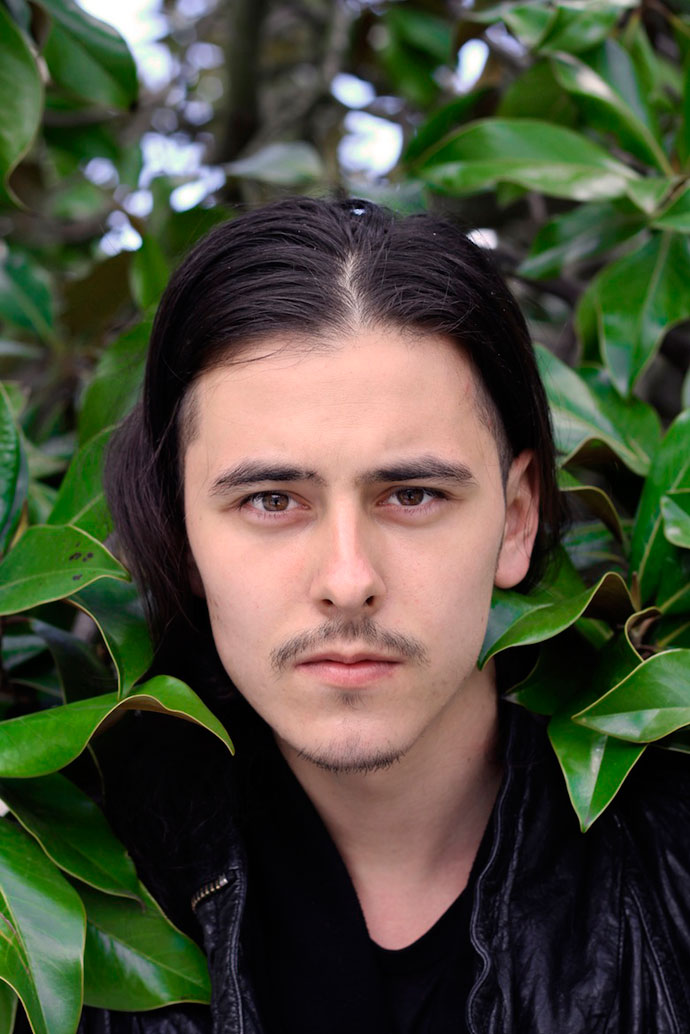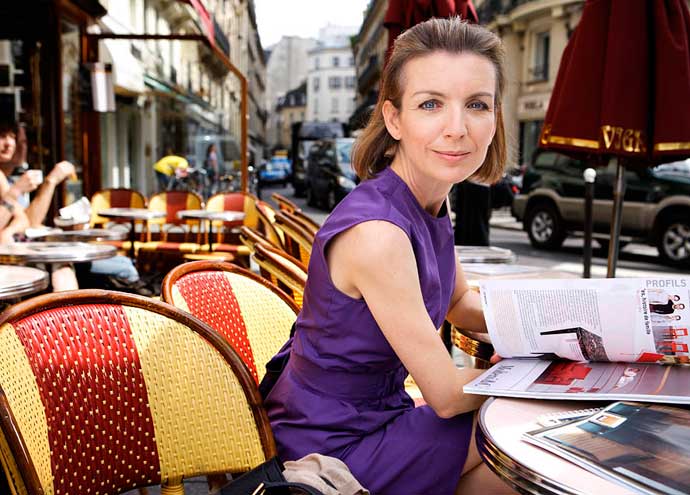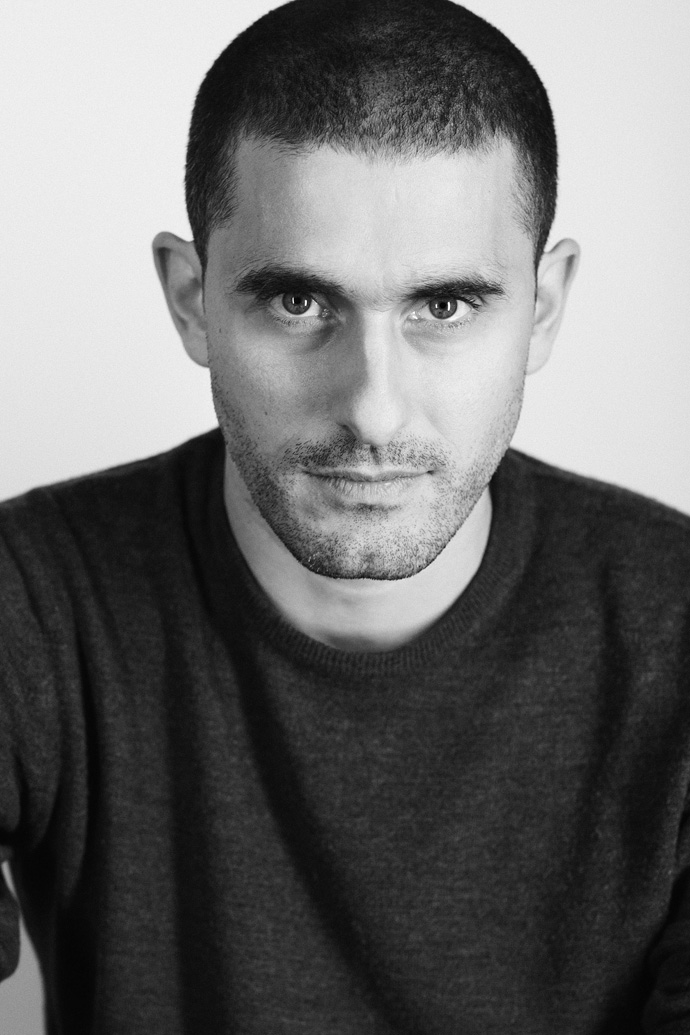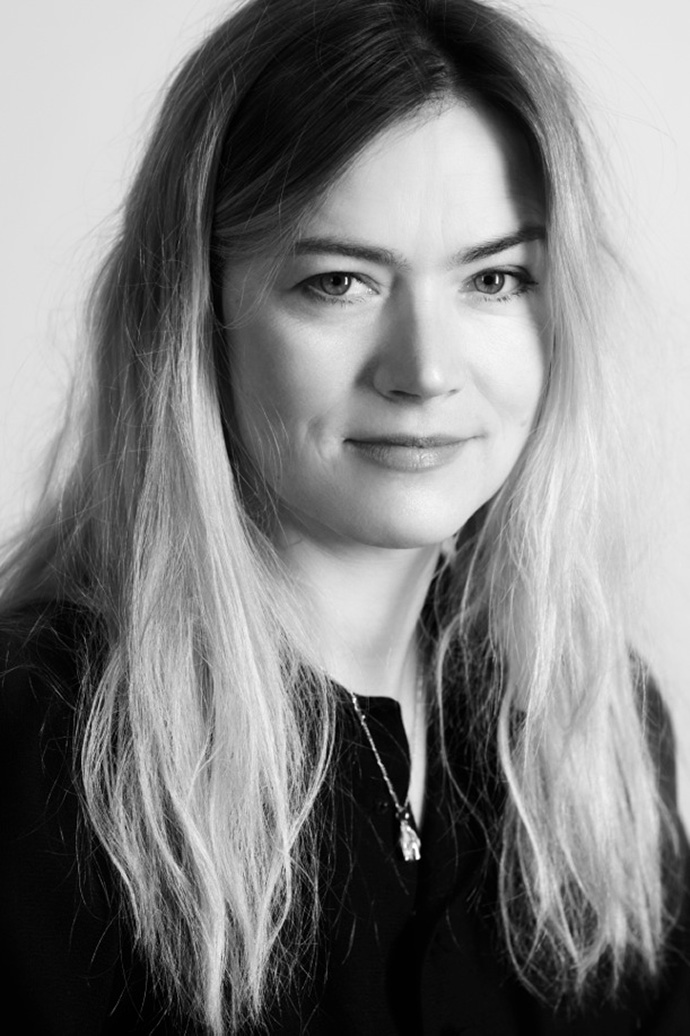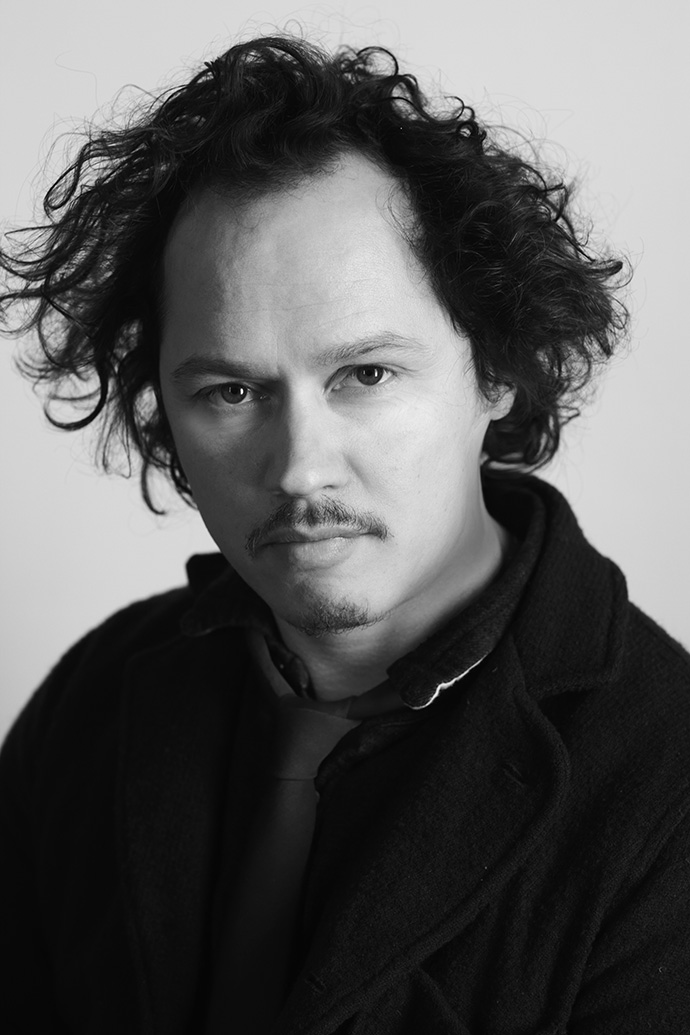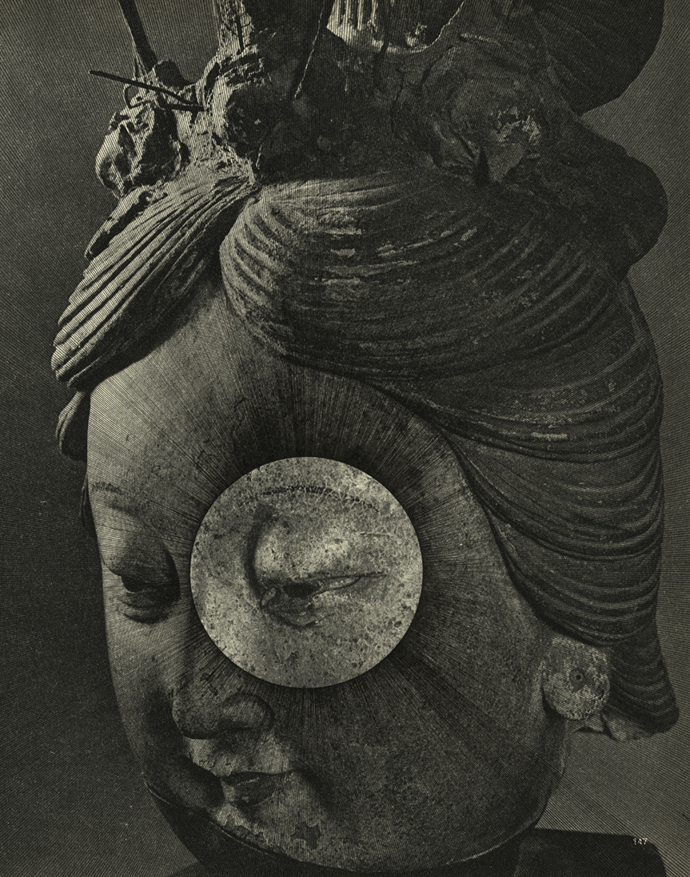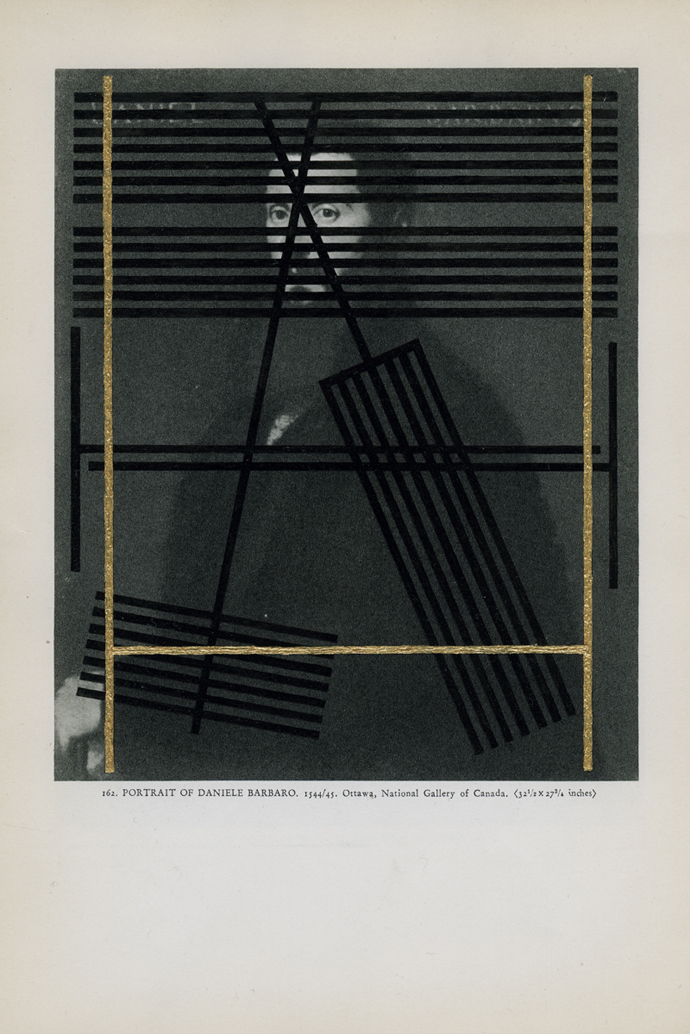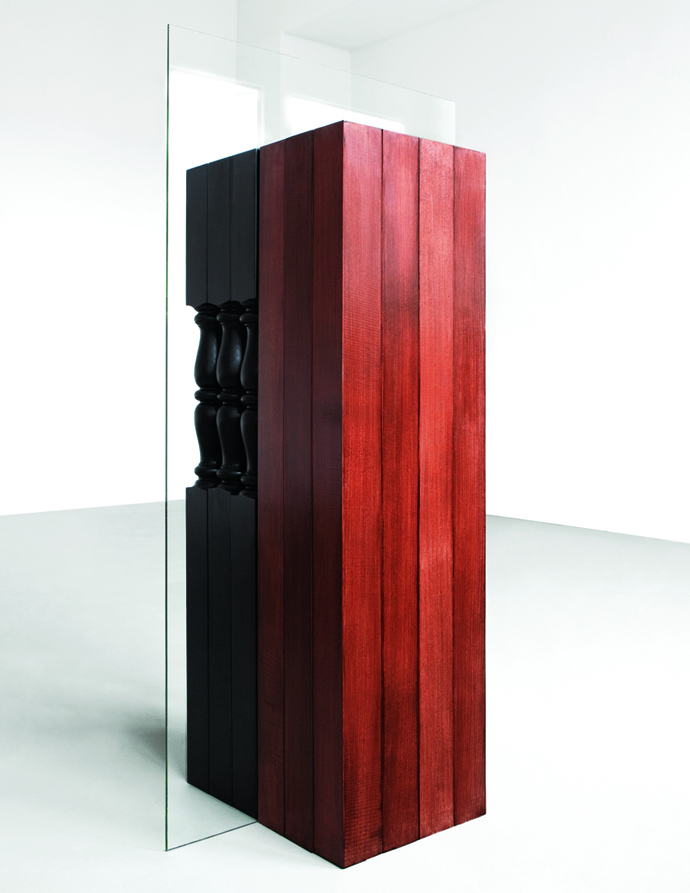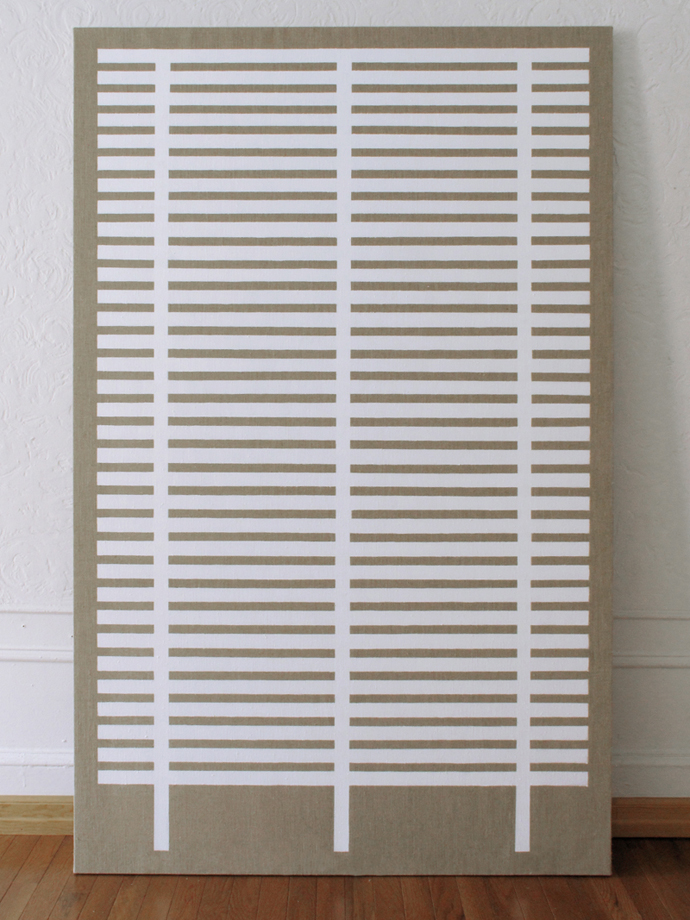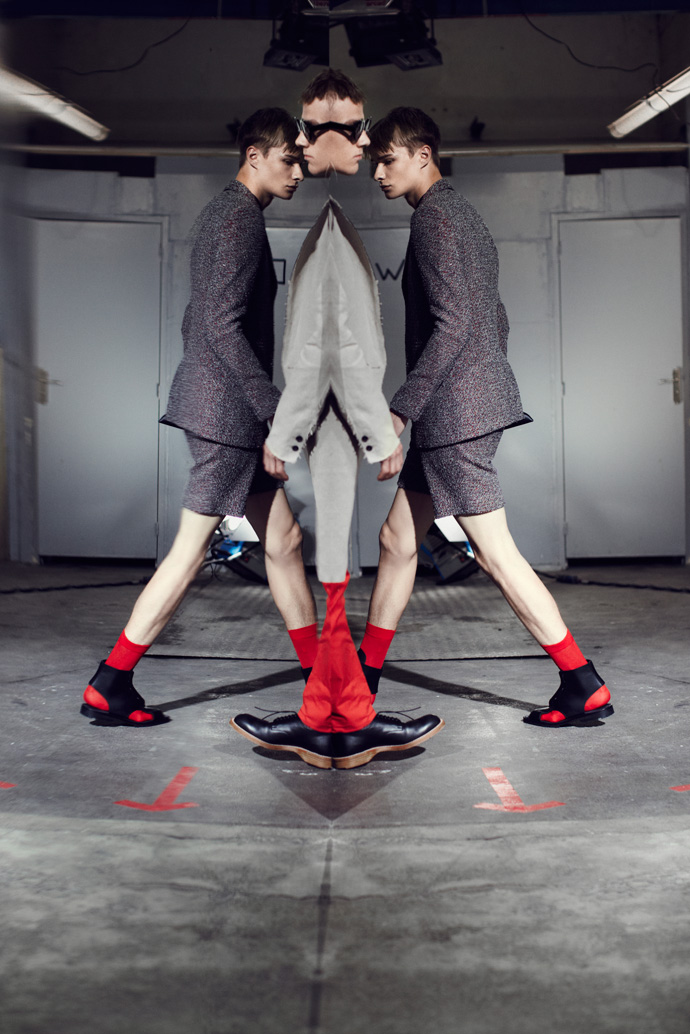-

OLIVER SIEBER – “THE NEW FUCK YOU”
-America, Asia, Europe… each continent spawns its own counter-cultures, centered for the most around music scenes. From these subcultures, Oliver Sieber creates an “Imaginary Club” composed of goths, punks, skins and rockabillies – irrespective of their cultural demarcations.
About 100 photos define the perimeters of Oliver Sieber’s “Imaginary Club, portraits taken in a makeshift studio of concerts, festivals and in clubs, and juxtaposed with black and white shots of deserted rehearsal spaces, street shots and club entrances.
Oliver Sieber’s “Imaginary Club” is exhibited at the Villa Noailles in Hyères as part of the 29th International Fashion & Photography Festival, a variation on his most recent book of same title. While setting up this exhibition, Oliver and his collaborator Katja Stuke spoke to The Stimuleye about the need of upheaval, total erosion of style and dress codes in youth culture and the need to find new forms of expressing positions of identity.
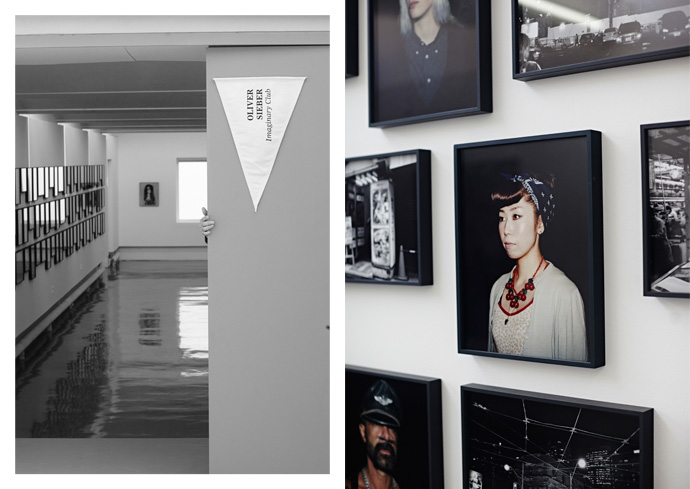
Oliver Sieber, "Imaginary Club": Exhibition at Villa Noailles, Hyeres
THE IMAGINARY CLUB
The Stimuleye: Who are these people in your “Imaginary Club”?
Oliver: What really interests me is reaction and forms of counter culture.
After WWII, the teenagers in America and England started to discover new forms of music and fashion, new forms of liberation. Many people I met are still in this sort of idea. Punk is a very good example, because it did have real societal meaning.That is what is important to teenager culture: upheaval, the struggle to identification, to root themselves. To not only take position against the elder generation, but in general. And that has often to do with music. I am interested in music, and communication of style codes.
The people in my “Imaginary Club” are not always part of a subculture in the classic sense. I have also portrayed artist friends, that, similar to teenagers, are forced to redefine themselves again and again. Here for example is a photo of Rebecca. From a wealthy family, she received always best grades, suddenly something switched in her head. Rebelling against her intellectual parents, she was climbing down the eaves gutters and was not to tame anymore.
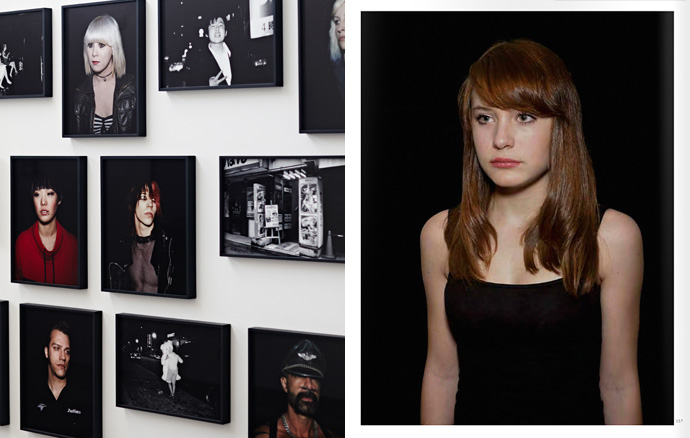
Oliver Sieber, "Imaginary Club": Exhibition at Villa Noailles, Hyeres. Right Side: Rebecca
When I look at my work, I understand it as an entry for the viewer, or a window upon which I reflect myself. Often it is not really about what is on the wall or who is depicted, but about the dialogue between the image and the onlooker. That changes from person to person.
The Stimuleye: Looking at the Portraits there are many Punks, Skinheads, Rockabillies.- is there also something a bit like nostalgia?
Oliver: We have a very globalized music culture today. Subcultures developing real novelties is something rather sparse and rare. Are there really subcultures that result from youth movements? I think it is not like that anymore. It’s more that youngsters try to identify with their role models of choice.
A good example is David Bowie that in the 70’s offered an image of “multi sexual liberation” for many people, also in combination with music and the song texts that bore a poetry and language that people picked up on. Just because we have 2014 now, his music did not disappear. You can still buy the records and the language still speaks to people who want to identify with it. And as fans do, they associate themselves with this. I think people living this don’t reflect on what they do, as we look at it. They just do it.
Katja:
There are always new aspects adding up and things get mixed up. So you have a development that can’t be called the “nostalgic”. It may be rooted in a source, and like in this case ideally there is a progression where new aspects ad up.Oliver Sieber, excepts from the book "Imaginary Club"
FASHION CODES AND THE INTERNET : THE NEW “FUCK YOU”
Katja:
Today you often cannot rely on the looks giving an indication on who people are: In Germany you find nazis that look like left anarchist “Antifa” fighters.
That possibly has to do with the internet, where you can communicate your stance or orientation in different ways then through fashion and dress codes.
You also have to react on other people adapting what you personally take serious as a subculture, how they mix your codes, abuse or pervert them.This makes it sometimes also difficult to determine whom are you following in a protest, where codes are so mixed up, that no one is able to keep up track.
For example in Ukraine its absolutely ambiguous who is protesting with whom recently. Unlike in the past, today it’s hard to determine who is on which side, from demonstrator to counter protester. Now you have young Nazi Hipsters in all black with tight jeans shouldering a jute bag, which really requires more than a second look to recognize what is going on.In this position you’re forced to find other forms to show your conviction that are different and function without the need of fashion as we had it in the past.
I am sure there are subcultures, but they function really differently, without the involvement of fashion, as the channels are much more multi layered. It’s not about provoking through your look anymore, because nowadays people are not easy to shock. So you have to find other ways and places to put your orientation forwards.Oliver Sieber, excepts from the book "Imaginary Club"
Oliver: In Japan a lot of messages get transported through flyers and stickers. This was similar in Los Angeles up until recently, but it changed and is now functioning mainly through hotmail panels. Everyone has a smartphone, no matter to which group you belong. The Cosplay culture for example functions only through the forums in the web. That’s all chat, appointments for conventions and Skype.
Katja:
But the internet is not at all as public as you may expect.
Often it’s very difficult to access a certain online group or forums. There are strict admins that want to know who you are and what you do, and remind you that with access you commit to a regular contribution etc- so you can’t just get in and check out. It’s much easier to go into a bar or a club, even if you have to pass and convince the bouncer.Oliver:
For example I photographed a young punk who realized how his style had been adapted and declared a trend. He totally changed his appearance to not be associated with this widely publicized new trend. That doesn’t mean though that his anti-ascist conviction or adoration for punk changed at all.As label and the designers pick up on elements of subculture their message is watered down extremely fast, so you have to have to change your codes again. As Jason (Evans) recently said at the Tate: “The new normal is the new ‘Fuck You,'”, because you can’t be categorized like this anymore.
Oliver Sieber, "Imaginary Club": Exhibition at Villa Noailles, Hyeres
PROTEST
Oliver:
That there is a new protest culture again is really great. These positions are getting from the internet to the street again, where you suddenly have to make an effort, as the codes we’re used to don’t work anymore when you can’t diversify between “good” and “evil”, nor recognize “your” or “my” people.Katja:
At the same time there is also these movements of parallel culture to create an existence and surrounding of some sorts of withdraw, even resigning.
This may be an approach resulting from being overwhelmed by societal developments. Specially in Japan we’ve met people that engage in small initiatives, artistic ones or others that take care of the homeless. There is this movement of “do it yourself” culture where people search for new forms of living for themselves apart from mainstream, norms and social graces, which are less visible.Oliver:
When visiting Osaka soon for another exhibit, we plan to investigate deeper into this, meet with these “alternative” people that found a totally different life and structure within of Japanese society.
What I found puzzling was that we met many homeless who spoke great English or Spanish, and had lived and worked abroad, but this had lead that they were not fully integrable any more into society, because the’ve been abroad too long and back in Japan landed on the street.Katja:
I think that also has to do that people with knowledge of languages have access to much more information over the internet for example, and thus are more open to ideas to try a different draft for their life than their parents, because that didn’t work that well either.
Specially as you can’t rely on social securities anymore- it’s not like our parent generation that studied, took a job and continued with a great retirement plan.Oliver Sieber, excepts from the book "Imaginary Club"
The Stimuleye: How do you work together?
Katja:
There are varying methods, but at times there are actual connections or a common greater theme and possibilities to juxtapose our work in an exhibition or we publish a book together for example at BöhmKobayashi.The City of Duesseldorf has provided us with a space we curated for three years where we developed “ANT!FOTO” which was to show exhibitions on positions of photography we feel were missing. As a result we also started a publication the “ANT!FOTO Manifest” which was a common project of us.
Oliver:
The “ANT!FOTO Manifest” was a project where we asked 70 photographer and curators to word their statement after a 10 point thesis we created. Initially this was planned only as a magazine, but finally will be shown in the Museum Folkwang as well as going to the
Fotomuseum Winterthur .The Stimuleye: What is the last thing that stimulated you?
Oliver:
After we talked so much on imagery, I would like to mention something that stimulated me:
when we talked to Frenkie (Bosnian Rapper) while visiting him in Tuzla, i asked him what is “heimat” (homeland) to him.
He said after being a refugee returning from Nuernberg to Tuzla, he realized what he missed: it was the scent of the firing wood that you can smell everywhere in the city. For my senses, apart from sound or music, the smell is very important.Oliver Sieber, excepts from the book "Imaginary Club"
Imaginary Club 2005-2012 432 pages, Offset-Print, a BöhmKobayashi/GwinZegal Joint
Imaginary Club is running at the Villa Noailles in Hyeres until may 25, 2014 and after that at the Galerie Stieglitz 19 in Antwerpen. Opening May 25, 2014, further dates are at PhotoBookMuseum from August 19, 2014 and after that the Exhibition will be travelling
10 -

MULATU ASTATKE: the bushes vs Debussy
-It may have taken decades, but the Ethio-Jazz sounds of Mulatu Astatke are now traveling throughout the world, through Kanye West samples and Jim Jarmusch films, reaching unlikely destinations such as the ecstatic crowds of Calvi On The Rocks in Corsica.
‘Doctor’ Mulatu Astatke as he likes to remind us, is not only a jazzman, but a doctor in musicology, who is eager to add to the lists of achievements of his home country, Ethiopia: coffee, inspiration to the Rastafarian faith, the invention of the musical scale, and it would seem, music conducting.
The bushes. Debussy. In the the mouth of Mulatu Astatke, it’s hard to hear the difference between the two.
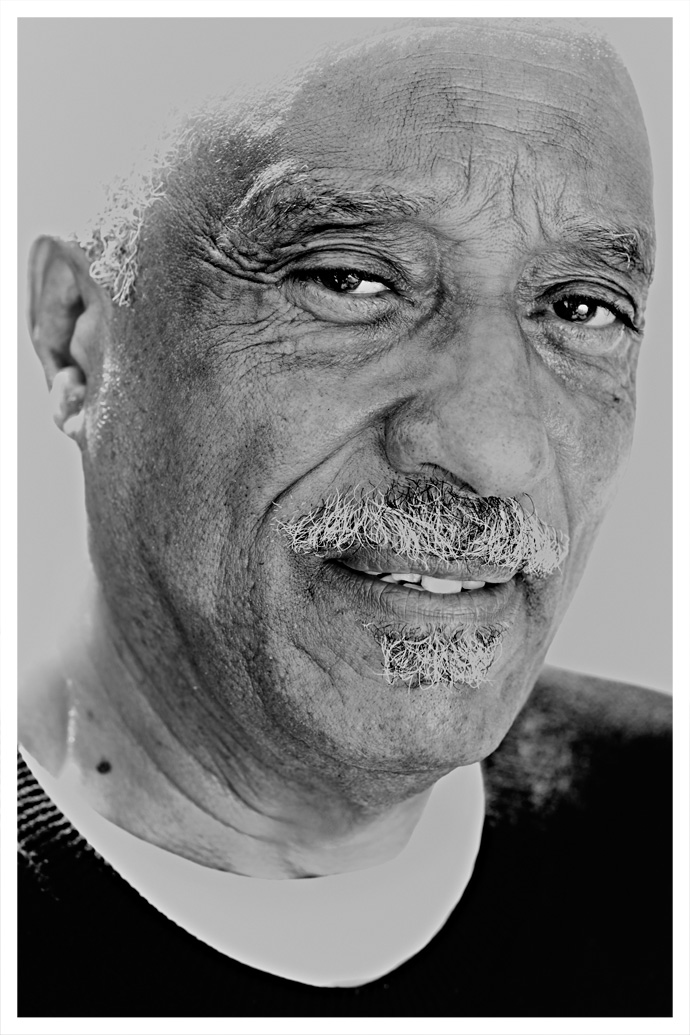
Doctor Mulatu Astatke, "Father of Ethio-Jazz" as his business Card states. Calvi 2013. Photography by René Habermacher.
René Habermacher: How did you come to be part of this festival that is very electronic music related?
Mulatu Astatke: Well, you know, I’ve travelled to Europe a lot in the last 3-4 years. The band became very popular, very busy and we did also a completely beautiful cd which will be coming out in October for the Jazz Village. People seem to ask for my band everywhere.
I used to be involved with electronic music a few years back with Heliocentrics on the album “Inspiration Information” (2009). But I really love acoustic sounds very much: real sounds, real music, everything. It’s good for the people to be able to get both sides, they can hear the acoustic but also the electronic music. I think it’s a very good idea to bring me to this type of festival. It’s great.
RH: How do you feel about the younger generation of pop musicians referring to your sound or even sampling, as in the case of Kanye West and other heavyweights of the contemporary pop generation?
MA: I remember the film “The Broken Flowers” by Jim Jarmusch, with Sharon Stone and Bill Murray. (NB- The soundtrack to the film features an eclectic mix of music, chiefly using instrumentals by Mulatu Astatke as the main score mixed with garage rock, metal and reggae.) The film really made a push and brought different crowds to my audience.
Then people started sampling my music. So my audience keeps on growing. I love it, I have no objection to sampling my music, because every time they sample, the crowds come too.I see all kind of people in London, in Paris, in Australia, everywhere, middle-aged, young, old ages, all kinds of crowd. It helps Ethio-jazz, and also for people to see different directions of music. So it helps so much. I enjoy it. Its beautiful.
Mulatu with drum sticks shortly before going on stage. The composer’s own signature instrument is the vibraphone, a set of graduated aluminum percussion bars that resemble a marimba or a xylophone. Photography by René Habermacher
RH: Ethiopian culture pioneered a lot of different things in music. Your work is part of that tradition.
Do you think because you were so pioneering it took quite some time for the deserved recognition to come in?MA: I put myself as an example and always say: never give up, just keep on pushing!
It’s so great when reality reaches what I always dreamed for this music to reach. If you just get to this point… it took me around 43 years!
The thing which takes time always give great results. It is what it is: as a musician you come to Paris, play Ethio-jazz, you go to NYC, to Germany, Denmark, Sweden, England: playing Ethio jazz.
And then suddenly this music just develops. Its a great recognition.I got my PhD from Berklee (NB – Boston, USA) and lectured in different universities all the time. It’s a great achievement for Ethio-jazz to be accepted at Berklee, a recognition of what we have given to the development of modern music, to dance and everything to the world. So I said: it’s not only for Mulatu, but this is a recognition of Africa, which is so great. So this is what we fight for.
Now I also do a lot of research at Harvard, at MIT and also lecturing for National Geography last month at the Royal Albert hall in London about Ethiopian contribution to culture and music.
I talk about African achievements and what it has given to the worldRH: So the theoretical reflection is very important for you.
MA: Very much! If you don’t know the historical aspect and the contribution of your country’s music, you can’t go any further.
The more you know, the more you do research, the more you enjoy.And the more you can develop the music and show to the world your own contribution.
So research is very important. For example in Ethiopia I go to the rural areas, to the bushes.
There’s one tribe, the Dirashe, who plays a diminishing scale in the middle of a pentatonic five tone scale country like Ethiopia.
In Ethiopia we play only five notes, that’s how Ethio-jazz developed: five notes against the twelve tone scale of American Jazz, you know what I mean. When I studied at Berklee, they were teaching us how Charlie Parker created the modern jazz through diminished scale. But this tribe plays a diminished scale. And great composers like Debussy are on a diminished scale. So what is really very interesting is these tribes have been there for centuries and centuries, so what I want to know is: is it Charlie Parker, was it Debussy, or this tribe ?Who was first? This is the question. These tribes people knew nothing, no painting, nothing, and they play diminished scale. I don’t know how they got it, because they are in the middle of a five note country. How did they manage to get this?
So I raised this question at Berklee and they were so surprised. What they said is: “Oh Mulatu- you got us!”
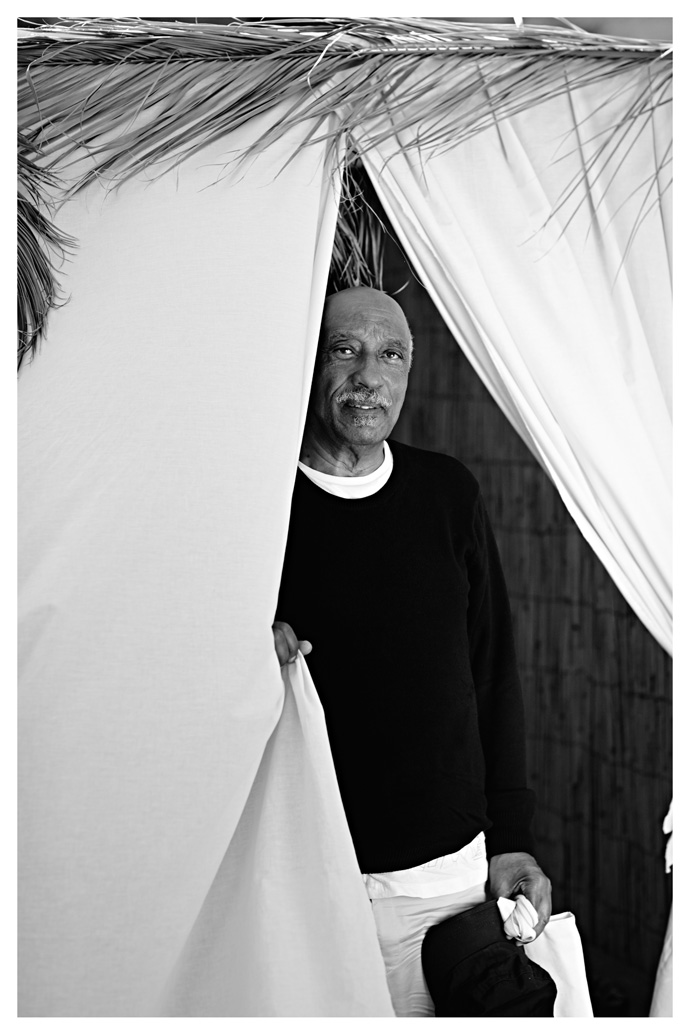 Mulatu Astatke received late recognition: Originally supposed to become an aeronautical engineer he was
the first African student in the late 1950s at Berklee College of Music — “the only place in that time,”
he said, to study jazz. Photography by René Habermacher.
Mulatu Astatke received late recognition: Originally supposed to become an aeronautical engineer he was
the first African student in the late 1950s at Berklee College of Music — “the only place in that time,”
he said, to study jazz. Photography by René Habermacher.RH: Is there a point where you thought the recognition is starting to come?
where you though somebody starts to understand what you were trying to do with Ethio-jazz?MA: In Europe and America, they understand and love my composition all the same. But when I went back from NY to Ethiopia, they didn’t like it at all, because they were used to this musical form that we call the current form: malalala…dalala (sings) I remember a long time ago there was a town that told me to get off stage. It was too complicated to them. They could not understand: “is this a joke or what is it?” Playing around: wabadawadawa?” – they don’t dig it. So I finished the piece and went off.
But now, after 10-15, 20 years they go crazy. The whole town of Addis is Ethio-jazz now.
Finally it’s Ethiopians! So I always say: keep on fighting, never stop. That’s the result.RH: When you worked with those tribes on interpretations, did they have any rejection?
MA: No. You know, I don’t touch them. I just work behind whatever is going on. I can write beautiful counterpoints and harmonies and they do their thing. I just tell them how good they are. What they’ve done to modern music, their contribution to the world. So they love it.
I do a lot of experimental work with this people. I do beautiful jazz fusions with them.
(NB- Mulatu once brought musicians from four different tribes together in an Addis Ababa television studio and orchestrated a cross-tribal fusion performance. This giving traditional musicians, many of them farmers, an artistic exposure beyond their tribes)
The ideal way to explore multiple forms of music is through jazz.
In fact there is a Dirashe track is on my new album, and another one with the Surma tribe.
It’s so interesting, I did an experiment with Fatou (NB- Fatoumata Diawara), the Malian singer who is featured in one song,
a fusion of their music with Ethiopian: east meet west. It’s so beautiful, its on my new album called “Sketches of Ethiopia”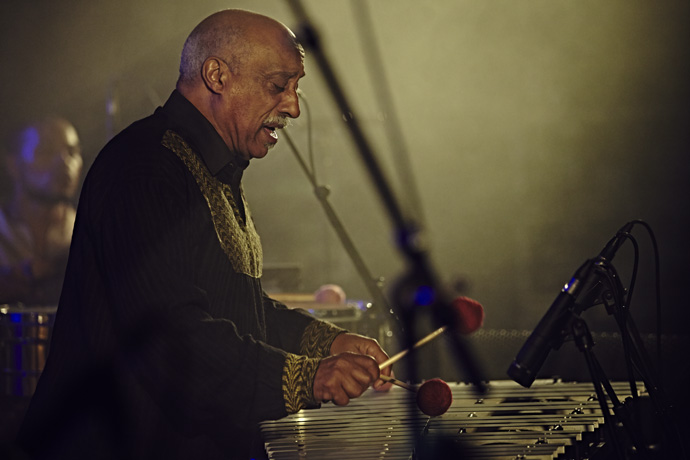
Mulatu in action at Calvi On The Rocks, Corsica 2013. Photography by René Habermacher
RH: Another culture that strongly relates to Ethiopian heritage is the reggae culture, yet in a very different way.
How is your relationship to this?MA: I really respect them for introducing the Ethiopian, the flags and their love to Ethiopia.
But even though musically we’re in different modes, different scales, different things. When you hear Bob (Marley) and the other ones they use mostly their own stuff.
So actually its not like Ethiopian culture or Ethiopian music, but this is their own way of appreciating music. I like them for promoting our country, for promoting our flag in this world, and for it to become like part of national art. We enjoy them, we love them so much! And now, you see they are adding a lot of Ethiopian modes, Ethiopian scales to reggae currently. There are rastas living in Ethiopia in a place called Shashamane.
Hailee Selassie gave them the land in 1948, so they stay there. And now they start to come into our music: Ethio reggae you know.
But now there are more young Ethiopian musicians, they do a lot of reggae. It’s great I think.RH: In 2008 you premiered a portion of the Saint Yared opera at Harvard.
Are you continuing on that project?(NB- The Saint Yared Opera is a project on Saint Yared who is regarded as a saint of the Ethiopian Orthodox Church and credited founder of the Ethiopian Coptic Church Music. He is believed to have been the first to write musical notes, centuries ahead of Western civilisation, and use an ancient form of conducting stick. The composition of the opera will blend the old and the new, and incorporate traditional chant texts in Ge’ez, the Ethiopian liturgical language, but as well electronic elements)
MA: Oh yeah. Thats very interesting. It’s gona be completed very soon. It’s already done actually.
The problem is that l am so busy travelling with other projects: I write for films, I do my experimental works.
I need two to three months to finally put the opera on a stage.This is a work I’ve done at Harvard.
My paper was about conducting being an Ethiopian contribution to the world.
We used to conduct music in the 6th century, with a stick called a mekwamia.Mulatu at Calvi On The Rocks, Corsica 2013. Photography by René Habermacher
So I studied the movement. If you look at the military band march, and the man in front waving sticks and things — 80-90% of that movement is from the mekwamia in Ethiopia.
But where did they get this from? This was before existence of symphony or conducting a symphony — and we have it. If you look inside the Encyclopedia, were there symphony orchestrae in the 6th century? There weren’t.So I said “OK, there were no symphonies, so then the conducting movement is taken from us.” Of course there were a lot of conducting, there were choirs in Europe of all kind.
But the most of the movement is what they use for the military also. If you use in the symphony a stick like this, the way you move it is exactly the same how we move it.
So they are telling us “you can do your reggae, you can do your jazz, you can do your rap.”
But they say classic music is purely European culture, which Africa has nothing to do with.
They are musicologists for Harvard, Yale, Princeton – so I said:
“look, I am open minded. This is what I found. If i am wrong, tell me, I am learning from you.”They couldn’t answer me.
So I say: “one for Ethiopia”. They said: “we’ll see.”[In the opera] there are two great conductors in the symphony, one european with a bow tie, conducting the symphony behind, and a church guy that conducts the choirs.
My dream is to do it in Lalibela (NB- one of Ethiopia’s holiest cities, famous for its monolithic rock-cut churches), the cave.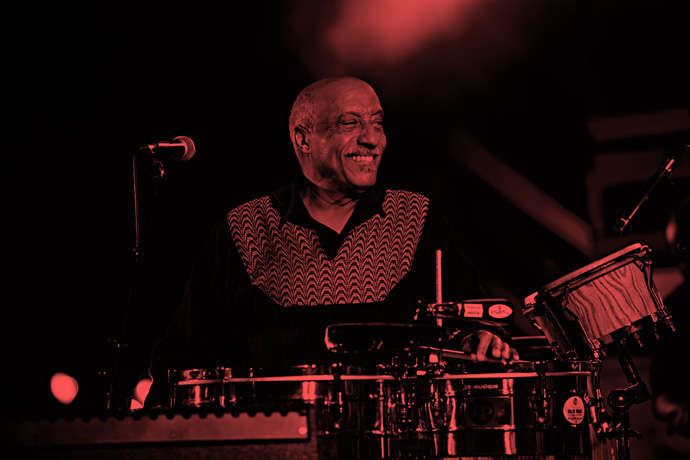
Mulatu at Calvi On The Rocks, Corsica 2013. In the late 1960s he had returned to Ethiopia with the first Hammond Organ and Vibraphones. Photography by René Habermacher
RH: What is the last thing that stimulated you?
MA: That’s really these people in the bushes. They inspire me so much. I have very great respect for them. The more you go closer to them the more you find them so interesting. They have created so many great musical instruments.
Now there are instruments in the bushes they sound like trumpets but made from bamboo. Strings, sound like violins, cellos, that kind of thing.
So I was wondering, let’s do a research – who inspired who ?
When you see these people never had a chance to go anywhere, they have no television, they have no radio, – they have nothing.So I always think they inspire the developing world. Those are the people that inspire me. The more you go everyday, you learn something.
New ideas, something interesting from those people. They inspire me.We call them backwards. But they’re not backwards people to me, they are advanced people.
They are ahead. So this this is my life now. I listen to them.
Whenever I have the chance I am in the bushes, I go close to them.
It’s so interesting, so beautiful. That is what inspires me truly.
Upcoming concert dates:
AUGUST 10 – Paris, Trianon -

Kostas Murkudis
-Putting Kostas Murkudis, with his East German utilitarian approach, at the helm of Closed jeans, a brand defined by the relationship between function and form, is a match in heaven, in a time where the initial idea of fashion is caught between mass production and the arbitrary grip of luxury-obsessed conglomerates.
They each bring their own interesting history and their associations to big names to a collaboration very much anchored in the “now” – on one side, Marithé and François Girbaud, who founded Closed in the 70’s, and on the other, Helmut Lang, with whom Murkudis worked during the label’s early and formative years, though both brand and designer exist in their own right.
For women’s fashion week in September, Closed will open its first flagship store in Paris.
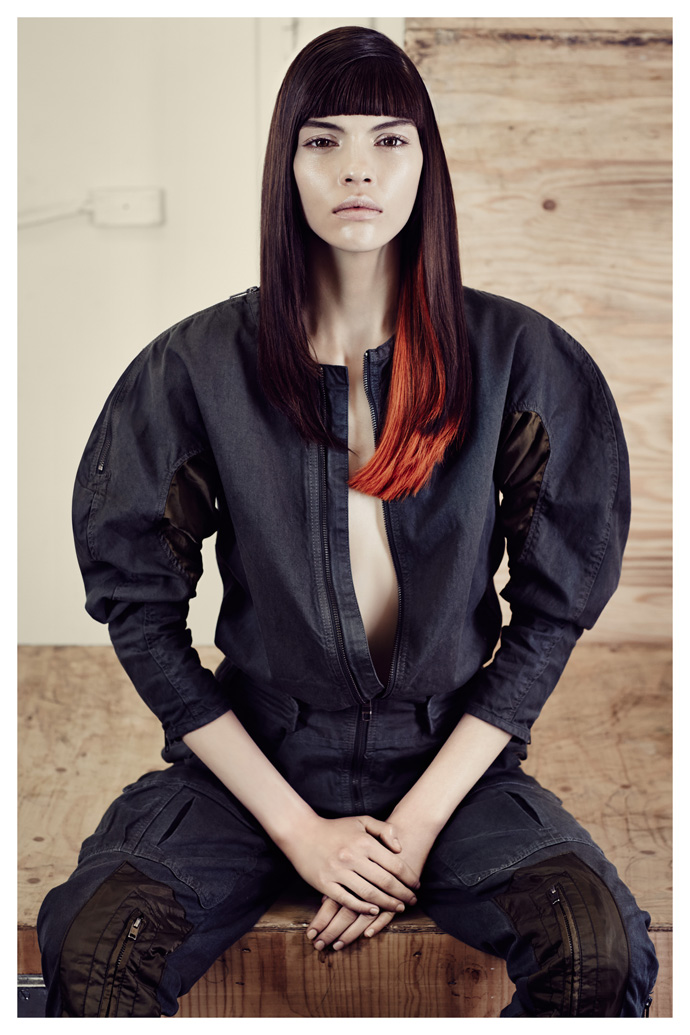
Overall "Illusion" from the FW 13/14 collection by Kostas Murkudis for Closed Jeans. Photography by René Habermacher
René Habermacher: When I heard you’d be working for Closed jeans, I thought it made great sense with your approach – sustainability, resistance, utilitarianism and uniformity are expressions that come to mind when thinking of your work, and all of these seem to be relevant in the context of jeanswear.
KM: I grew up in the DDR (German Democratic Republic), in East Germany, so these are surely aspects of my work that I value and are part of my professional ethos that I will follow up into the future. It’s my contribution, to make it accessible to more people than for example with my own brand.
I always had “two hearts beating in my chest”: one more poetic, free of necessities, and the other that is more about durability and functionality everyday. I always loved the approach of the Bauhaus, it is very important to me. But I really do love both aspects. Now with my new mission at Closed, I can really apply everything you described, I have all tools and a fantastic team I love working with.
For me this is the perfect balance between the two brands.Whereas with my own brand, my mini-label that I call my laboratory, I don’t have to think about whether the piece is really durable, has the right pocket or whatever. I just can do projects important to me, which do not necessarily have anything to do with fashion. For example recently I have worked with a royal glass manufactory in Munich, Lobmeyr, that usually do stuff like church windows etc. I think there are so many possibilities and I am very curious for new challenges.
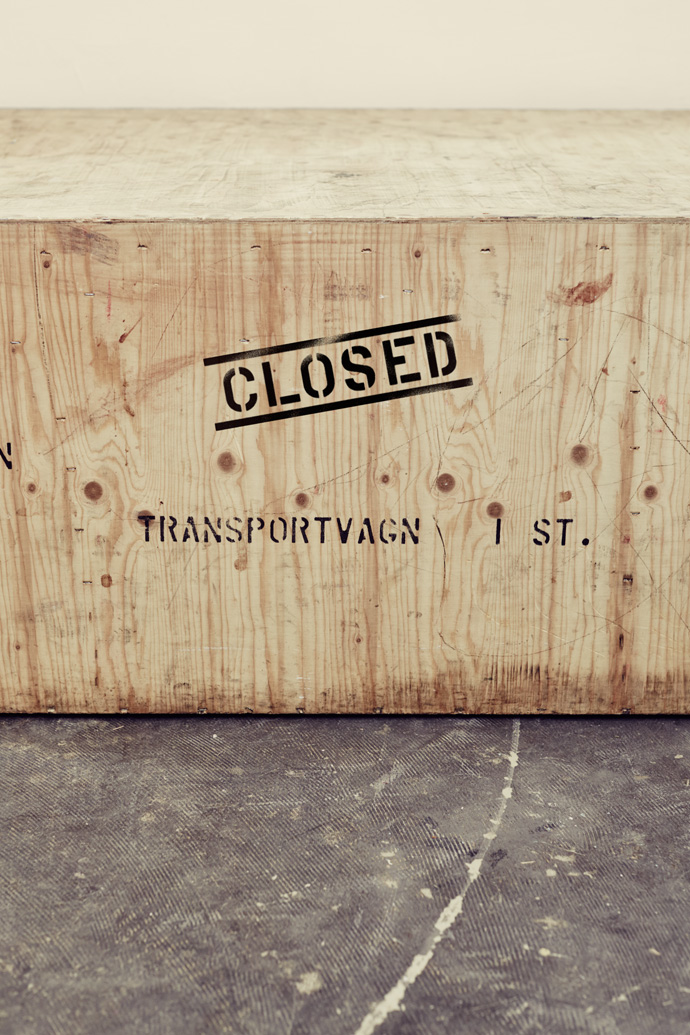
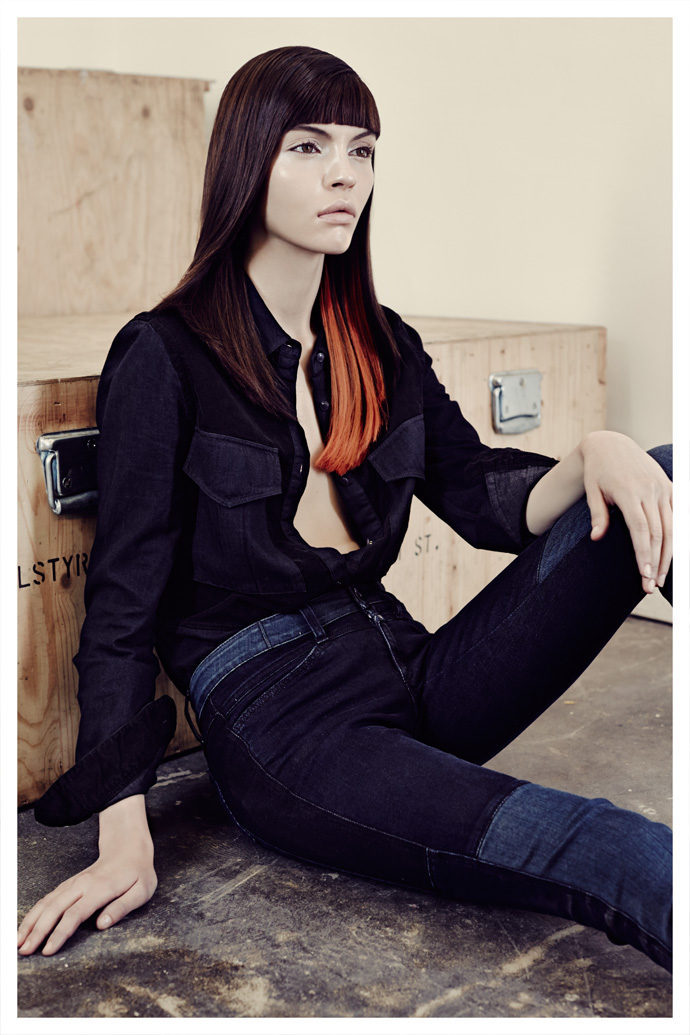
Shirt and Jeans FW 13/14 Kostas Murkudis for Closed. Photography by René Habermacher
RH: You’re working for quite some time in fashion now. When you started, fashion was something different: in the 90’s, fashion still had a socio-cultural context, was a compass and expressive part of movements. Today it’s different, its not really that a social movement expresses anything through dressing codes.
KM: That’s true and has obviously social, socio-political, and sociological causes. There is very little happening that could tempt for re-orientation. I do really hope that finally something will be happening. Or has it started already? When you look what is going on in Brasil, or Turkey, in countries where I would not have expected that this kind of movement would be surfacing.
The situations in Greece, Portugal or Spain, France and possibly soon England, don’t look so great either, but something is happening and I am hoping very much that this will spread across cultures and regions, and maybe create the necessity to develop new codes. Obviously they have to develop themselves, we as designers can’t help it.
RH: For quite a while fashion hasn’t had a cultural value of progress, it has become more a simple “garment industry.”
KM: That’s right. Fashion is not allowed to be like this anymore. It’s the very capitalist approach to define success only through growth, to which the big houses are forced to: generating work, circulate money, this and that – it’s not about content at all. In fact it is even arbitrary who designs. It is the brand with its margin that is in focus.
If that’s what’s thriving in society, fashion can only be its image.On the other hand, design has become another aspect – let’s take an example like the iPod, or the iPhone and what has been generated here: a simplicity, practicability and a beauty of objects that have not been produced like this in a while.
It’s not about developing funky variants and decorations, but to work continuously on refinement and improvement with every generation, which I believe impacts our everyday culture. Even kids are not seduced to just buy something new because there are some new crazy buttons added. And you don’t have the desire to buy a jeans with 25 embroideries and absurd stitchings on the butt that are completely pointless. This pointlessness, this battle of material is not working anymore.
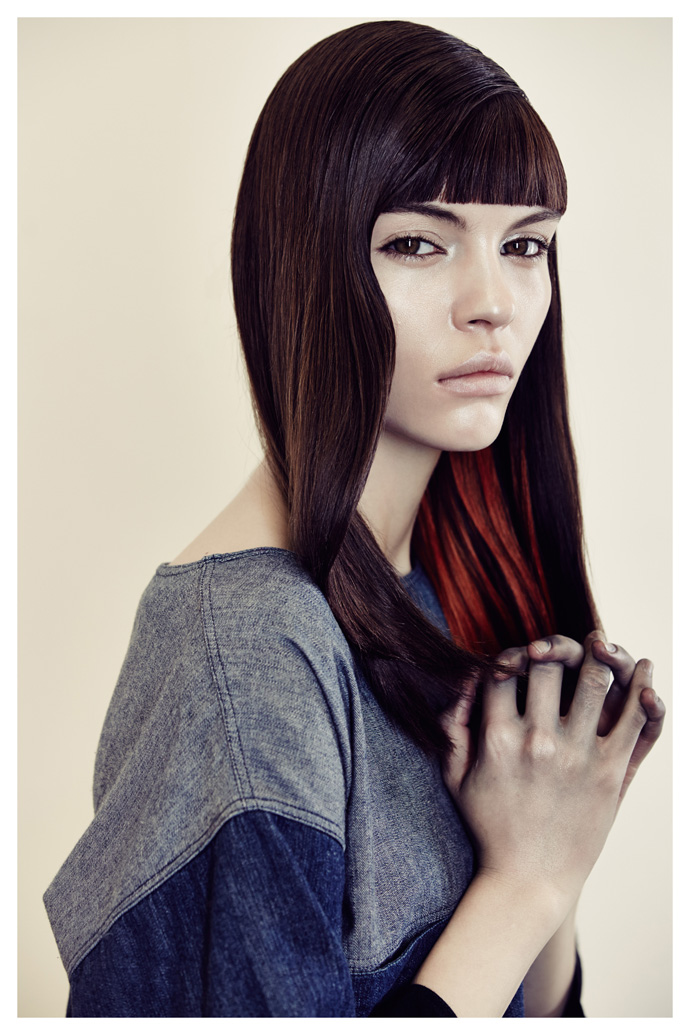
Jeans dress FW 13/14 Kostas Murkudis for Closed. Photography by René Habermacher „First there is nothing, then a deep void and finally a blue depth.“
Yves Klein.(Leitmotif for the colour codes to the SKYWALK CAPSULE COLLECTION No.1)
For example my brother Andreas, who owns a concept store in Berlin, he affords himself the luxury to buy only what he thinks is really good, regardless of the label. He buys what is up-to-date in his eyes. He was totally shocked about the pricing for which it’s possible to get good design that is on top politically correct produced in Italy: good quality fondly fabricated from great fabric. Not that this is world changing…
RH: But democratic?
KM: Democratic in a positive way. I didn’t really want to use that word. When my brother saw the Skywalk Capsule Collection in Berlin, he went to order straight away several looks from the FW collection, saying: “wow, this is really cheap- and so cool, but really cheap”.
Of course we have the same approach, maybe also because we grew up in the DDR: for us longevity or functionality and beauty don’t have to cancel each other out.RH: What is your relationship to glamour?
KM: I try to stay remote, but sometimes have to make compromises. My relationship is rather an aversion. I come from a very simple background and it really does not touch me to hear “who was where with who wearing what”, that doesn’t interest me.
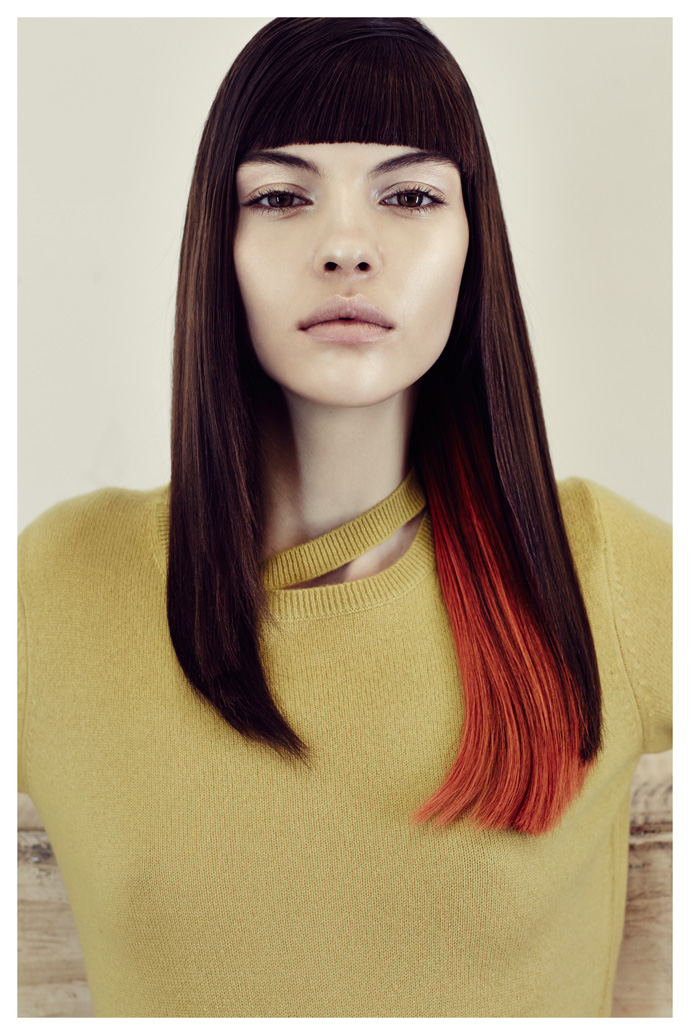
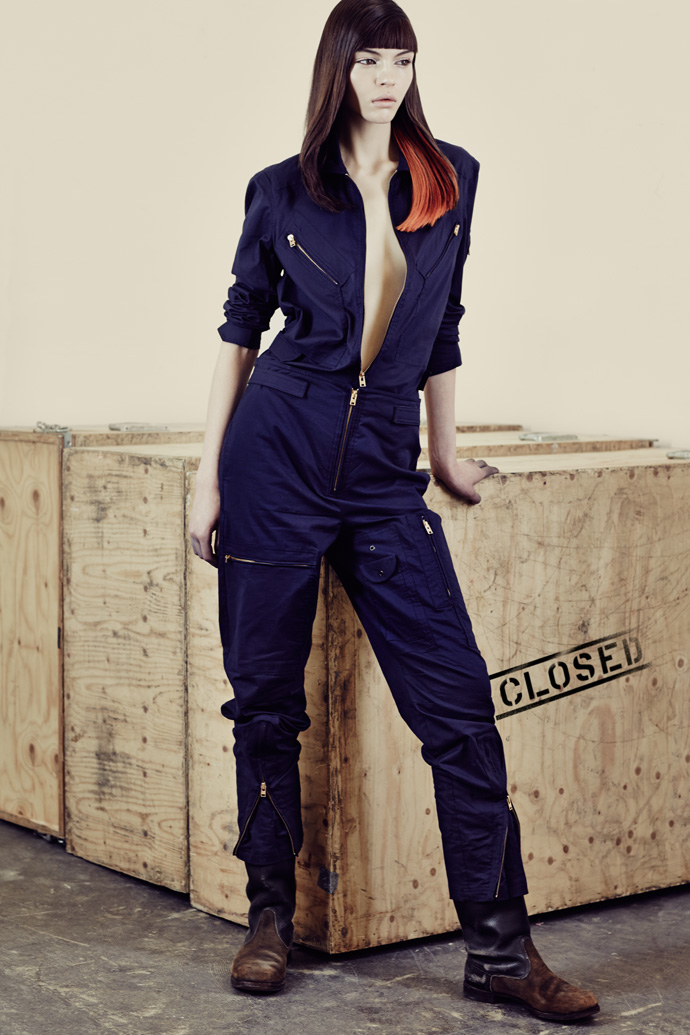
Right Side two pieces from the SKYWALK CAPSULE COLLECTION: Murkudis took inspiration from a vintage aviator suit, using the cuts and details to create a minimal wardrobe: a shirt, a blouson and pants for men and women. Boots: vintage DDR army. Photography by René Habermacher
„Earth is a delicate shade of blue“
Yuri Gagarin (Leitmotif for the colour codes to the SKYWALK CAPSULE COLLECTION No.1)
RH: Tell me a little more about the Skywalk Capsule Collection…
KM: The idea was based on the desire to bring the brand back to an international level, and the one of the brands defining aspects: the idea of unisex, that I thought very interesting and gave me also the possibility to explore menswear more, find a different angle and define their image more sharply.
Because the project was a very small range, I had to stay quite precise as well in material as colour and design, but it was the first time that I had the chance to show pieces that one actually can afford. If you look at the product, it appears at first sight quite minimal, even though its technology is actually very complex, which is something I wanted to put forward as well.
But because of all this, it was quite obvious to me to give the collection somewhat of a poetic moment.
RH: Yet here is also a practical thought behind it?
KM: Of course. It was to show the brand’s core, and a product that should function in the everyday life over long time.
Apart from that, the beauty of a product becomes apparent in its use, becomes part of our lives and our bodies. That’s what makes a jeans. It only becomes your jeans, and a great one, when it deforms on your own body, through use, through touch, through creases, through whatever. It becomes part of your being. That makes it truly beautiful when it is beautiful.
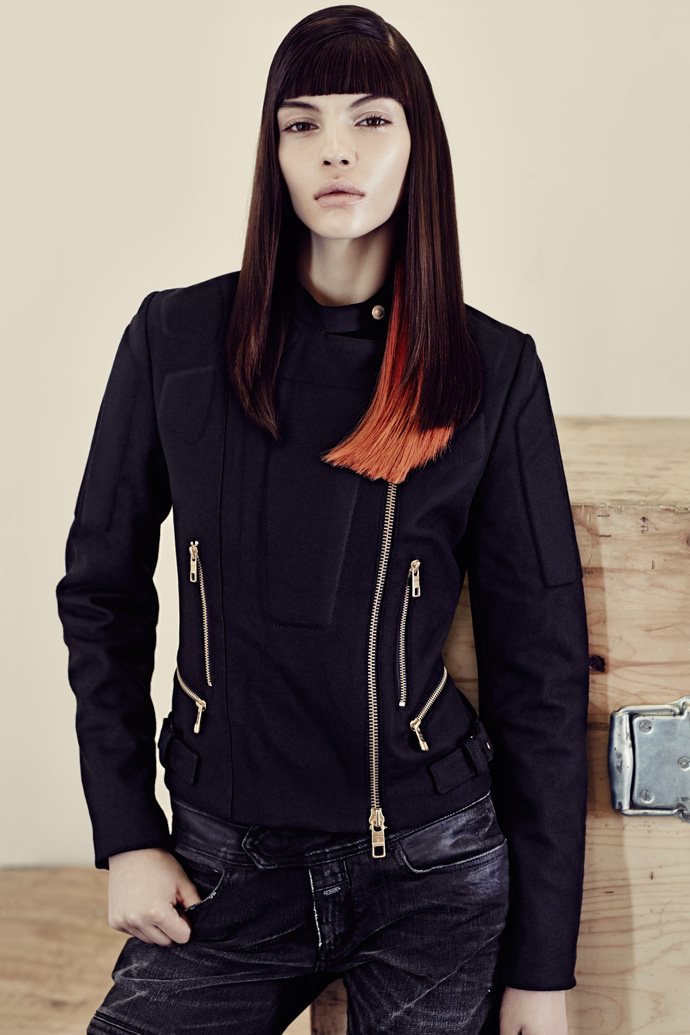
Felt Perfecto Jacket and Jeans, both FW 13/14 Costas Murkudis for Closed. Photography by René Habermacher
RH: With a clientele living in the most various meteorological conditions, does it really make sense today to produce season-oriented collections?
KM: This is a totally legitimate question. Also as we know that the big producers often deliver new products up to twelve times a year.
So for smaller brands it is indeed worth considering to orient themselves differently because they have no chance to stand up against this moloch of an industry.In a way we are overtaking ourselves with everything: when the sales start the season hasn’t even really begun, there is a resort collection, a pre-collection and a in-between collection- that is all a bit absurd. I see that with my brother, who says “I don’t need a pre-collection that is delivered in November when its perhaps snowing here and -30 celsius”. That makes no sense.
On the other side I am bound to the cycles of the classic way of producing 4 collections a year.
I think the problematics are there for everyone, but no one has yet found an ultimate solution, or takes the risk to say ‘I am going to position myself entirely new in this context.’RH: In your case do you do a presentation, or are you considering eventually a show?
KM: Right now this is not a real topic for us. Maybe next year or after that, it really depends on how we develop and what our expansion will bring.
RH: The one thing I find puzzling is with all the coverage on the shows, once the products are in the shops, you are already bored of them.
KM: I totally agree with you that three weeks after the shows you vaguely remember and when the products are delivered to the shops you practically forgot about it all. This wish and desire to own the pieces immediately is fading in that period.
But that’s what you have Zara for: they deliver within three weeks after the show a dampened version for those who can’t wait at all and never really got it anyway: those will buy the cheap copy (laughs).
By then the others just saw the newest collections and are wondering that they have ever liked the current one…. I look at this smiling.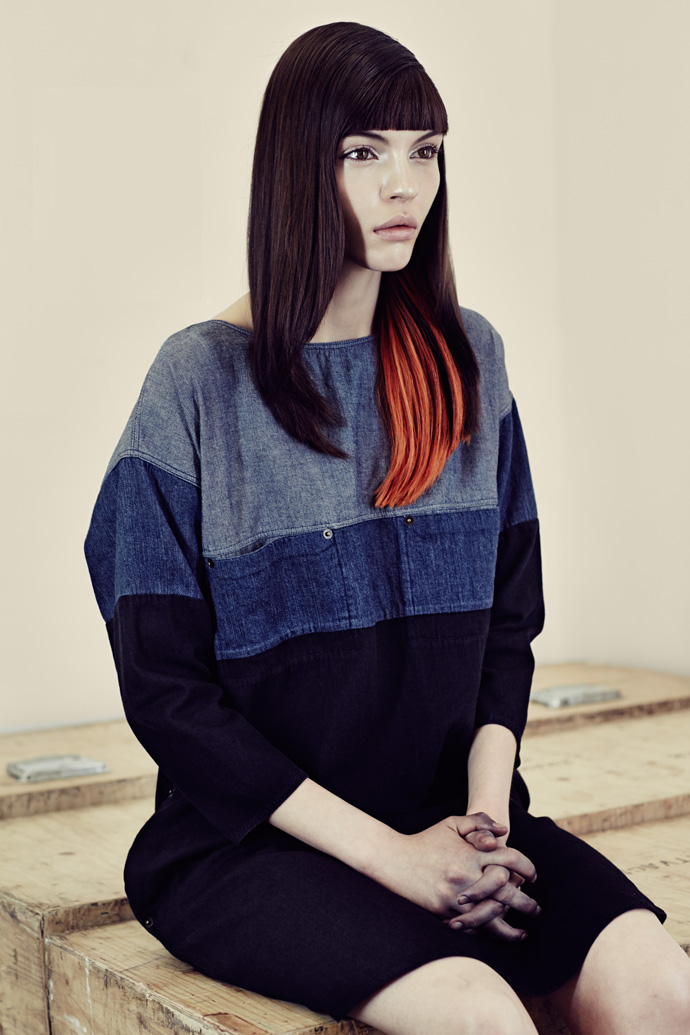
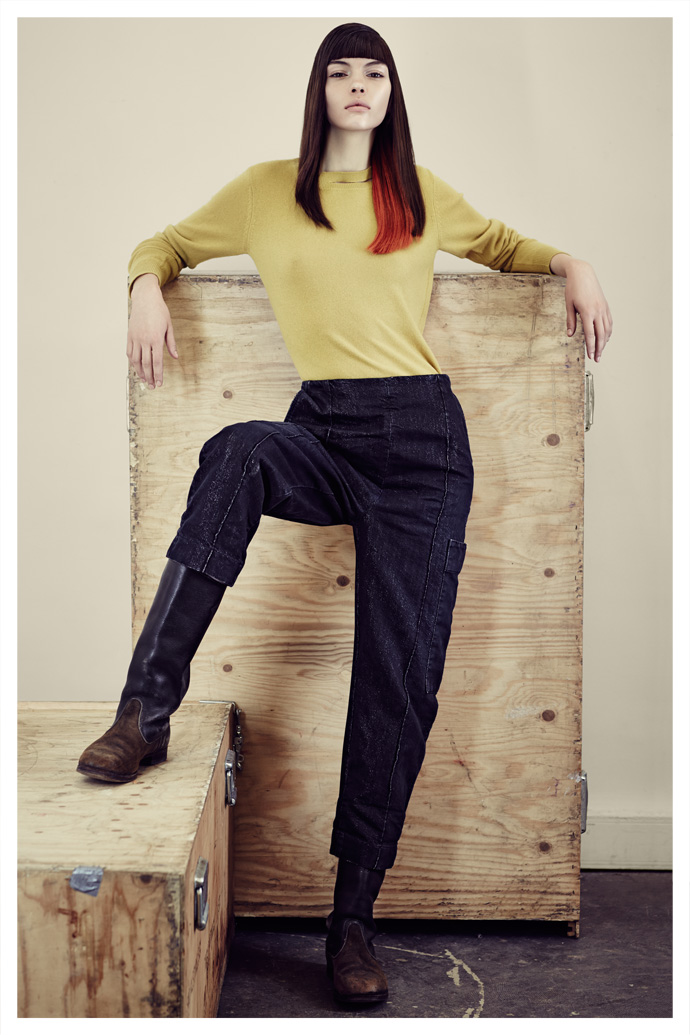
Left: Jeans dress, Right: Split neck pullover and Jeans, all FW 13/14 Kostas Murkudis for Closed. Boots: vintage DDR army. Photography by René Habermacher
RH: You do have a special relationship with Japan, is that right?
KM: Yes, when I was a small kid, I started to do judo. I had a fantastic teacher that I absolutely worshipped as a living hero.
I was excited to wear these suits, the belts. The scent of the mats, the bows, this outlandish language had fascinated me. To me it was of course an escape from my Greek moulded DDR prosaicness and the pressure to perform. I did virtually absorb all these words, ceremonies and preserve within for years.When I started to be interested in the arts I read a biography of Yves Klein, and realised he was a judo master like me, and eventually lived in Japan. I think his work was to some degree influenced by Japanese moments, in their simplicity and splendidness. This has really accompanied me ever since. The Bauhaus would have been unthinkable without the Japanese influence. In many aspects this influence has developed with me, the desire towards the exotic but as well the austere, the sophistication and the celebrated. The handling of colours, surface but also the poetic moments and the spiritual aspects behind.
I celebrated plenty successes in Japan and grew with these, so I owe a lot to the Japanese. We found each other. I was always fascinated and excited about it, to the point that Gordon, one of the owners of Closed, and I started to take Japanese lessons.
This hunger is not satisfied yet- and will always find itself in my work again.
RH: What is the last thing that stimulated you?
KM: I was very inspired by the exhibition of Martin Kippenberger: the incredible freedom of a man in dealing with the most different tools. I have great respect for his state of mind that moved me to tears of joy. I haven’t laughed that much for a while. All my senses had been spurred through this.
This interview and photographs are a Stimuleye exclusive
interview and photography RENÉ HABERMACHER
fashion editor SUZANNE VON AICHINGER
hair JONATHAN GEIMON @ AIRPORT AGENCY using Bumble and Bumble
make up MIN KIM @ AIRPORT AGENCY
model KATE B @ NEXT MODELS
thank you VERSAE VANNI @ NEXT PARIS
and LIBRAIRIE Ofr PARIS for your support -

THE OPPOSITE OF GLOSSY
-“Nobody wants to invade Marseille” claims Rudy Ricciotti,
architect of the MuCEM.And yet everyone is flocking there since the Museum of Civilisations
of Europe & of the Mediterranean, dubbed MuCEM, opened its doors just weeks ago, the first national museum to open in the Phocean city, a project 11 years in the making.Having shot & directed the introductory ad campaign for this new institution, The Stimuleye introduces you to the man who designed it, a man as famous for the fights he picks as the building he designs.
Exclusive photos by René Habermacher.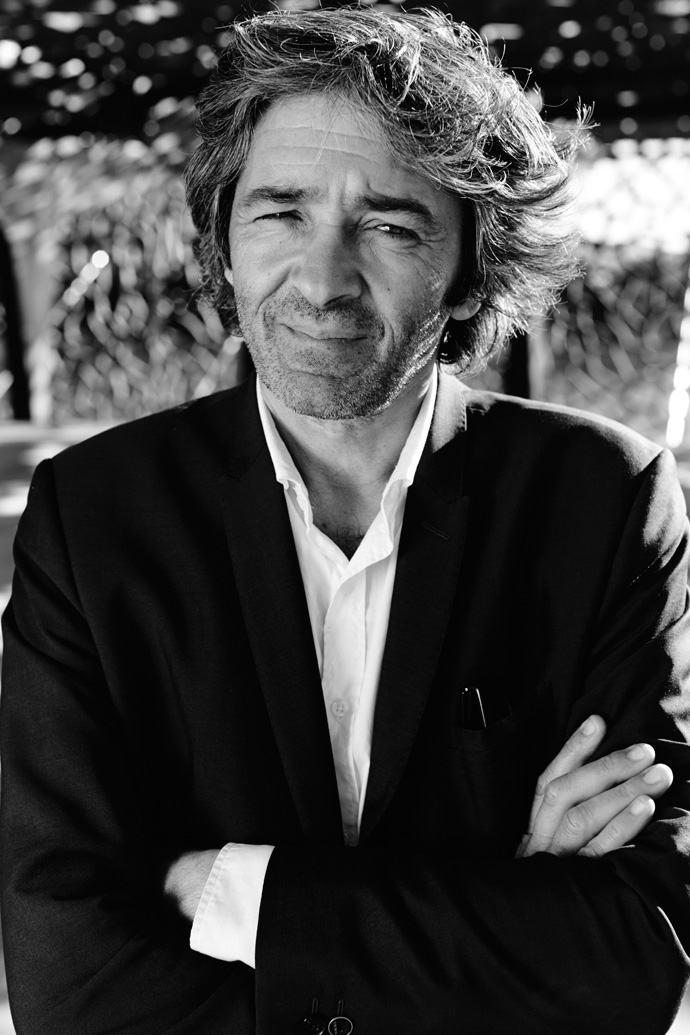 Portrait of architect Rudy Ricciotti by René Habermacher.
Portrait of architect Rudy Ricciotti by René Habermacher.One side is the Fort Saint-Jean, linked to the city by a pedestrian steel bridge. A fort not unlike the Bastille – a bastion to defend Marseille against itself – the Fort Saint-Jean had been closed to the public for centuries.
On the other, also connected by a massive steel bridge, is Ricciotti’s creation, facing the Mediterranean Sea.
Refusing “architectural bling,” Ricciotti chose to have the new building dematerialize itself to complement the Fort Saint-Jean.No reflections – leave it to the sea.
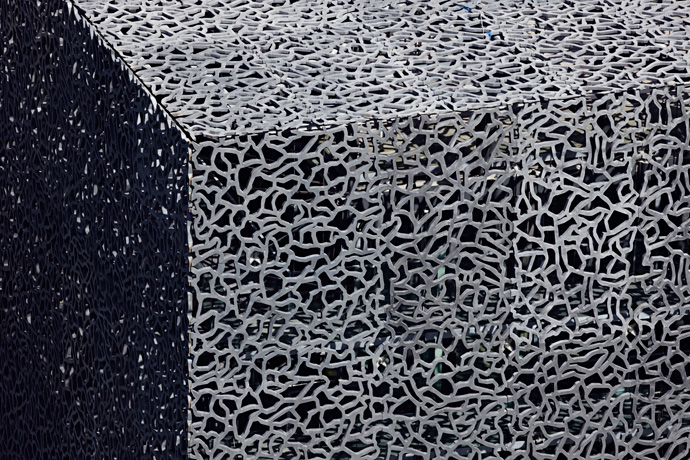
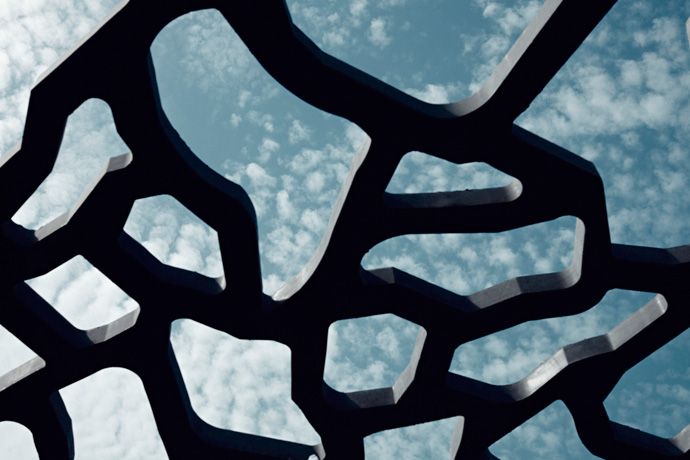
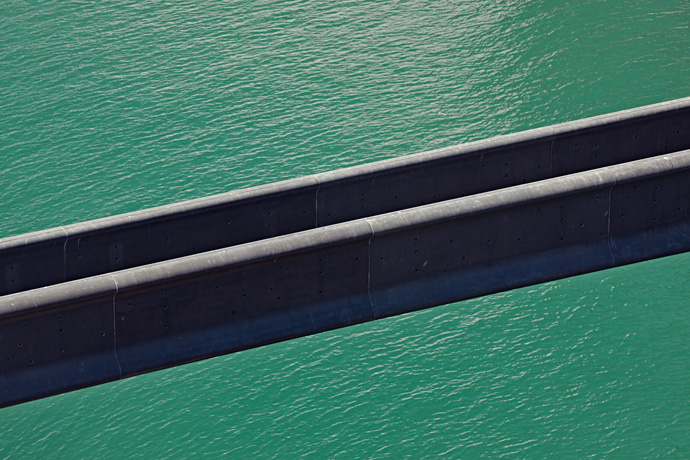
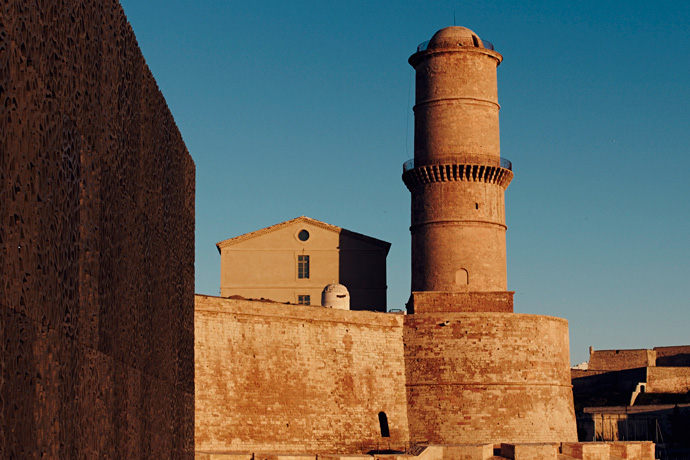 The concrete filigree lace of the MuCEM, a second skin like a screen that allows views, light and air
to pervade the space. Photography by René Habermacher.
The concrete filigree lace of the MuCEM, a second skin like a screen that allows views, light and air
to pervade the space. Photography by René Habermacher.TV spot for the MuCEM's launch, directed by Antoine Asseraf with SayWho and Agence White.
 The MuCEM's a porous monolithic body planted on pier J4 in the Mediterranean sea, connected to the Fort Saint-Jean
with a 115m long slender pathway made of massive cast iron. Photography by René Habermacher.
The MuCEM's a porous monolithic body planted on pier J4 in the Mediterranean sea, connected to the Fort Saint-Jean
with a 115m long slender pathway made of massive cast iron. Photography by René Habermacher.Antoine Asseraf: Can you elaborate on your theory of world being split between two sides, matte and shiny ?
Rudy Ricciotti: Shiny is conceptual distance, reason, power and self-assurance.
Matte is frontal narration, intuition, defeat and regret.
Pick your side… I did.AA: Mediterranean is a concept going beyond “local” but stopping short of “global” — how do you situate yourself, and the building, within that notion ?
RR: The South is a travel certificate, not a birth certificate.
The inhabitants of Munich are more mediterranean than those of Grenoble.
The Valais region in the south of Switzerland more latin than the Vaucluse in the south of France, etc.
The MuCEM is mediterranean through anxiety and existential difficulty.AA: What is your relationship to monumental architecture ?
RR: You are talking to me, you fucked my wife ?
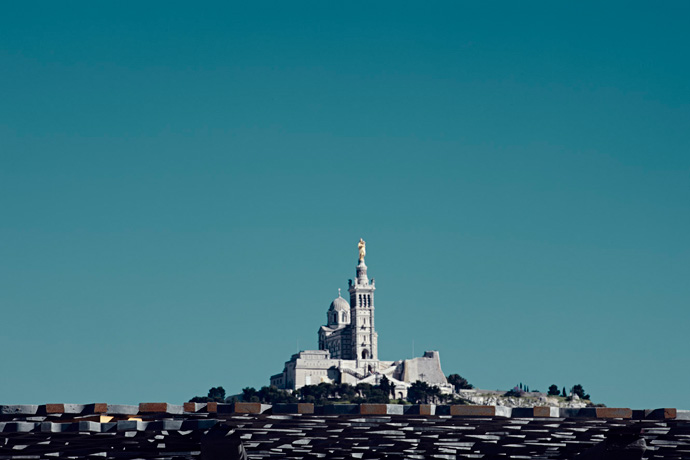
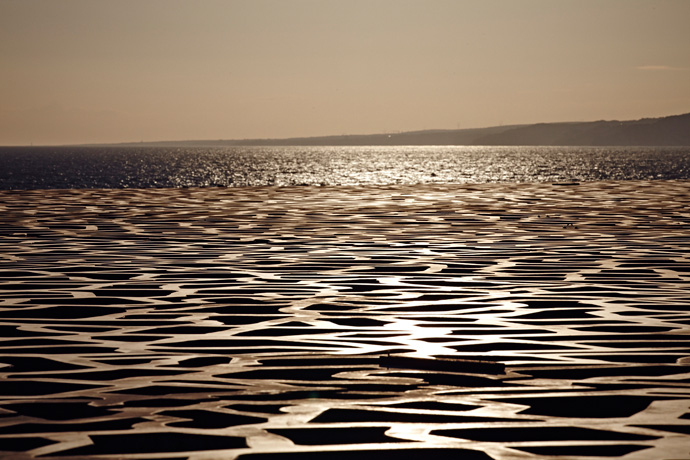
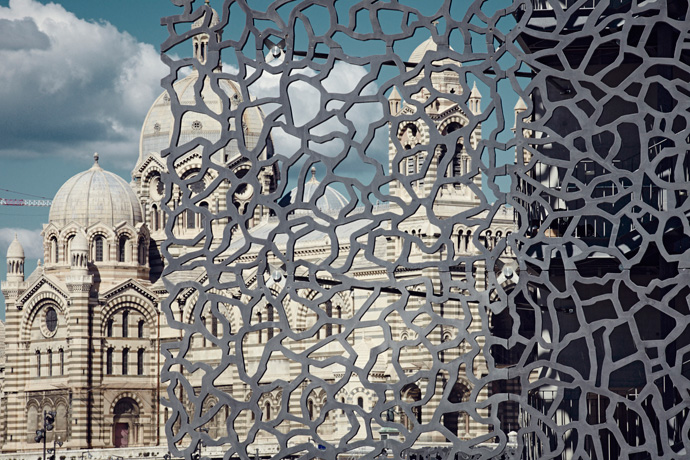
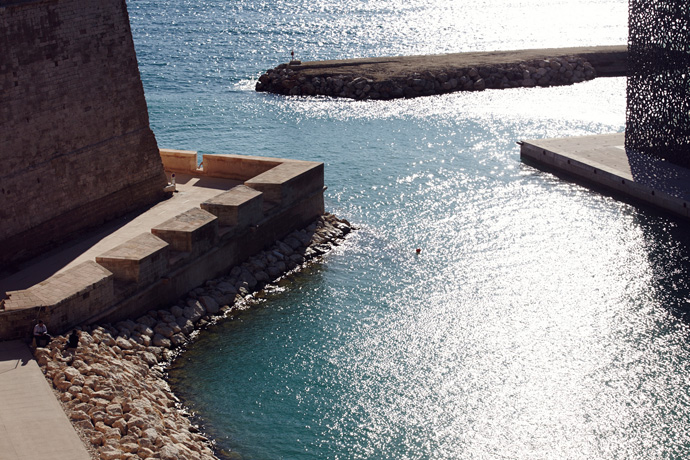 Top left: "Notre-Dame de la Garde" looming over Marseille and the the seven-level, 40 000 square meter
structure of the MuCEM. Photography by René Habermacher.
Top left: "Notre-Dame de la Garde" looming over Marseille and the the seven-level, 40 000 square meter
structure of the MuCEM. Photography by René Habermacher.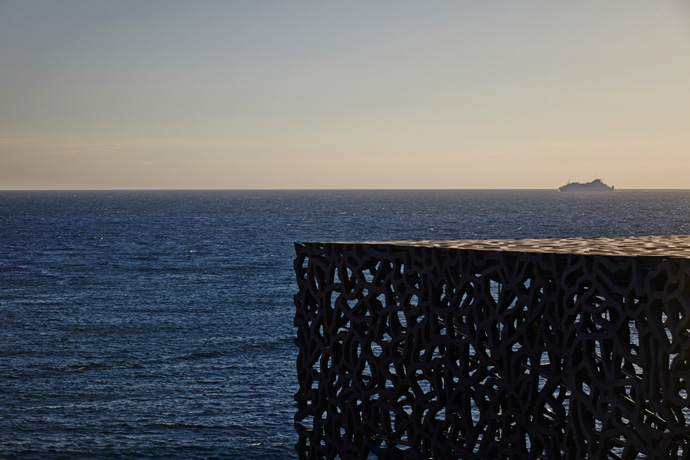
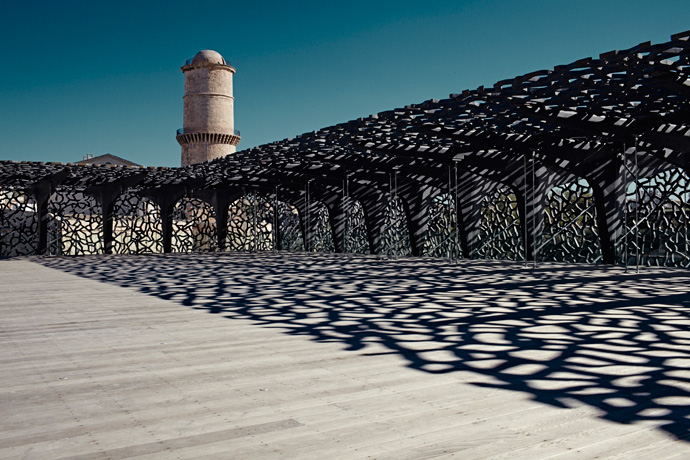
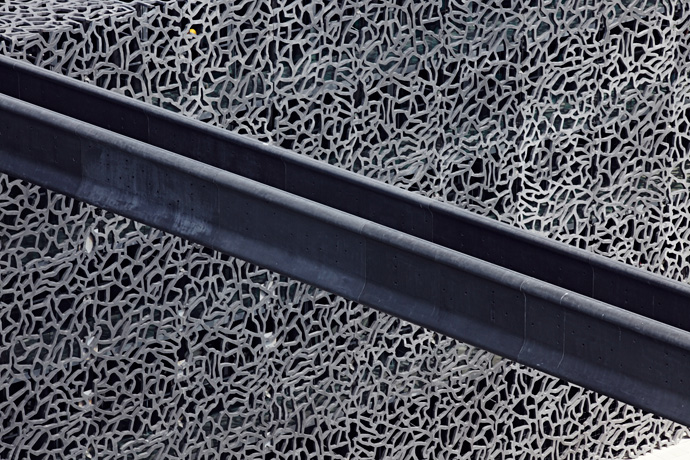
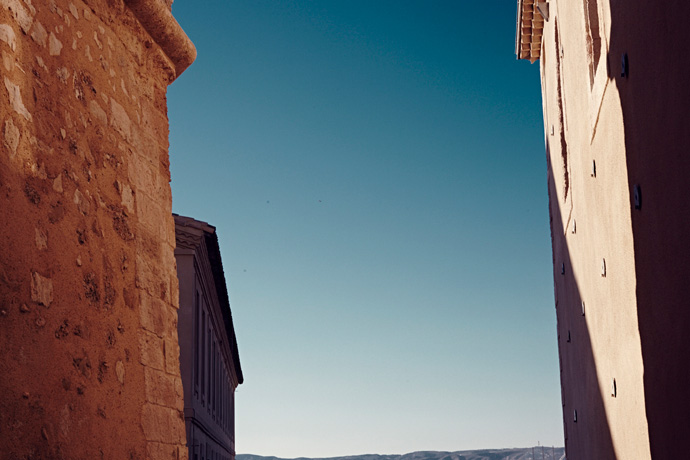 As massive the volume of the MuCEM may seem at first, it is the use of negative space that gives the building
the air of the metaphysical. Photography by René Habermacher
As massive the volume of the MuCEM may seem at first, it is the use of negative space that gives the building
the air of the metaphysical. Photography by René HabermacherAA: What is the last thing which stimulated you ?
RR: A fish soup made by my partner…
Read my last pamphlet to smile:
« L’Architecture est un sport de combat » [Architecture is a combat sport], edited by Textuel.With SayWho & Agence White
-

HYERES 2013 EXPRESS 03 EXHIBITIONS
-Besides the photo and fashion competitions, one of the Hyères festival’s strongpoints are the original exhibitions it curates. Amongst this year’s shows, Lacoste designer and 2002 Hyères winner Felipe Oliveira Baptista, up and coming photo/video/grapher Pierre Debusschere, 2001 Hyères winner photographer Charles Fréger, and ROUGH PROOF, a look at the early works of Guy Bourdin with special pieces from the private collection of Marie Laure de Noailles… of course.
A THE STIMULEYE PRODUCTION
directed by Antoine Asseraf
filmed & edited by Thibault Della Gaspera
interviews Filep Motwary
coordination Clementine Colson
sound design Ça Va Chéri -

HYERES EXPRESS: PIERRE DEBUSSCHERE
-Having seen his work evolve over the years, we are proud to announce Pierre Debusschere’s new project premiering at Hyères Fashion & Photography Festival, an installation featuring original photo and video, “I know simply that the sky will last longer than I.”
Pierre Debusschere, Portrait by Filep Motwary.
Is this your first solo show?
I did small solo shows before but i like to think of this one as my first one because it is the first time the work has been thought of for an exhibition medium.How does it feel exhibiting alongside someone like Guy Bourdin?
It is already an honour to be present at the Villa but even more to be next to Bourdin.Your subjects-models are worked in a way to look like paintings, what is your aim exactly ?
The painting, the Flemish painters are a big influence for me, there is no specific aim linked to the painting besides the connection to my inspirations.
The technique that looks like paint that you are referring to is there more in the idea layers, different layers that gives the image different steps of reading.Photo by Pierre Debusschere.
Photo by Pierre Debusschere.
Your show’s theme is beauty versus ugliness. What are your true influences? Is it connected to the work of Umberto Eco ?
Beauty versus ugliness is one of the themes worked in this show, the idea of what is beautiful or ugly today. Yes it is linked to Eco’s work, reading his book
on ugliness helped me a lot in this show.Your work is tied to the digital medium. Can you imagine yourself working in a previous era ?
For sure I can see myself working in a previous era, it is not about digital, it is more about the medium that fits the time, the idea of NOW.Photo by Pierre Debusschere.
You have created yourself a whole structure with 254 Forest, which allows you to do an original photo series, a book, an installation and a film… How important is organization to be an artist today ?
Yes I would not have been able without my team to create the photo-series, the book, the installation, the film, the soundtrack and the website !It is always about Team work for me and I’m really grateful to have them besides me. Organisation is a big part of the work, even more for project like this when we created all this body of work in 2 months. Today you need to be able to react really fast because of the technology era we live in, so that’s why a team is important too !
You need to be present on every aspect of production at the same time ! But then we can not forget sometimes that we need to disconnect ourselves 😉
-

-

-

-

-

-

-

-

-

-

HYERES EXPRESS 2013/ JURY PREVIEW / IMRAN AMED
-One of the most unexpected and influential sites in fashion today is Business of Fashion. Imran Amed, its founder and editor, answers our questions before joining the Hyères 2013 Fashion jury.
Photo by Scott Trindle.
AntoineAsseraf: Along with Industrie Magazine and the rise of the fashion blogger as a class, your blog has drawn attention to a lot of work, which was heretofore considered a bit peripheral to a designer’s raw talent. What do you make of a place like Hyères that still somehow naively stresses the belief that talent will find its own way? If you were to create a Business of Fashion competition/festival, how different would it be?
Imran: At BoF, we firmly believe in the power that lies at the intersection of creativity and business. Both are essential to a successful fashion enterprise, and one can’t work without the other. It’s a true symbiotic relationship. If we were to do a BoF festival therefore, it would be a combination of creative fashion presentation and business plan pitches, and the judges would come from both sides of the industry.
FilepMotwary: It seems to me that many of the young designers who dream of a future in fashion are unaware about “the business” of fashion in general. Should they worry of how things have evolved, and turned the industry into this huge marathon of task, values that need to be constantly re-valued, trends that suffers from the lack of longevity etc…?
Imran: I tell my students that once they start their own business, they will spend 90% of their time managing the business, and only 10% of the time designing. This balance is not something that has necessarily changed in recent years, but it’s true that there is more and more for a young designer to do in the global, digital fashion world in which we live today.
Sean Santiago: The internet and its popular content-sharing platforms, i.e. Tumblr and Pinterest, are destabilizing traditional revenue streams faster than new ones are being created. How will original creative output find funding in the future and do you see crowdsourcing methods such as, for instance, a Kickstarter campaign, possibly becoming necessary to the creation of original artistic output? Or will a big brand always foot the bill when it comes to fashion-related content?
Imran: Brands and designers could certainly fund portions of their businesses — say specific collections or products — via crowdsourcing platforms. But ultimately, I suspect that they will need to turn to traditional forms of fundraising (selling equity or taking loans) in order to fund the business over the long term. A young fashion business is highly cash flow intensive, and therefore will likely require stable and planned funding in order to fuel growth and expansion.
Malibongwe Tyilo: BOF is recognized as one of the boldest voices in fashion writing, often publishing pieces that might not be appreciated by some PR people. Considering how important PR has become to design companies, how does that affect how the design businesses deal with you?
Imran: We are bold, but I believe we are also fair and balanced. Part of the role we see for ourselves at BoF is to surface and shed light on important industry issues that merit wider discussion and debate.If we can do so in a way that is balanced and fact-based, then most PR professionals seem to respect us for that.
Certainly, there are some who would prefer to control all the communication about their clients, but this is misguided and unrealistic.
28th International
Fashion & Photography Festival
Hyères 2013
April 26>29 -

HYERES-EXPRESS 2013 DESIGNER PREVIEW: YVONNE POEI-YIE KWOK
-Netherlands (25). and last year I graduated from the Amsterdam Fashion Institute graduate (2012). She is now in research of possibilities to start her own label.
Portrait Filep Motwary.
How does it feel for you being selected for this year’s edition of Hyeres ?
It’s an honor to be selected for one of the top fashion competition in the world. It’s really nice to be in the South of France, meeting new people and working in a nice environment.How would you describe Hyeres in three words ?
Beautiful, cozy, atmospheric.What has been your favorite part of the process so far ?
Working in the garden at the Villa Noailles with sunny weather and great surroundings.In three words, what is your collection about ?
Marionettes, handwork and youthfulness.In what ways you think participating in a Festival like Hyeres will help you in the future ?
I think it’s a great platform to present yourself internationally. Getting in contact with different company’s, people in the industry and press is a great starting point to start your own label or to work for a fashion brand.28th International
Fashion & Photography Festival
Hyères 2013
April 26>29 -

HYERES EXPRESS 2013 / DESIGNER PREVIEW / XENIA LUCIE LAFFELY
-Swiss. Studied history of art and modern French before starting fashion design at the HEAD-Genève. About to start an internship at 3.1 Phillip Lim, with the prints team.
Portrait by Filep Motwary.
How does it feel for you being selected for this year’s edition of Hyeres?Three years ago when I came to the festival for the first time, it was love at first sight so to be a part of it today is a great honoured and I’m so touched and excited.How would you describe Hyeres in three words?
Warm, sharp and respectful.What has been your favorite part of the process so far?
Drawings and making collage.In three words, what is your collection about?
Preciousness, sentimentality and drawings..In what ways you think participating in a Festival like Hyeres will help you in the future ?
It will help me to be more aware of my own work and of the fashion world.28th International
Fashion & Photography Festival
Hyères 2013
April 26>29
HYERES EXPRESS 2013 / DESIGNER PREVIEW / HENNING JURKE
-Germany, Berlin. 28 years old. Studied at The Berlin University of the Arts, gratuated in October 2012. Working on his portfolio.
Portrait by Filep Motwary.
How does it feel for you being selected for this year’s edition of Hyeres?
Being selected feels like a dream came true.
How would you describe Hyeres in three words?
Inspiring, pleasant, fantastic.
What has been your favorite part of the process so far?
To meet the team of the Hyères Festival. It is great to have this people who give the support for me and my work.
In three words, what is your collection about?
Anticipation, melancholia, luck.
In what ways you think participating in a Festival like Hyeres will help you in the future?
The Festival is a great platform to represent me and my work as a designer. The team helps each designer , giving a great support with the shows and also the showroom. I hope to find a job as a designer in a house…28th International
Fashion & Photography Festival
Hyères 2013
April 26>29
HYERES EXPRESS 2013 / DESIGNER PREVIEW / SHANSHAN RUAN
-A Chinese national living in Paris who graduated from ESMOD, and works as freelance for a Japanese fashion houses and fashion galleries.
Portrait Filep Motwary.
How does it feel for you being selected for this year’s edition of Hyeres ?
Unexpected and magic! I ‘ve been following Hyères while I was still a fashion school
student and I never got the time and the courage the send my file. Now it has been three years since my graduation and I would love to do something for my own, without too much restriction. It’s great Hyères gave me this opportunity.
How would you describe Hyeres in three words ?
Energy, Exchange, Experience.
What has been your favorite part of the process so far ?
Hyères allows us to work with the professionals from the fashion industry. I mean not only the ‘Glamour’ part of fashion, but also the very ‘technique’ part, the fabric and accessories suppliers, the production factories, the dyeing experts, the pleating artisan. It is great to get to know them and to work with them. I’ve learned so much.
I appreciate their patience and kindness, without their help I will never complete the
collection as I expected.
In three words, what is your collection about ?
Movements, Sentiments,Memories.
In what ways you think participating in a Festival like Hyeres will help
you in the future ?
Hyères gives us opportunities to know people, to build the connections, but also, get us , designers known by other people, to let people hear our voice, know about our work, our stories. Hyères is not just an event that happens and ends, it’s a continuation.28th International
Fashion & Photography Festival
Hyères 2013
April 26>29
HYERES EXPRESS 2013 / DESIGNER PREVIEW / XING SU
-From China/Northern Ireland/Canada. Age 26. Studying at Fashion Institute of Technology, NY.
Portrait by Filep Motwary.
How does it feel for you being selected for this year’s edition of Hyeres?
It is an incredible compliment to be selected for a fashion festival with such a long and distinguished history. I’m excited and a bit anxious.How would you describe Hyeres in three words?
A warm fantasy.What has been your favorite part of the process so far?
Working with an amazing professional team to elevate a first collection and being surrounded by other designers who share similar goals, ideas, and opinions about fashion.In three words, what is your collection about?
Play and balance.In what ways you think participating in a Festival like Hyeres will help you in the future?
Exposure and publicity are so critical to one’s success in fashion now, and I can’t imagine a better platform than the Hyeres Festival.28th International
Fashion & Photography Festival
Hyères 2013
April 26>29
HYERES EXPRESS 2013 / DESIGNER PREVIEW / SATU MAARANEN
-Helsinki, Finland.Graduated this Christmas from Aalto University, School of Art, Design and Architecture. At the moment she designs prints and garments as a freelancer for different companies.
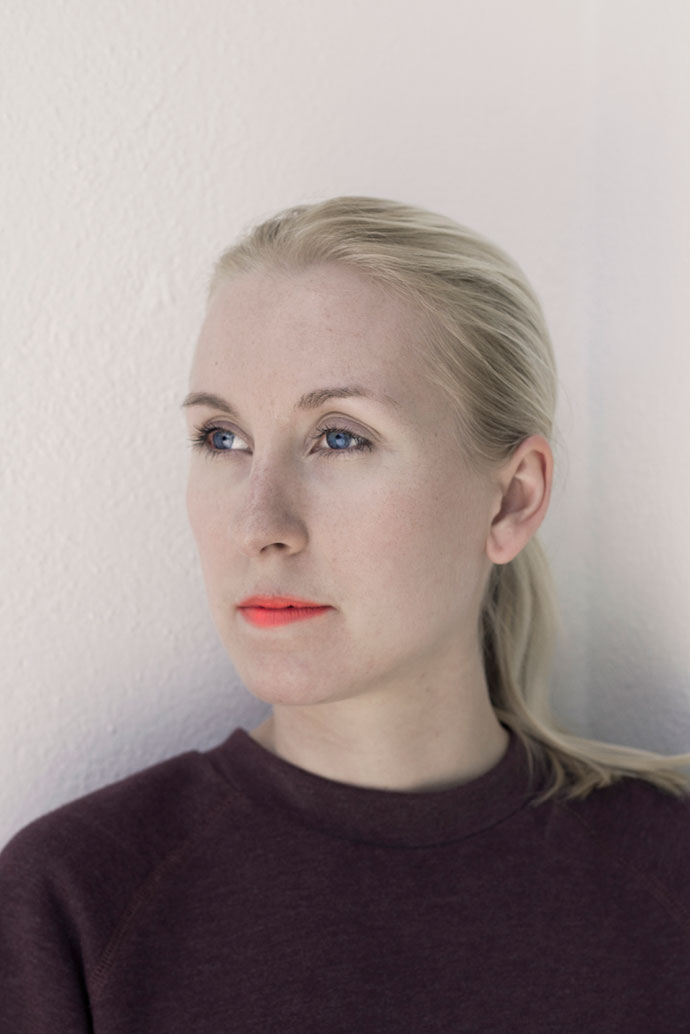
Portrait by Filep Motwary.
How does it feel for you being selected for this year’s edition of Hyeres?
It feels really great. I am superhappy about it. Hyeres is impressive opportunity to present your work for international audience.How would you describe Hyeres in three words?
Delicious food, sunshine and same-minded people.What has been your favorite part of the process so far?
The favorite part of the process has been doing all the openscreen prints. To do it freestyle is fun and relaxing for me.In three words, what is your collection about?
Landscapes, old Haute Couture and innovative materials.In what ways you think participating in a Festival like Hyeres will help you in the future?
It will help me to get new working opportunities and to create important connections. It is also going to be interesting to get feedback from all the fashion professionals..28th International
Fashion & Photography Festival
Hyères 2013
April 26>29
HYERES EXPRESS 2013 / DESIGNER PREVIEW / DAMIEN RAVN
-Norway (31). MA graduate from the Royal Academy in Antwerp. Runs his own label and teaches design for 3BA at the Fashion Department of the Warsaw Fine Arts Academy.
Portrait by Filep Motwary.
How does it feel for you being selected for this year’s edition of Hyeres?
Purely very honored.How would you describe Hyeres in three words?
Historic, impressive and panoramic.What has been your favorite part of the process so far?
Working together with all the sponsors to develop new parts of the collection especially for the festival.In three words, what is your collection about?
Bonded minimalistic maximalismIn what ways you think participating in a Festival like Hyeres will help you in the future?
I know Festival Hyeres is a wonderful opportunity to show your collection to the world and it will hopefully open some doors in the future.28th International
Fashion & Photography Festival
Hyères 2013
April 26>29
HYERES EXPRESS 2013 / DESIGNER PREVIEW / TOMAS BERZINS & VICTORIA FELDMAN
-Tomas Berzins / From Riga, Latvia / 21 years old / graduated from ESMOD Paris 2011 / co-owner of victoria/tomas label.
Victoria Feldman / From Moscow, Russia / 24 years old / graduated from ESMOD Paris 2011 / co-owner of victoria/tomas label.
Portraits by Filep Motwary.
How does it feel for you being selected for this year’s edition of Hyeres?
This is just great to have the opportunity to present our experimental collection, that was developed specially for this Festival. As well to have people around who are interested in it.
How would you describe Hyeres in three words?
Eat, Pray, Create.
What has been your favorite part of the process so far?
Most of the clothes we create are ready-to-wear. Participation in this Festival opened the doors to step a bit aside from wearability and to work more as an artists, bringing out many handmade and sophisticated technics that would not be easily adaptable to real urban life-style that we love so much. It gave us a certain freedom to combine both visions that we really care about.
In three words, what is your collection about?
Heritage, emotions, aggressiveness.
In what ways you think participating in a Festival like Hyeres will help you in the future?
This is a very rich start for a young designer and this is a priceless experience that you get, as it will be there for all your life.
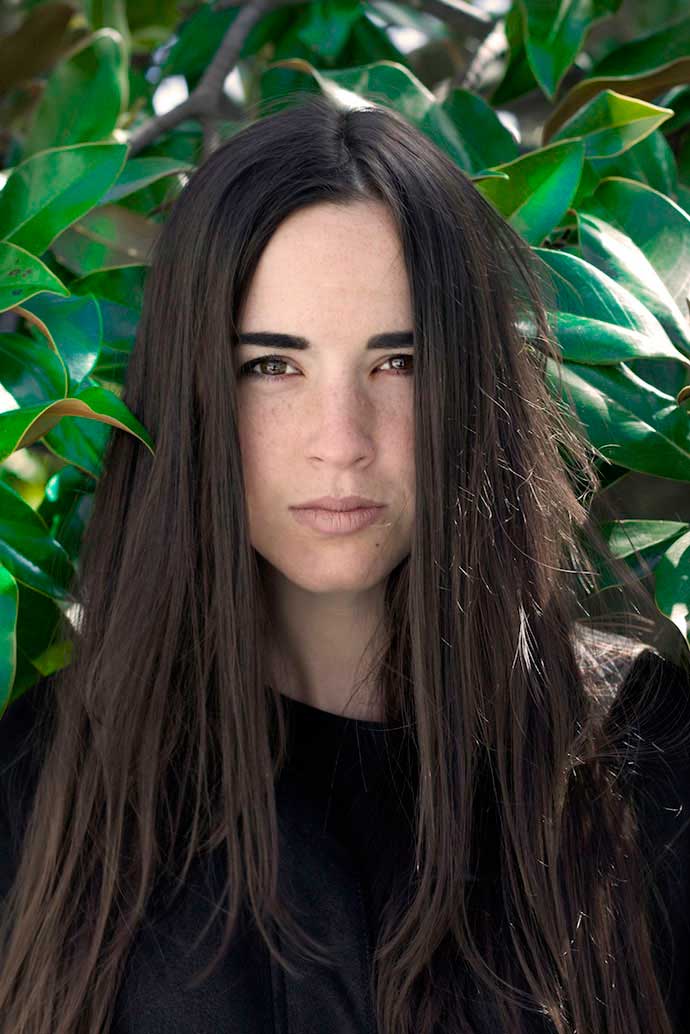
Portraits by Filep Motwary.
28th International
Fashion & Photography Festival
Hyères 2013
April 26>29
hyeres express: FLORIANE DE SAINT PIERRE
-Paris-based Floriane De Saint Pierre needs no introduction as today she considered as one of the ten most powerful women in fashion and beauty. She set up Floriane de Saint Pierre & Associés back in 1990. Twenty three years later she is the person all important fashion houses turn to in search for help to find an executive or designer. The list of successful matches consists of putting Christopher Bailey at Burberry, finding Alber Elbaz’s first creative director position, among so many others.
This year, she serves as jury member for the 28th edition of the Hyeres Festival, and answers the questions of the Hyères blogs.
Floriane de Saint Pierre, portrait by Ben Baker.
MalibongweTyilo: Having been responsible for hiring some of the biggest names, what would you say is the most common quality amongst designers who are able to head these successful mega brands?
Each of the designers has a crystal clear vision of their personal aesthetics. The most important factor for them has been their ability to look ahead of their time and translate their vision into something that you identify with.FilepMotwary: How relevant is creativity to the way the fashion industry functions today?
We can draw a parallel between the street photography of fifty years ago and what we see in fashion and design bloggers today- there has always been creativity, but what we are seeing is a huge shift in its expression. The expression of creativity is effortless today. However, creative design has never been more relevant and necessary than it is today. From fashion brands to Apple and Evian, etc. global brands absolutely recognize the importance of design as a factor in strong-value creation.AntoineAsseraf: Does your work end once a designer has been selected and hired
– or do you stay involved somehow ?
We always stay in touch.BrunoCapasso: Today the world imposes a new way of thinking, a reinvention in fashion, what new thing do you search in the new designers? How far does the media influence and disrupt your choices?
Designers must possess a personal aesthetic that resonates not only in fashion, but functions as a global creative proposition. Everyone today associates themself with a creative tribe and they are very demanding with the integrity- design, quality, services, and reputation- of a brand. Media is great for this- it is what gives design talent the chance to become visible and if there is genuine talent there, the media will be very supportive and loyal.SeanSantiago: The disconnect between Hedi Slimane’s last collection for Saint Laurent Paris and the work of his predecessors couldn’t be more striking or controversial. When judging these young designers based on their creativity and ingenuity, do you find yourself reconsidering the standards to which you hold a commercial designer like Slimane?
A product today makes sense only if it captures and reflects or even anticipates the profound sociological evolutions of its time. Hedi Slimane is a designer who thinks globally and very much ahead of his time. He knows what Saint Laurent means today.VogueGermany: Is there any candidate you’re already keeping an eye on ?
Yes, of course!28th International
Fashion & Photography Festival
Hyères 2013
April 26>29
hyères express: felipe oliveira baptista
-“a screen to the brain” is what Felipe Oliveira Baptista wants to show us in Hyères.
Winning the Hyères award in 2002, then the ANDAM Award, “FOB”, as he is nicknamed, made himself a name showing in Paris over the last 10 years, and is now also the creative director of Lacoste.
As he prepares his return to Hyères, this time as Jury President, he faces the inquiries of our team of bloggers…
Felipe Oliveira Baptista by René Habermacher.
Filep Motwary: If I asked you to look back to the beginning of your career and compare how the industry worked then to how fashion functions today, what would you say are the biggest changes?Everything has speeded up a lot, more collections, pre-collections, collaborations & capsules. Internet gave way to a whole new way of spreeding new talent, ideas and concepts. it is a very different landscape from the beginning of the century. On the other end, we seem to live in an era where there is too much of everything and by the time something new is found, it is already finished.
Warhol’s 15 minutes have turned into 15 seconds.
Antoine Asseraf: Winning Hyères + Winning the ANDAM + Consulting for other brands… is that the only path for French-based designers to establish themselves today ?
I think Paris is the toughest fashion week for a youg designer. Between all the big houses and a strong presence of other international designers, it makes the spotlight smaller; so Hyeres & the Andam are a great help to get your name out there.As for working for other brands, if you are independent and do shows, it is almost mandatory.
Sean Santiago: How do you keep a sportswear brand such as Lacoste relevant on an international scale, and is international appeal vital for a successful brand? Where does that appeal come from – catering to diverse markets or maintaining a uniquely French aesthetic that people find desirable?Lacoste is relevant on an international scale with more than 1500 shops world wide. We create a base and main message through the show collections, pre- collections and advertising campaigns, but there are regional adaptations done to answer local needs.Bruno Capasso: You being Portuguese felt any difficulties to enter in the market, even though you have a British training? What do you think of Portuguese fashion today? Which are the things that need to be improved so they have more global approach?I don’t know…I do not think my nationality went for or against me, I believe individuality is stronger than one’s nationality.
Vogue.de: You are going to have an exhibition at Hyères as well. What are you going to display?“A screen to the brain” is an installation made of 100 different sized screens that go through the creative process of a collection: references, collages, drawings, videos to the pages of fashion magazines.
This installation will evolve and will be shown again in a FOB exhibition starting next october in MUDE, Lisbon.
hyeres express: maurice scheltens & liesbeth abbenes
-“The specialty of Scheltens & Abbenes is to meticulously arrange objects” claims the biography of photography duo Maurice Scheltens & Liesbeth Abbenes. Working since 2002 as a duo, the minimalist compositions they painstakingly compose have earned them attention from clients and editors alike.
As part of the Hyères 2013 Fashion Jury, they answer the questions of the blog partners – Un Nouveau Ideal by Filep Motwary, *Fruitpunch by Sean Santiago, BRRUN by Bruno Capasso, Vogue.de, Malibongwe Tyilo and The Stimuleye, of course.
Liesbeth Abbenes. Photo by René Habermacher.
Filep Motwary: How does a garment get your attention? What are you searching for while on set?
Maurice ScheltensA sensitivity in material and design. Looking at a garment it often tells if the designer understands it’s own work without stopping to early (or to late) in the process. This attitude is connecting in the way we are also trying to stretch our own sensibilities.Sean Santiago: Your work is striking in its simplicity and for its reductive qualities – is fashion more interesting to you in theory more often than in its execution?
We are more interested in what we see then in what we know or should know. After ‘building’ is the moment of truth. Our curiosity by testing an idea for it’s visual qualities is the driving force. That is also why we keep on searching, experimenting and checking during the shoot instead of making photographs from a sketch made on the drawing table. This doesn’t mean that thoughts or drawings as they are can be beautiful and interesting to. It’s a matter of where to put all these aspirations.
Maurice Scheltens by René Habermacher.
Antoine Asseraf: As jury members used to shooting Fashion as objects, can you abstract the mise en scene, the show, the person to judge only the garments ?
Actually we see the same struggle and solutions in the garments as we face while shooting fashion or any other object in front of the lens. Maybe it’s a healthy distance that we have looking at fashion because we’re not ‘over informed’. We’re responding to what we see with the same critical eye as we do in our own work.
Bruno Capasso: How do you work as a duo – do you have 2 distinct visions ?
Our collaboration has been growing over the past ten years. It’s an evolution in which we grow individually towards each other and makes it difficult to say what comes from who. Individual credits would be out of place. See it as a chess game in which one makes a move and the other responds onto it… on and on.

davide balliano
-He works across many mediums, makes work and research constantly and needs to have a lot of order in his life.
New York-based Italian artist Davide Balliano had a conversation with me about his artistic trajectory, his work, rock climbing, his influences, his love of intervention and his first show in Paris at the Galerie Michel Rein.
Davide Balliano UNTITLED_Woman V Ink on book page 21x26,8 Cm 2013 Courtesy: Michel Rein Gallery, Paris
Lynsey Peisinger: Tell me a bit about your life and your path as an artist.
Davide Balliano: I was born and grew up in Torino, in the northwest of Italy. I was there until I was 18 and then I started in high school studying advertising and graphic design. It was a very peculiar school, a very specific school, which had a lot of elements that are still useful for me now. Especially the graphic design elements, the study of the image, the history of the image, art history. All of that is still informing my work today.
After that, I moved to Milan where I studied photography at Bauer, which is a fabulous school of photography. It is probably the last public school of photography that is left in Italy. What I liked of the school was the approach that they had, that I think they still have now, where rather than teaching “photography as a job”, they tried to raise us as artists working in the medium of photography. They train you as an artist who used the tool of photography. Then what you do with that tool is your choice.
Two years after school, I went to Fabrica, which is a large artist residence in Treviso, in the north east of Italy, a half hour from Venice. It is a beautiful place. A huge building built by Tadao Ando and there are usually approximately 40 artists in residence. It was very commercial-based. There is not much interest in pure artistic research. It’s more applied art. It was a very good experience–they pay you be there, they give you studio, they pay for all of your materials, they give you an apartment. You don’t have to worry about anything. But, even if it was great, it sort of crushed my relationship with photography. Fabrica had a very strong way of shaping the people that were there, so they were not making it a mystery that they couldn’t care less about the kind of photography that I was doing! I was very young, I was 21.
After Fabrica, I stayed one more year in Milano, then I got badly bored of staying in Italy. So I moved to NY in 2006. And it is in the early time in NY that I started to do other stuff. I felt that this move to NY was sort of giving me a clean cut from everything that I did until then. I sort of put photography a bit on the side and I started to draw and to intervene, but still on photographic images. I assume that because of my background in photography, I always have a difficult time starting anything from a blank background, you know from a white slate. For me, it has always been terrifying!
Davide Balliano UNTITLED_Barbaro Watercolor and acrylic on book page 18x25 Cm 2012 Courtesy: Galerie Rolando Anselmi, Berlin
LP: How did you start to move into the mediums you are working with now?
DB: So I started to print out images, mainly from the internet at that time. I still collect a lot images just for my inspiration. And I started to draw freehand on them, mainly abstract geometrical mess! Abstract scribbles, nothing with a precise meaning. Pretty soon, it sort of got clear that the issues that I had with photography were still there–even if I am intervening on top, I still had to take care very much of the meaning of the background image.
There are some images that you can just use for their mood, but there are other images that have a precise meaning that carries responsibilities. I think that this is something that you can use but you need to be conscious about it.
I always hate any kind of work in any kind of medium that just takes strong images and slams them there without standing by it. I always find that it’s a very cheap shortcut. It is something that I always hate.
So, then I started to draw on art history images because I felt that they left me more freedom somehow because there is already a big gap. You are more free to relate with the feeling of the image rather than with historical facts. The facts are there and I agree that I should deal with that, but there is a distance so there is a larger filter. So if I make a drawing on top of a portrait of a king, I should probably do research about who it is etc, but I don’t. And most people wouldn’t say “why did you make a drawing on this king and not on another one?”.
If you do the same kind of thing in photography, it is difficult because photography is such a young medium that almost any photographic image is in a historical context. So from there, the intervention grew more and more precise and became more and more essential. So if you take a drawing of four or five years ago, which was abstract and geometrical, but still messy and not so calculated, they sort of condensed somehow and at some point, it felt a need to take this intervention that I was doing on paper and put it on other mediums.
I burned that town just to see your eyes shine Wood and glass 137x48x48 Cm 2012 Courtesy: Galerie Rolando Anselmi, Berlin Photo: Nikki Brendson
LP: Tell me a bit about the medium of performance.
DB: Performance, which I do although rarely, is a different thing although I feel that it is strongly connected to….photography. It is interesting, I feel that performance is strongly connected to photography because I still feel it as the production of an image. An image that is locked by a location and by a time. I am very fascinated by the potential of making a legend with performance, not necessarily mine. Sometimes you see performances that are unrepeatable–the original work is born in one place at a specific time and if you were there, there is nothing that can repeat that moment. And it gives you something that is so unique, it sort of makes you part of the history of the work, much more than in other mediums.
Most of the time in other mediums, the work is done by an artist and then is shown. And the artwork has a life and it will be the same life for the next many many years. But a performance is in a place and in a moment and if you were there, you had the privilege of being part of it and then nothing will take that away. I find it fascinating. And I relate to it as the creation of an image, practically speaking.
LP: It sounds like performance gives you an opportunity to experience being an artist in a different way.
DB: Exactly. And also seeing what it means for other artists. It has been great because I am completely incapable of doing it in any other medium. I am sort of a control freak for anything else that I do. I know that in performance, I very much enjoy opening up to collaboration and seeing what it brings.
LP: At which point in your life did you realize that you wanted to be making art? Was it from childhood? Did you go to that graphic design school because you knew that already about yourself?
DB: Well, I will say that it depends. I always, since when I was a kid, felt an extreme need for creative expression. So I always had no doubt that I would be doing something creative in life. But, the decision to make exclusively art research sort of developed over the years. It felt like everything else just dropped and it stayed there. For all of my school time, I had the idea that it was impossible to only do that.
I always thought “I need to do something else on the side”. For example, I thought I could do graphic design while doing other work. Also with photography, but photography was even closer to making pure artwork. But it was an idealistic idea that I could be an artist but also make commercial stuff. I needed to take a decision between the two things. And I think that especially when you are young, people want one or the other.
Another thing that I understood–I sound like an old grandfather saying “when I was young…etc”! — When I was in high school I was doing a lot of rock climbing and at a certain point I had a trainer and was training five days a week. I loved it, but I liked to go out and go to concerts too. I had my social life which was very important to me. Everyone else there was like a monk about it. Just training, training, training. They ate only certain food, they were constantly on a diet. Complete dedication. I understood that I couldn’t at all put in that type of dedication and I couldn’t compete with people that were that dedicated to it. And later, I felt the same way with photography.
If you are trying to do something good, you should consider that most likely there is somebody else that is trying to do it and he is going to be very good at it and he is going to put all his energy into it, he is going to make tons of sacrifices and he is going to go through hell to achieve it. So if you are not up for that, you are in for a competition that will never bring you anywhere. So photography for me was sort of like that.
I was in Milano therefore everything was about fashion photography. I mean, fashion photography was fun! I would go to a set, with models and people and music. It’s all fun. But if you are trying to do it, you are in competition with 500 kids obsessed with their freaking portfolios who are putting their money into making fashion photography. I’m like “hell no”! I have to be paid to make fashion photography, not the other way around. People would tell me that I had to put together a fashion photography portfolio and then when people look at you because of that, you bring in your art research. But for me, I knew I would not have the energy to do that because I was already putting all my energy into my research. And I sort of became clear that it wouldn’t work. I had to push on thing or the other.
So I decided only to concentrate on art. I assisted for many years. I wanted to learn from an artist. I wanted to learn about art-making and also the practical side of it.
Davide Balliano UNTITLED_Grid27 Acrylic on linen 120x180 Cm 2012
LP: When you came to NY, you assisted Marina Abramovic for four years. How did that experience influence your work and how did it prepare you for your own path as an artist?
DB: For me, Marina was like my own private university. She taught me everything that I know about surviving as an artist.
Independently of the love that I have of her work–I approached her because I always had an extreme fascination with her work– the privilege that I had when working with her was that I was in contact with the private side of her. And what I gained from the private relationship is to see how she is completely dedicated to her work. Marina is all work. And there is an insane amount of energy and dedication that she puts into it. Her work is her life, there is no separation, there is no in between.
The personal investment that she makes in her work, I assume gives her this concentration that comes out so clearly in the work. And, other than that, she is such a big artists that if you work with her for four years, afterwards you can truly do anything. I came out of that experience being practically scared of nothing.
Marina works at such a level of intensity that there is really nothing that you can’t do after that. It is like boot camp. You are so used to working under pressure –good pressure, but pressure–daily. Everyday was the same amount of concentration and speed and pressure. The responsibilities are always big. There is never a day that you go and pick up flowers! Every day is something big, something important, something that you can’t mess up. When you do that every day for four years, you come out and truly its like those American movies about Marines. You can really do anything!
LP: You seem to have an approach to your work that is extremely organized and structured. It seems to me that are an artist who approaches your work like one might approach any business in terms of how you structure and use your time and also how you interact with and deal with people. I wonder if working with Marina influenced that or if you were always someone who could self-motivate and give order to your life.
DB: Definitely working with Marina, and my other assistant jobs, gave me that structure. Marina is naturally 80 percent of it, but everything contributed. Assisting fashion photographers meant being efficient and fast. There are a lot of responsibilities and you have to work under pressure, so you get used to needing to maintain focus. Keeping your concentration on the work itself under all the pressure seems to me to be the secret that all of these big guys shared.
There are tons of different kinds of artists and I know fabulous artists that work in complete chaos and it’s fine for them. Their art can come out of that. They can do nothing for weeks and then disappear and work day and night for a month and then come out like drained zombies, but the resulting work is marvelous.
But that’s not for me. The less I do, the more in pain I feel.
Davide Balliano PICATRIX, installation view Courtesy: Michel Rein Gallery, Paris
LP: Tell me about that show in Paris.
DB: The show in Paris started with an invitation from Eugenio Viola, a wonderful curator that I worked with last January. He invited me to have this little show and he set the theme of the show. He asked me to work with the concepts of alchemy and symbolism and sort of esoteric feelings, which is something that is present in my work even if I don’t always relate to those things in my life.
There are four works on paper, two paintings on board and one sculpture. We see a combination of different mediums and the dialogue that they have with each other, which is very important for me. I never make a show that deals with only one medium because it feels like a small part of what I do. I feel like I can’t say what I want to say with one medium, I have to put them together.
In the past Alchemy was called “the great work” and I love it. I like the utopic idea that through my work, and the elements given to me, I can control these elements and have a higher understanding of who I am and a higher consciousness.
Eugenio asked me to consider these things and to put together a little show that gives my view on these topics, so I did.
LP: What is the last thing that stimulated you?
DB: The film The Turin Horse by Bela Tarr. It is really stuck in my mind and I keep on thinking about it. It was very very strong for me. And not because I am from Turin! Its strict and minimal and powerful and its a complete tragedy. There is no space for hope, no space for light, like a classic tragedy. Everything is rotting and closing in on you. Sometimes I feel that tragedy might be more inspiring than happy thoughts. Happy thoughts are private while tragedy can be shared and if you recognize the suffering in someone else, it can make you feel less alone in your own troubles. That is probably why all of the work that I strongly admire has a heavy portion of tragedy and weight.
PICATRIX at Galerie Michel Rein, curated by Eugenio Viola
http://michelrein.com/
http://www.davideballiano.com/
undercover (and inside out)
-Japanese designer Jun Takahashi, the creative force behind the cult label Undercover has been a major influence in Japan’s fashion scene for more than a decade.
After vanishing for two years from the Parisian catwalk, he returned with a vengeance and presented his new collection to an audience that awaited his return, with mix of patience and restlessness.
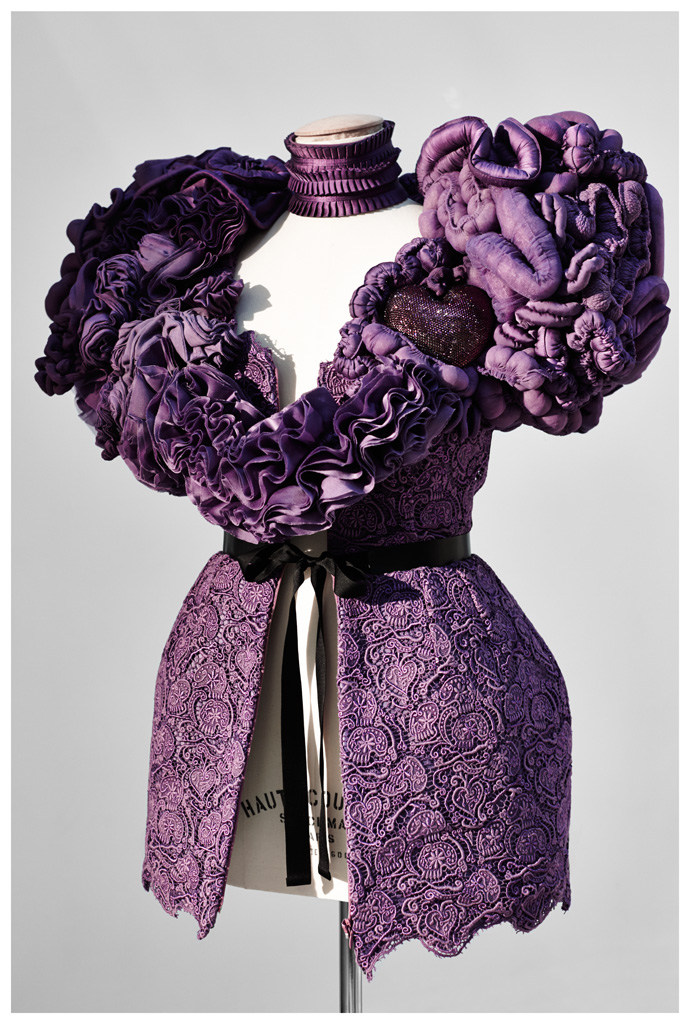
Inside out: Undercover dress with entrails, bone and skull lace, a heart on the right spot for the scary cute. Photo by René Habermacher.
The show at the intimate venue of the Institute Pasteur started with much delay, yet the undercover flock of disciples, among them the devoted Grace Coddington, awaited patiently what was to come from behind the antique glass-panelled doors: scary kittens with bunny masks on ponytailed shoes, wearing their insides out, ribcages and organs on outer display. Skeletal hands grasping waist lines, vintage lingerie elaborately piled-on to sleeveless evening jackets. Little dresses with what seemed to be ruffles at first glance, turned to be a romantic interpretation of entrails slung around the décolleté and a sparkling crystal studded heart.
Surprising,- or in the case of Jun Takahashi actually not- the arch from the drama of the unique pieces to the extremely wearable parts of the collection: googly eyes on a waxed trench coat, or the return of Undercover’s signature pieces, the perfecto, and the trench, with double collar and worn as a dress.
This is where the strength of Jun’s subversive vision lays: there is no friction between the everyday pieces and the elaborate constructed parts of his universe. Seamlessly he migrates between outfitter to the urban hipster to action art performer creating his giant Grace dolls from vintage plush toys in front of a bedazzled audience. The Graces, creatures from outer space were originally created for the presentation of the Undercover collection SS09 became somewhat of the labels mascot.
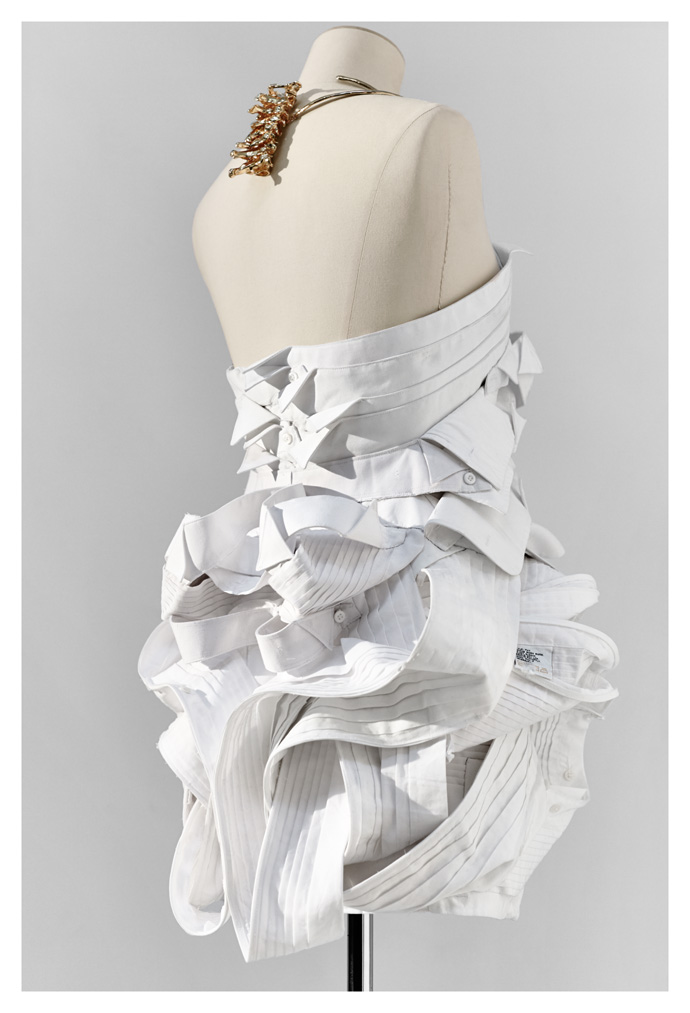
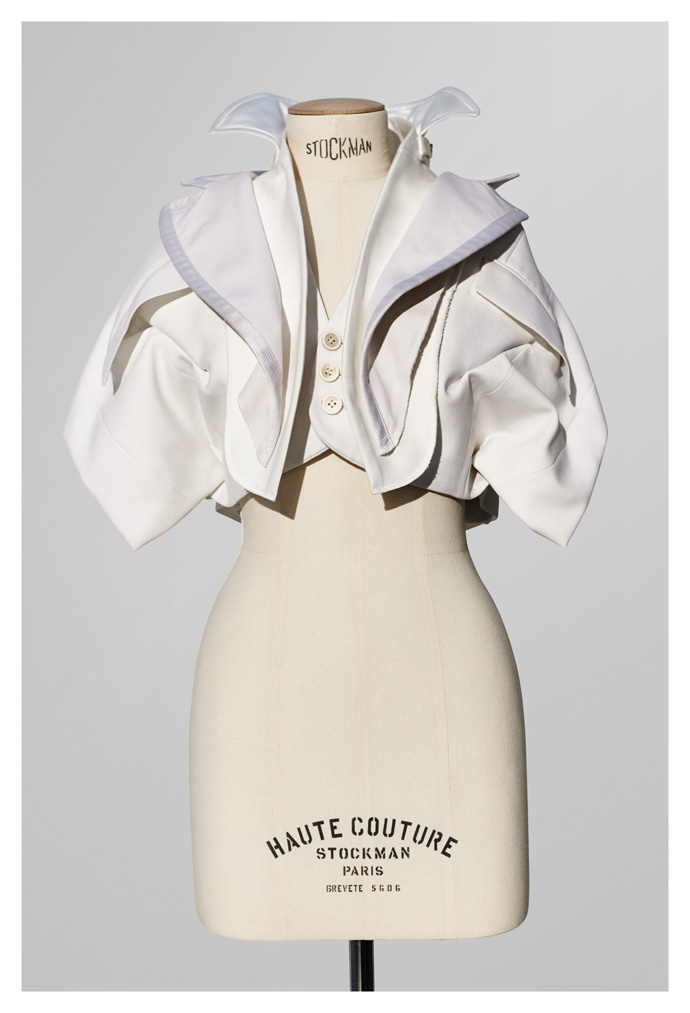
Starch undercover: special pieces made from deconstructed men's white shirt collars. Photo by René Habermacher.
René Habermacher: How is it to be back in Paris?
Jun Takahashi: It’s very exciting! Its been two years since we had the last show, so I am so happy!
You received well deserved great critics for this show of return.
how did you start with this collection, and how did it evolve and what is the narration?Last season when we came back to paris having just the showroom, I made seven special crafted pieces. It’s been a while since I’ve made such a creation and enjoyed it a lot.
It was just for the showroom, but this season i wanted to present a collection on the runway to show it to a broader audience. That’s how I started this collection.
The theme of the collection is about internal organs and bones, showing something from the inside exposed to the outside. Like lingerie that is usually hidden underneath, I used to make dresses and so expose them to the outside. That’s kind of the theme of the collection.Why did you decide at this moment to take the inside to outside?
I don’t know why (laughs). It’s been a while I wanted to show the “inside”. This is very undercover. It’s easy to express “Undercover”.
The motifs of organs and bones have something grotesque and scary in peoples minds. I take this and make it cute. It’s about both sides: not just scary, not just cute. we have both sides in the brand.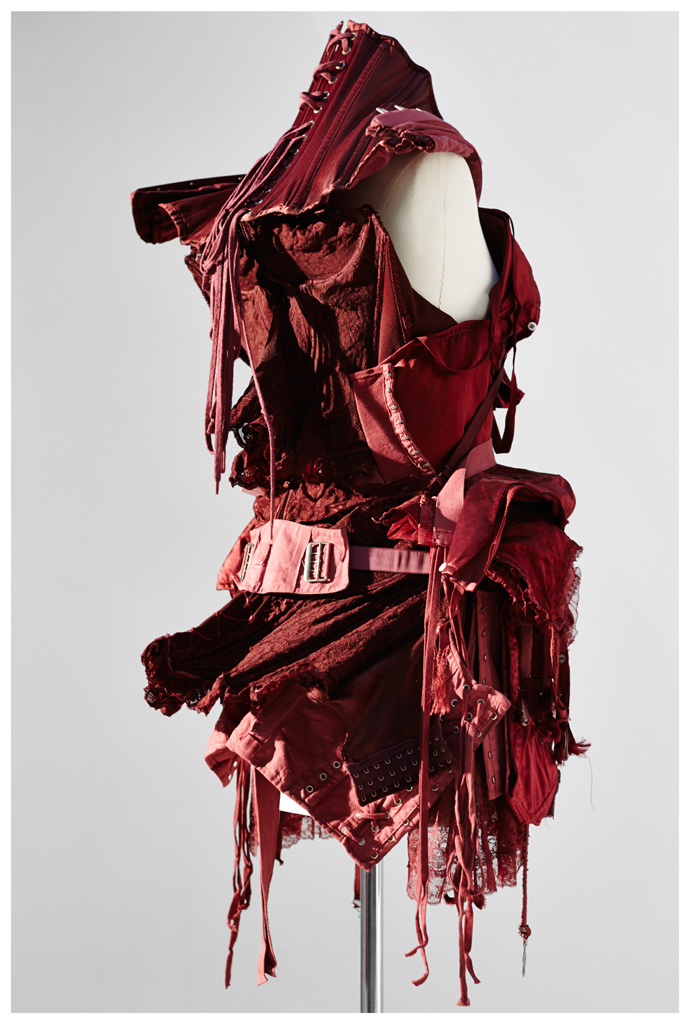
Pile-on vintage lingerie evening jacket. Photo by René Habermacher.
Are you a story teller?
(laughs) To me show is one big story, one drama, one stage. In a way I am not just making clothes, but one big tale, a story.
Since I was little I preferred the scary stories. I like Hitchcock movies. I am not necessarily into the ghostly but prefer the mental story.Another aspect is a strong sense of subculture evident in your work.
It is very different today then when you started off. What is subculture for you today?Most of he people surrounding me in Tokyo come from subculture, its a normal thing for me – its music, movies etc. not the mainstream. People in subculture are not specifically specialized in something – they don’t have mass-apeal. I like that. I source from this and then present my version in the “mass-area” like Paris.
Do you think exposure is dangerous for subculture?
The dark side of sub-culture! (laughs)
I take this positive. We always want to have information very quick- and I find this bloggers taking snapshots in the street very interesting, it’s really like I use the internet. How quick they are, it’s impossible for the print to catch up. Myself I like to post on Facebook and use the internet as a communication tool.Is the “season” still relevant to you?
When I design i don’t really think of the season. But when it comes to selling, we have to take this into consideration. For example in Japan we start selling FW collection in July, which is very difficult to sell Winter clothes because its still very hot for another 3 months until October. So we have to think about the balance between the creation and the business. So that’s difficult. We cannot completely ignore the seasons but not only thinking about seasons.
The runway shows’ timing are getting earlier and earlier and it takes time to actually get in the store.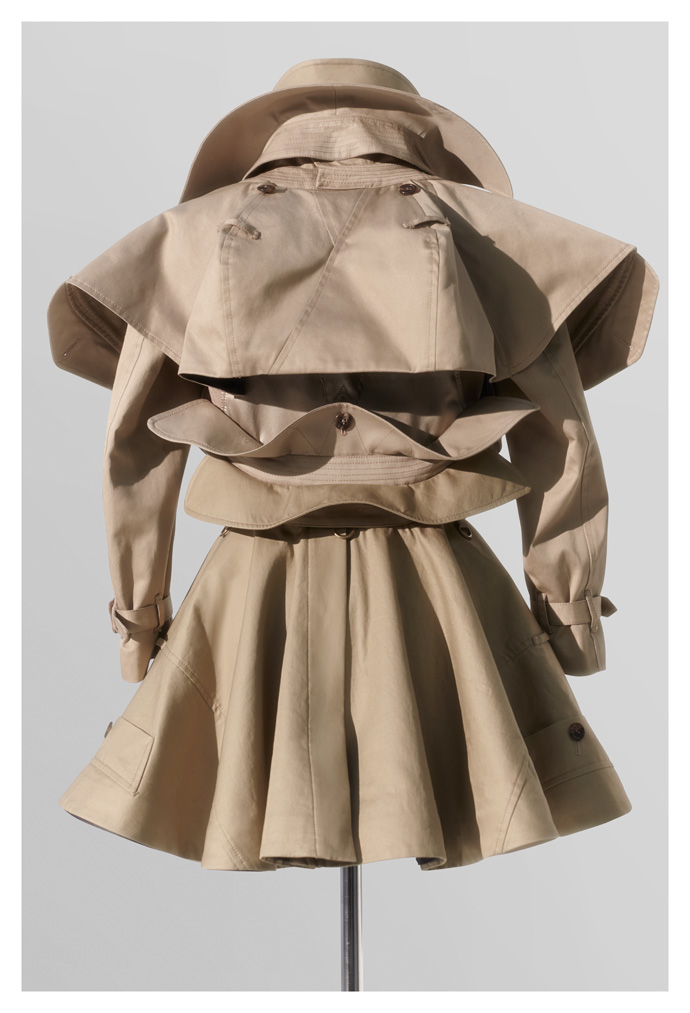
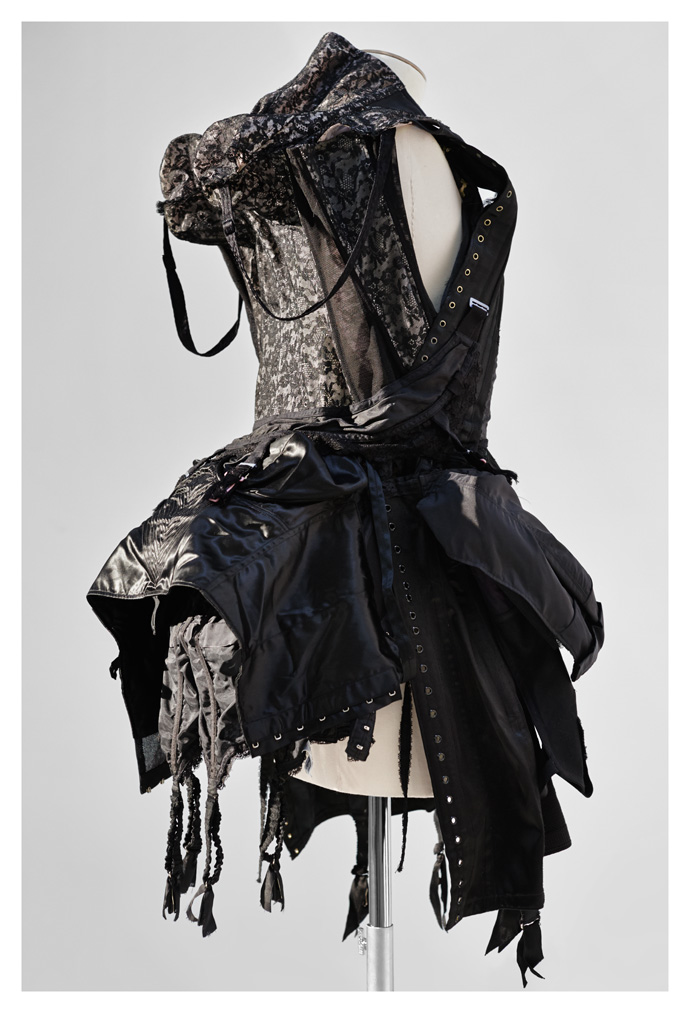
Undercover signature: the trench. Right: Pile-on vintage lingerie evening jacket. Photo by René Habermacher.
How is Japan to you today with the changes the country had been affected with the tsunami and the Fukushima incident especially?
Since the disaster was such a big thing and with the economical situation everybody’s feeling was like “hit the bottom.” We cannot be worse anymore. But now the people are actually trying to go up to be positive, they step back and reflect what can we do to recover from such a disaster. Maybe the government is not helping us that much, but people are trying to do something themselves, try to get the economy back and be positive.
How do you imagine the future your kids are growing up into?
They are little kids right now, but they are starting to have their own will where they wanna go. I am not so worried about them because they will find a way by themselves. We’re concerned about the future and the nuclear problem in fukushima, the earthquakes and what kind of effect this will have on us, but my kids will find their own way so I am not too much worried.
Are you still telling your kids stories of Grace? How is Grace, will we hear again from your creature?
I will continue with Grace- but Grace is not for little kids. They get a little scared… with one eye and all that.
I have a Grace doll in my house but at the beginning the kids were a little scared.But if you were a kid you would not be scared…
It’s scary – but there is an attraction too!
What’s next?
Showing the next collection in Paris again!
What is the last thing that stimulated you?
So many various things! conversations with friends – it’s not just one – it’s many different things.
I absorb everything. Family and friends are important. It’s important to have close friends that are straightforward in their opinion what they think about me, instead of just hiding things. It’s important to me to listen to them. A lot of my friends are creators, photographers doing their own thing. Their opinion is very important to me.
As I get older I get inspired and stimulated by more and more things. I can accept anything like a bus ticket.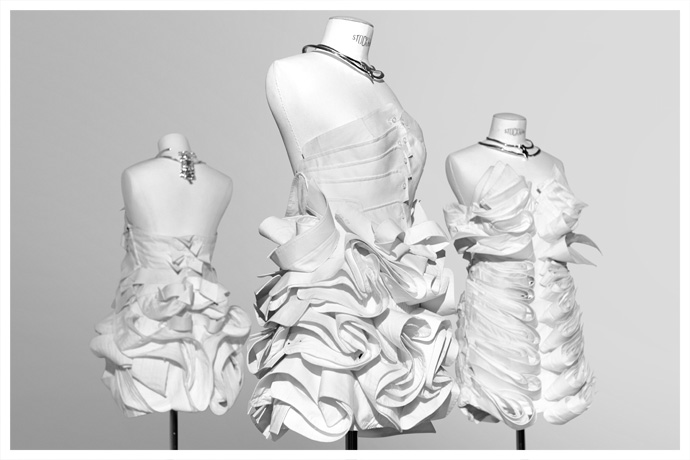
Trilogy in white starch: dresses from deconstructed men's white shirt collars. Photo by René Habermacher.
http://www.undercoverism.com

john lawrence sullivan : in the ring
-Tokyoite Arashi Yanagawa, the man behind menswear label John Lawrence Sullivan, has quickly become a fixture of the men’s fashion circuit.
The choice of name for the label is perhaps the most telling. John Lawrence Sullivan, the man, is a heavyweight boxing champion, also known as the “Boston strong boy,” and godfather of sorts to Arashi, who quit a promising boxing career to fight in another type of ring.
Ever since entering the seasonal arena of fashion week in Paris, he’s championed his collections in the eye of attention, with the likes of Suzy Menkes a constant follower. In this context, Arashi’s unconventional vision of the sharp tailored sportsman is most compelling.
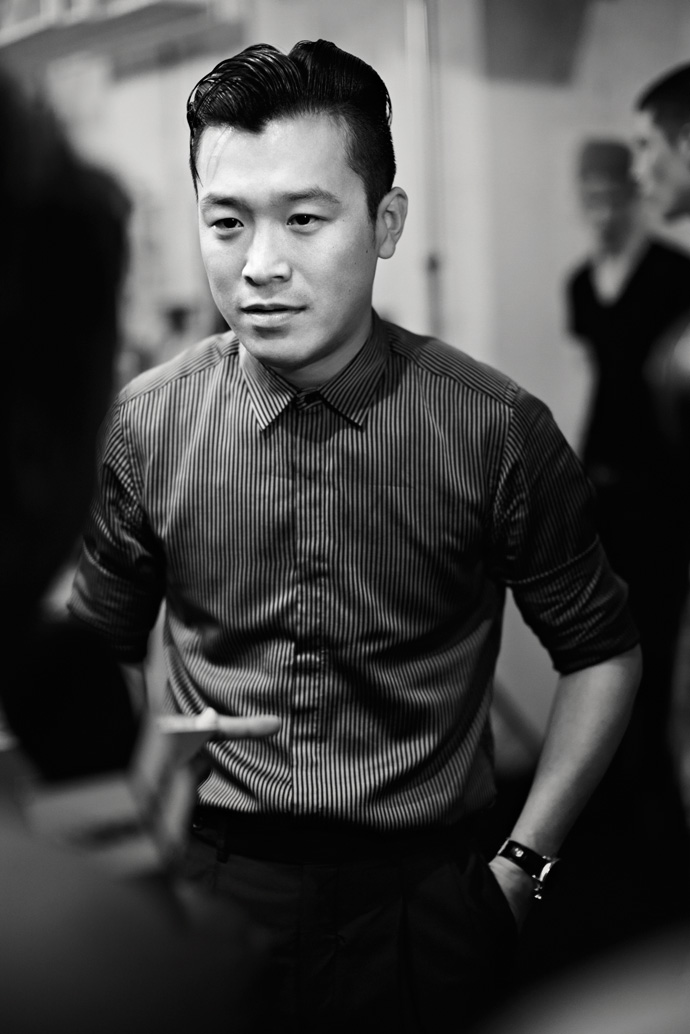 Arashi Yanagawa backstage after his John Lawrence Sullivan presentation. Photography by René Habermacher
Arashi Yanagawa backstage after his John Lawrence Sullivan presentation. Photography by René HabermacherRené Habermacher: Hello Arashi, how is it being back in Tokyo after your last show in the ring fight of Paris fashion week?
Arashi Yanagawa: I’m getting ready for the next match in June. While I’m always relaxed in the end, I also always begin thinking about the next collection right away. It’s exactly the same as in boxing.RH: In your work, specially your most recent collection, I sense a strong fascination with British culture.
but you’re successfully showing your 3rd collection, you chose Paris to present it…
AY: I believe Paris is the most important location for fashion in terms of the both the culture and the history of the industry. Paris has a special eye for beauty and elegance. No other place draws as many journalists, buyers, and fashionistas. All of this naturally makes Paris a very attractive city for presenters, but I also appreciate how strict everyone in Paris is towards creativity.RH: And what is it with you and London?
AY: London has street fashion just like Tokyo, but it also brings history and tradition into the mix. I’m impressed by the way all of this culture has just naturally rubbed off on the younger generations. Another example of something that has really moved me is the culture of the London market where you see young people today buying and even demanding clothing designed a century ago.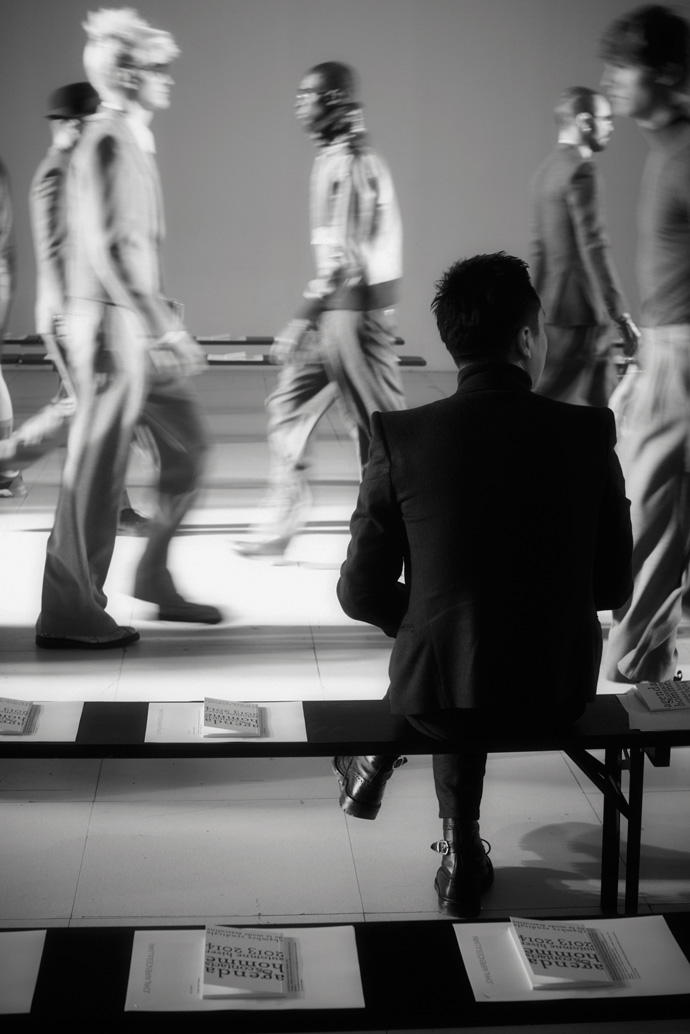
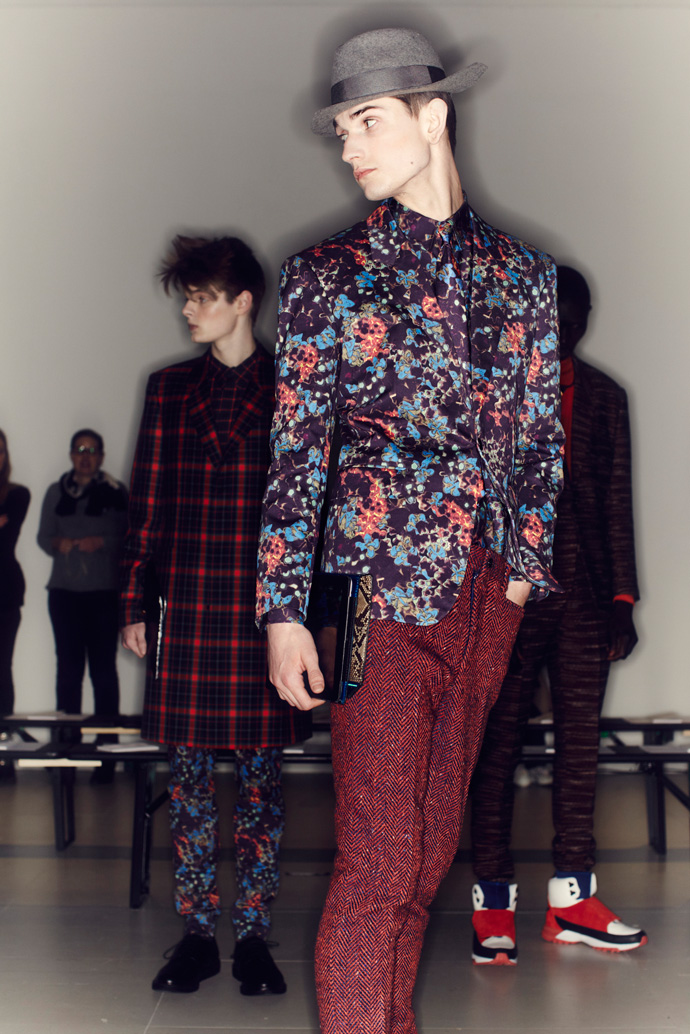 Rehearsals for John Lawrence Sullivan FW13. Photography by René Habermacher
Rehearsals for John Lawrence Sullivan FW13. Photography by René HabermacherRH: how do you decide for what you’ll go next? what is your creative process?
AY: I input the “sense” of the things I see or hear in my daily life and stockpile them. These could be colors, silhouettes, light, or even materials. But, I make an effort to express my own sense of the now rather than just making things based on historical research.RH: For the current summer collection the theme was influenced by the Bauhaus movement.
Why did you feel the urge for this now, and how did you translate that into the clothes?
AY: I had a chance to go to Berlin, so I paid a visit to the Bauhaus school in Dessau and took in the artwork there. I found the combinations of wood, leather, and metal used in the products there particularly interesting, and thought it might be fun to try doing the same things with apparel. So, I made the theme “Bauhaus” and began putting together the collection while referencing architectural cutting, artistic colors, and product techniques.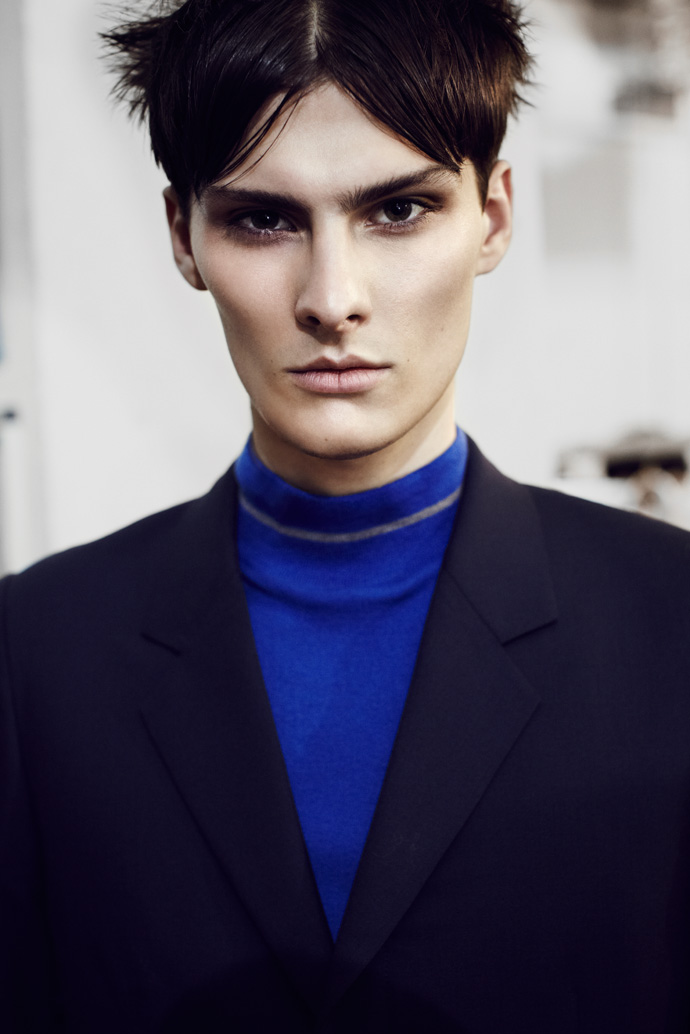
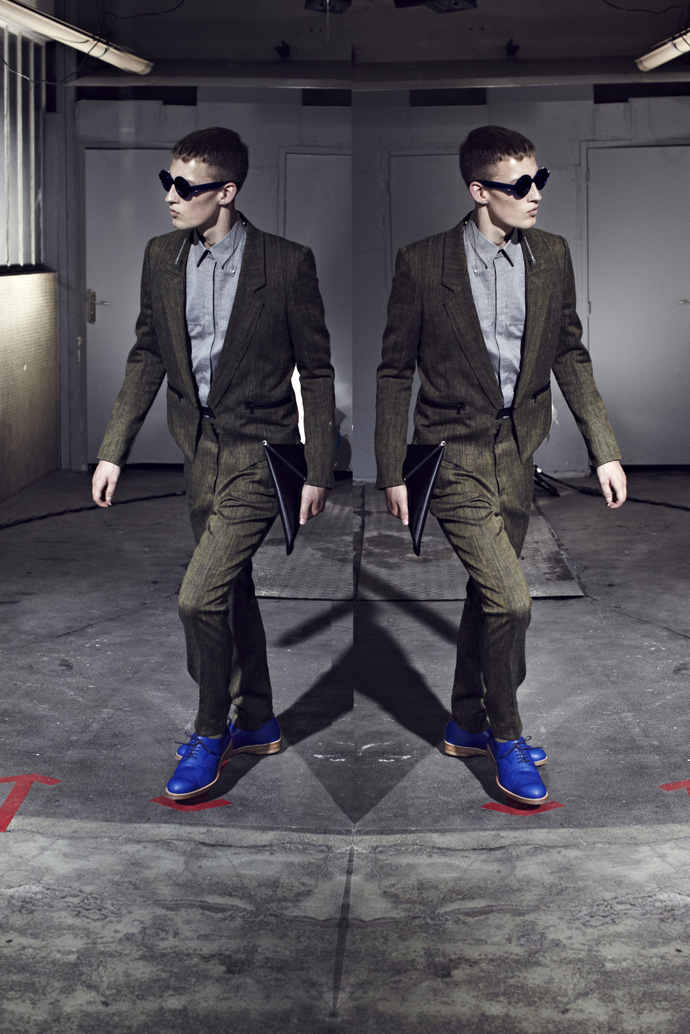 John Lawrence Sullivan's "Bauhaus" inspired collection, SS13. Photography by René Habermacher
John Lawrence Sullivan's "Bauhaus" inspired collection, SS13. Photography by René HabermacherRH: can you tell me more about “ELECTRIC AFRICA”: theme of the collection FW13/14, you just showed in Paris, what ideas are behind it?
AY: “Electric Africa” is a coined phrase. I had the idea to create a new, modern vision by combining tribal patterns associated directly with Africa with flashy colors instead of the standard earth tones. Tribal (triangular) elements were worked into various items and aspects like the cutting of the tailored jackets or the placement of the buttons. I also added a spacey essence reminiscent of the crop circles that suddenly appear in fields to the accessories, colors, and textures.RH: This collection also sports extraordinary footwear. Your sneakers have been hailed throughout. How did this design come together?
AY: I wanted create something akin to sneakers or trekking shoes, so I used Vibram soles. I also combined the base colors of the seasonwith highly contrasting hues in order to bring out a sense of Africa. I worked with a brand called ORPHIC when making the shoes.RH: Since you dropped your boxing for founding your label, fashion in Japan underwent quite some changes. How do you see the japanese approach today, what is your viewpoint and what influenced you over the course of time?
AY: When I started my brand in Tokyo my image was much more aggressive. I feel like back then many of the magazines adopted a fashionable approach, and that the buyers tried to answer the challenges the designers undertook with respect. But, as the economy got worse the magazines switched to much more easy to understand catalog-like appearance in order to make sales, which in turn influenced buyers, whose customers were influenced by this, to become much more conservative in their selections. So, there were a lot of negative things occurring in fashion here. The Tokyo runway shows were no different, as the focus shifted conspicuously to more “real” presentations rather shows with a bit a fantasy or elegance to them. Feeling all of this made me want to do my shows somewhere more stimulating, so I chose Paris.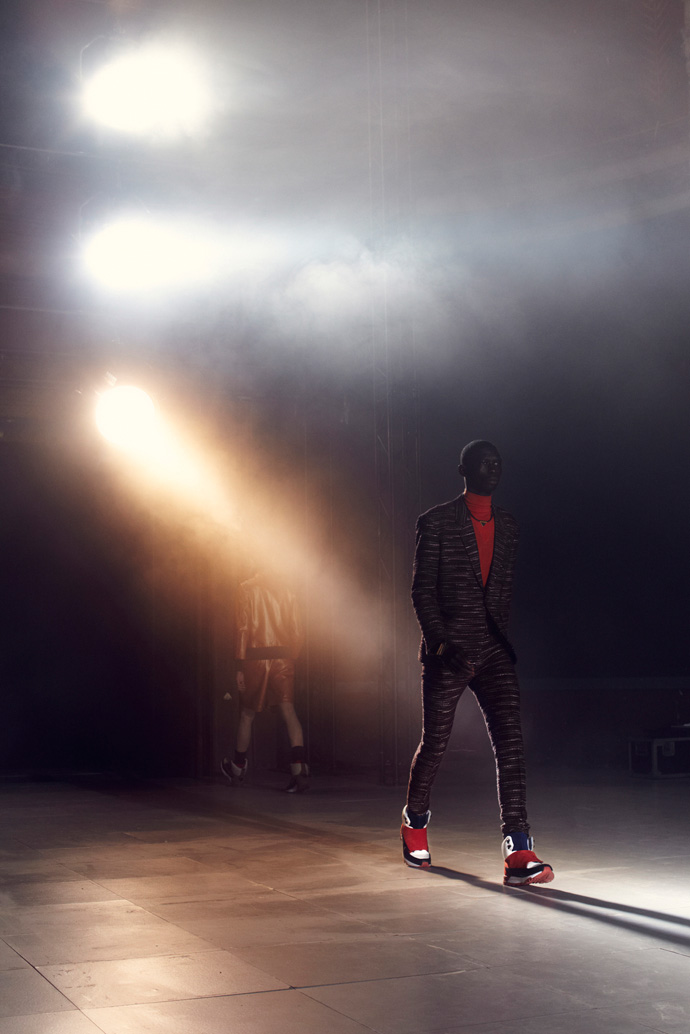
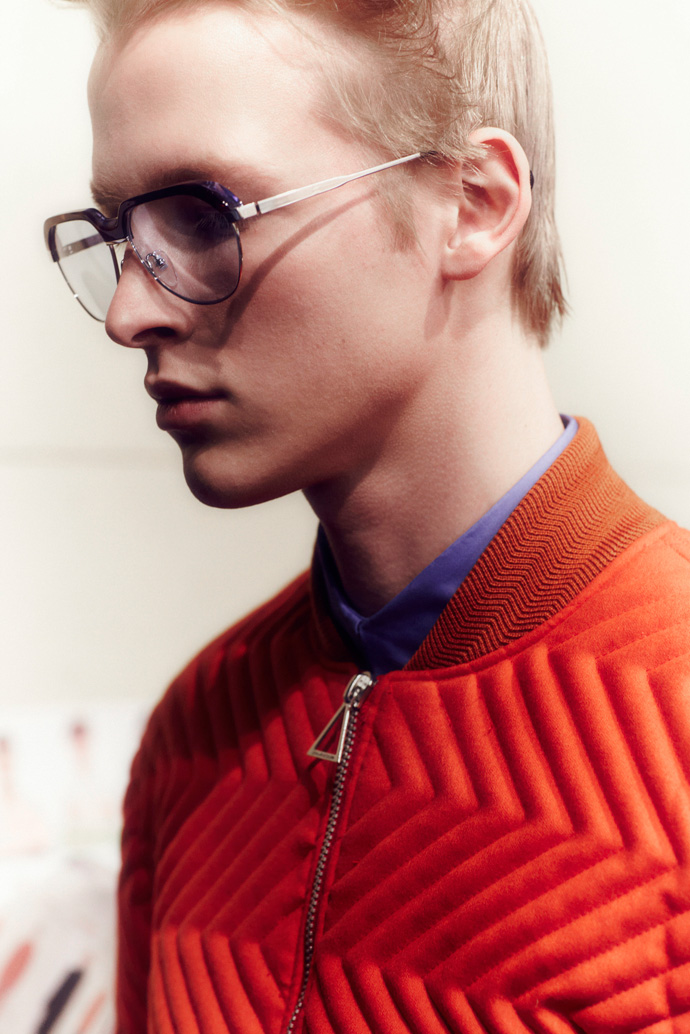 "Electric Africa", John Lawrence Sullivan FW13. Photography by René Habermacher
"Electric Africa", John Lawrence Sullivan FW13. Photography by René HabermacherRH: While developing your collection, are you having a specific type of man in the back of your head?
AY: I always imagine a man who possesses both beauty and strength in terms of appearance and mind. If I were to provide a sportsman as an example, there is a certain boxer who comes to mind…RH: Are there any parallels you can draw between your sports career and the one in fashion?
AY: One thing I realized when I first started working in fashion is that there is a common trait shared by boxing matches and fashion shows that only I seemed to notice. This was the way in which you worry over something that will last only few minutes on a single day for months in advance, battling with your anxieties and, as long as you don’t give up, preparing for the next match as soon as it’s all over regardless of whether you won or lost. The way everything seems so fleeting and transient once it’s all said and done is also the same.RH: The understanding of classic tailoring is a very strong element in your work. Now you started your women’s line: how does this apply here?
AY: Incorporating classic tailoring into women’s fashion is one of the most important elements for John Lawrence Sullivan. This isn’t something just any brand can do, so it’s something we will continue to actively working with in the future. One of the differences between men’s and women’s fashion for me was the way in which things like esthetic elements concealing points I had complexes about confused me a bit at first. Now I feel that I have learned to use men’s techniques to deal with these things.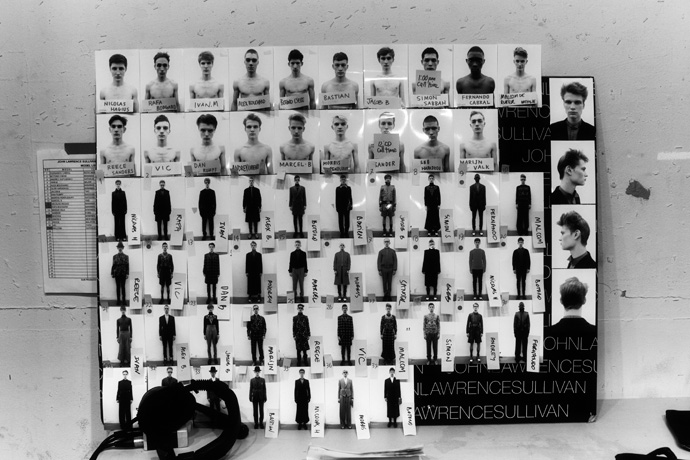 Showboard with looks and cast for "Electric Africa". Photography by René Habermacher
Showboard with looks and cast for "Electric Africa". Photography by René HabermacherRH: As you added another collection to your house – your work wheel must spin faster evidently, with 4 instead of 2 presentations.
AY: I always think of how I can break down the restrictions of the tailored look when I do my men’s designs. While there is the sense that I can be confident in breaking these restrictions down precisely because they exist, but with women’s my process is one of imposing my own restrictions on the things I design freely. So, there is a sense of mutual stimulation between my men’s and women’s lines that has been a good influence in my opinion. That said, I am definitely much busier than before…RH: Do you feel urged by the increasing numbers of pre-collections and cruise collections that the big houses lately launch?
AY: This is most likely just a sign of the conservative sales trends we’re seeing worldwide right now.The big houses are just doing this as a way of making sure they continue to pull in revenue. I too feel that JLS must do the same if we are to continue showing in Paris, so I’ll be considering various strategies for this in the days to come.RH: With clients all over the globe in different climate zones: do “season oriented” collections make still sense to you? (already the weather in Japan is quite different to the north american or european)
AY: Breaking things up by season allows designers to change up their mood and add depth to the presentation, so I most definitely think it has meaning. But, I also feel that in terms of actual sales it is often seasonless items that perform the best.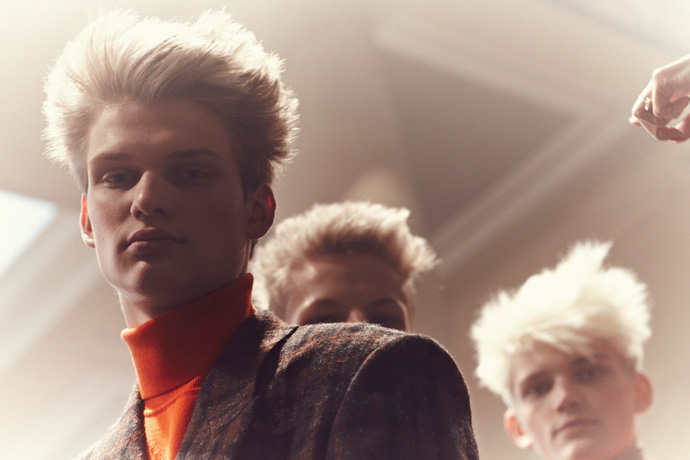 "Electric Africa", John Lawrence Sullivan FW13. Photography by René Habermacher
"Electric Africa", John Lawrence Sullivan FW13. Photography by René HabermacherRH: How do you perceive the present of fashion?
AY: I think what we are seeing is a mixture of various styles coming together.
This is also exactly why I feel that you can’t make it in this day and age unless you believe in yourself and keep making bold presentations. I guess you could say I feel we’re in an era where only the essentials survive. I want JLS to continue to be a brand that always takes up the challenge of presenting in Paris.RH: What is up next?
AY: The designs for my women’s exhibition in March and preparations for the 2014 S/S season.RH: What is the last thing you saw, read, heard or felt that stimulated you?
AY: Tadao Ando, James Turrell, Donald Judd, Taro Okamoto, Talking Heads, Pixies, David Bowie, Wes Anderson, Jim Jarmusch, Kinji FukasakuWebsite: John Lawrence Sullivan

